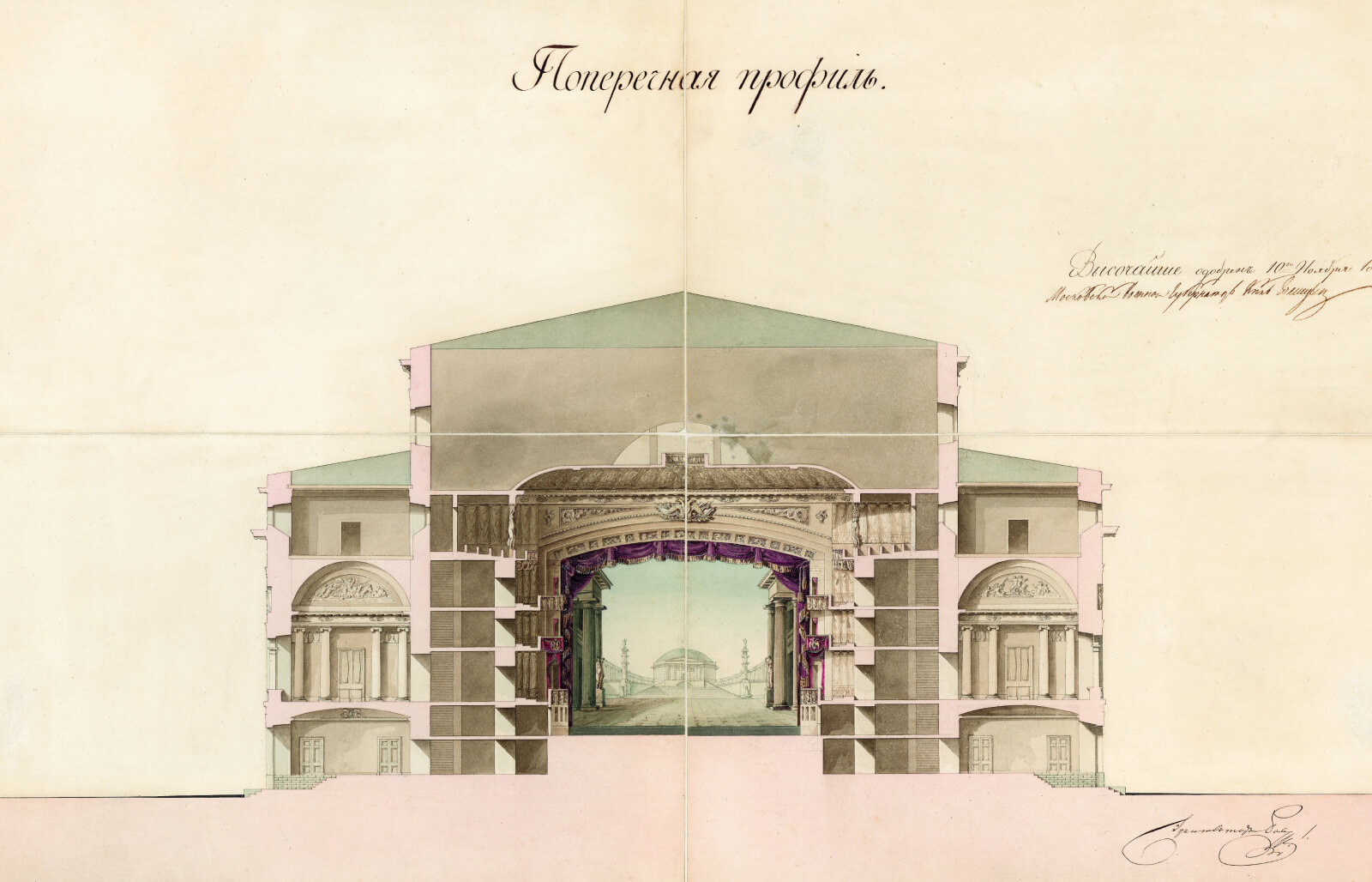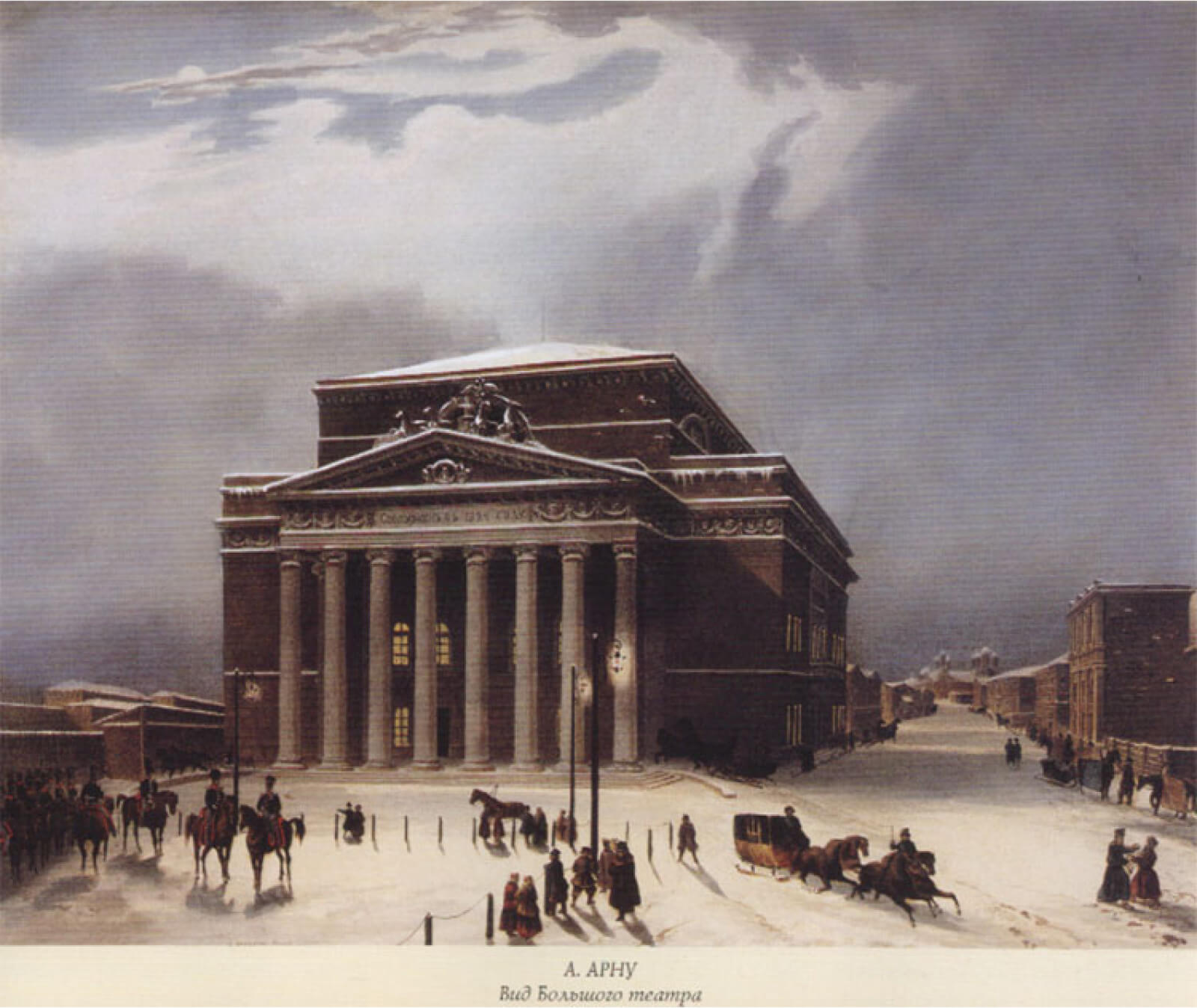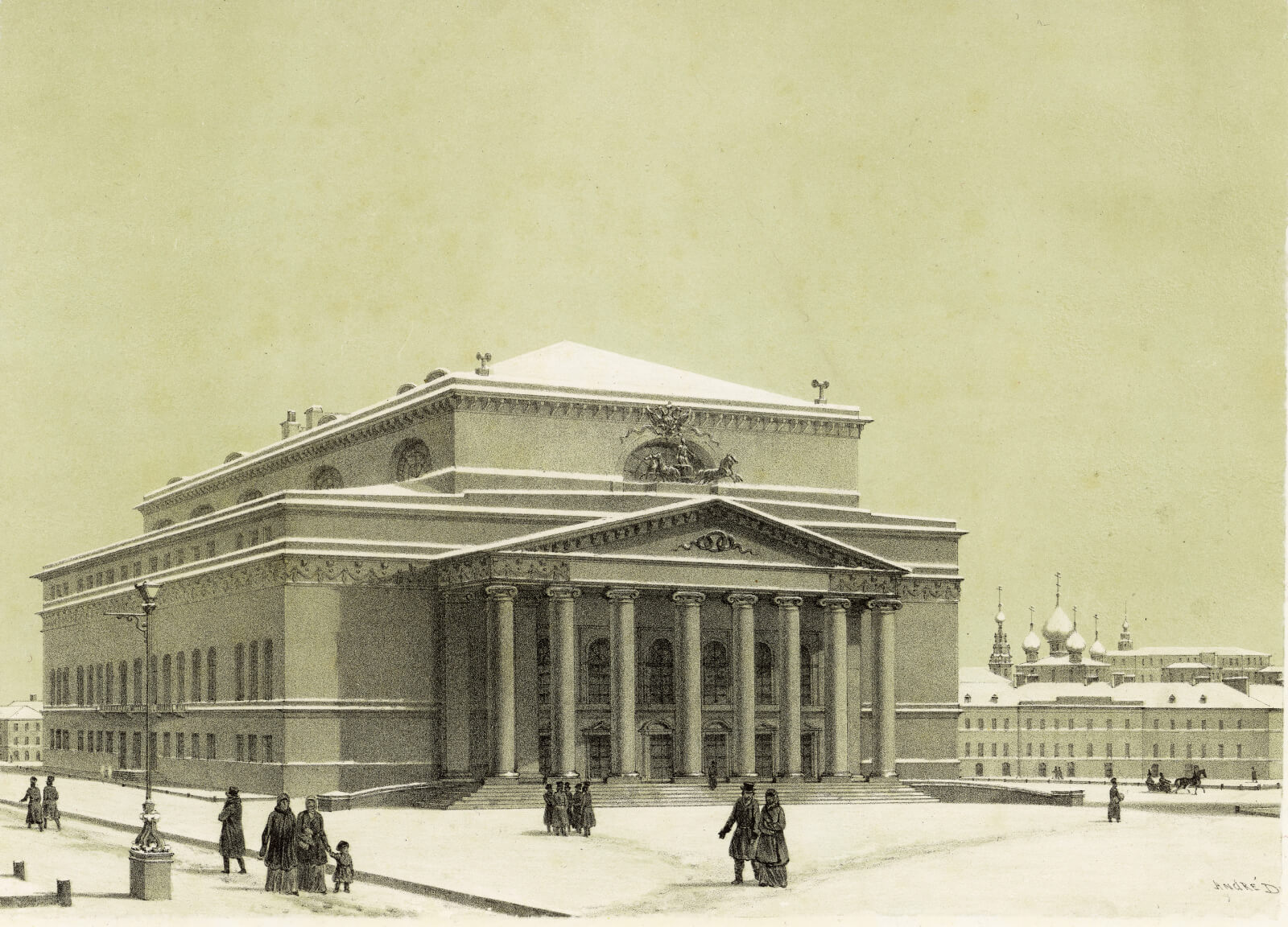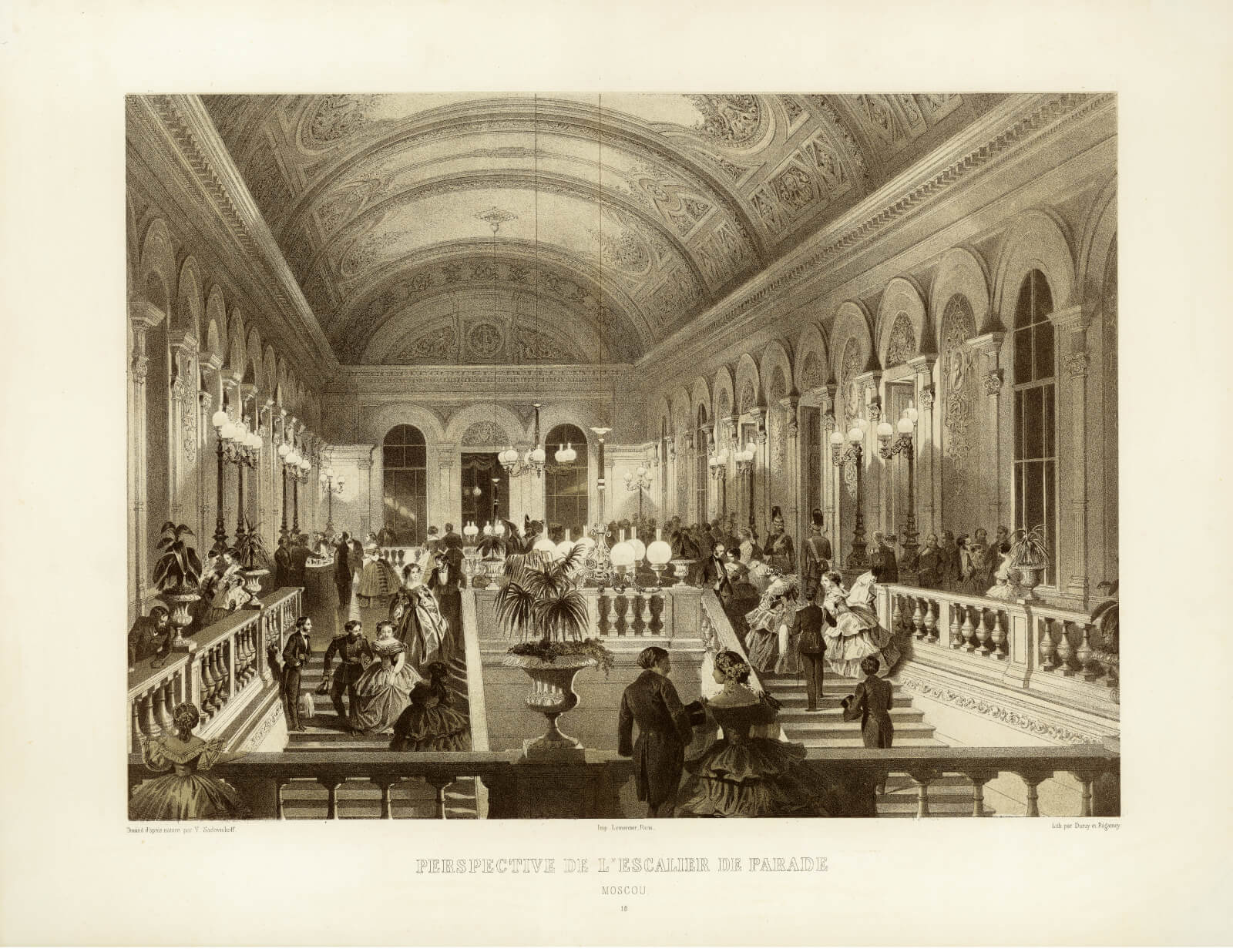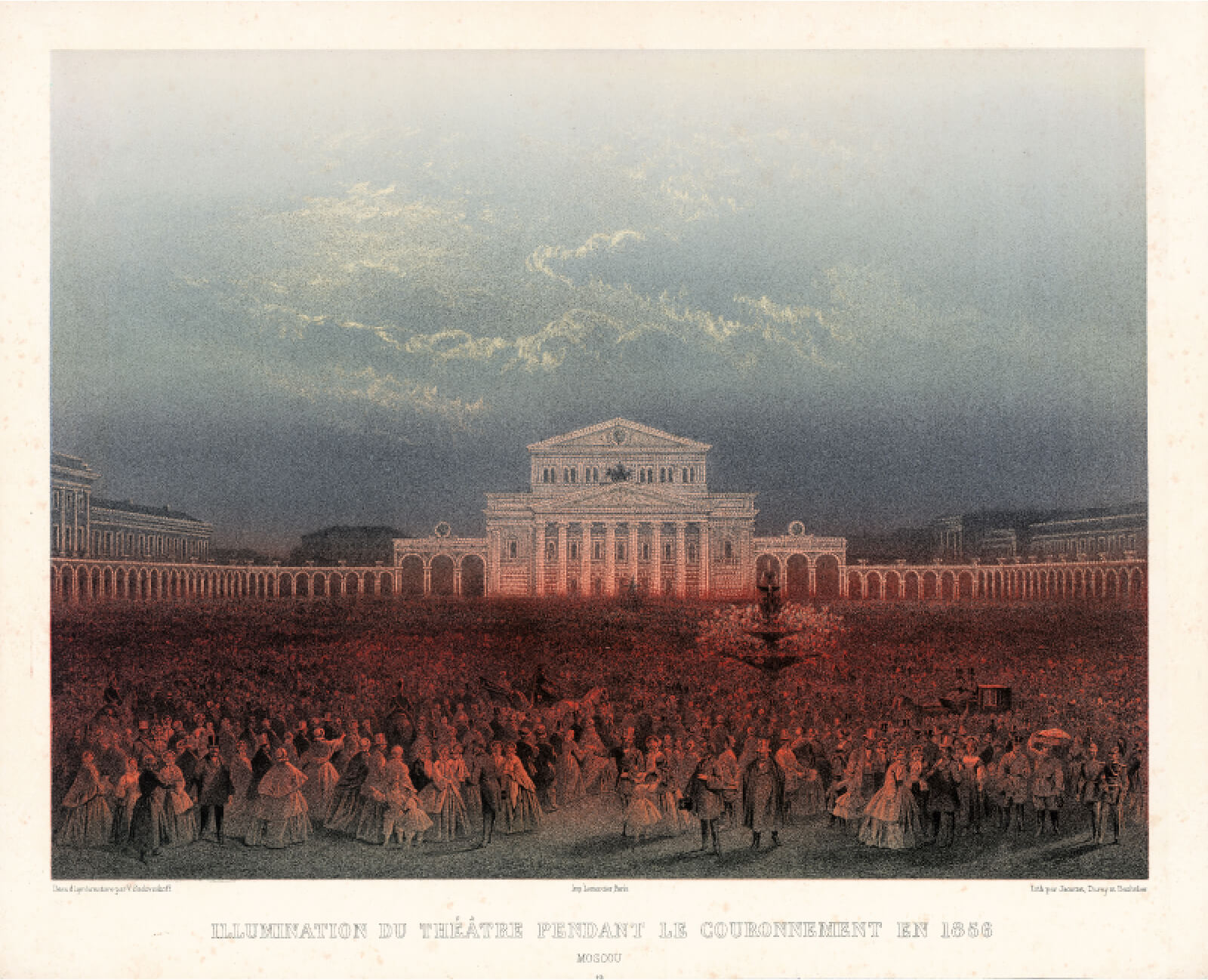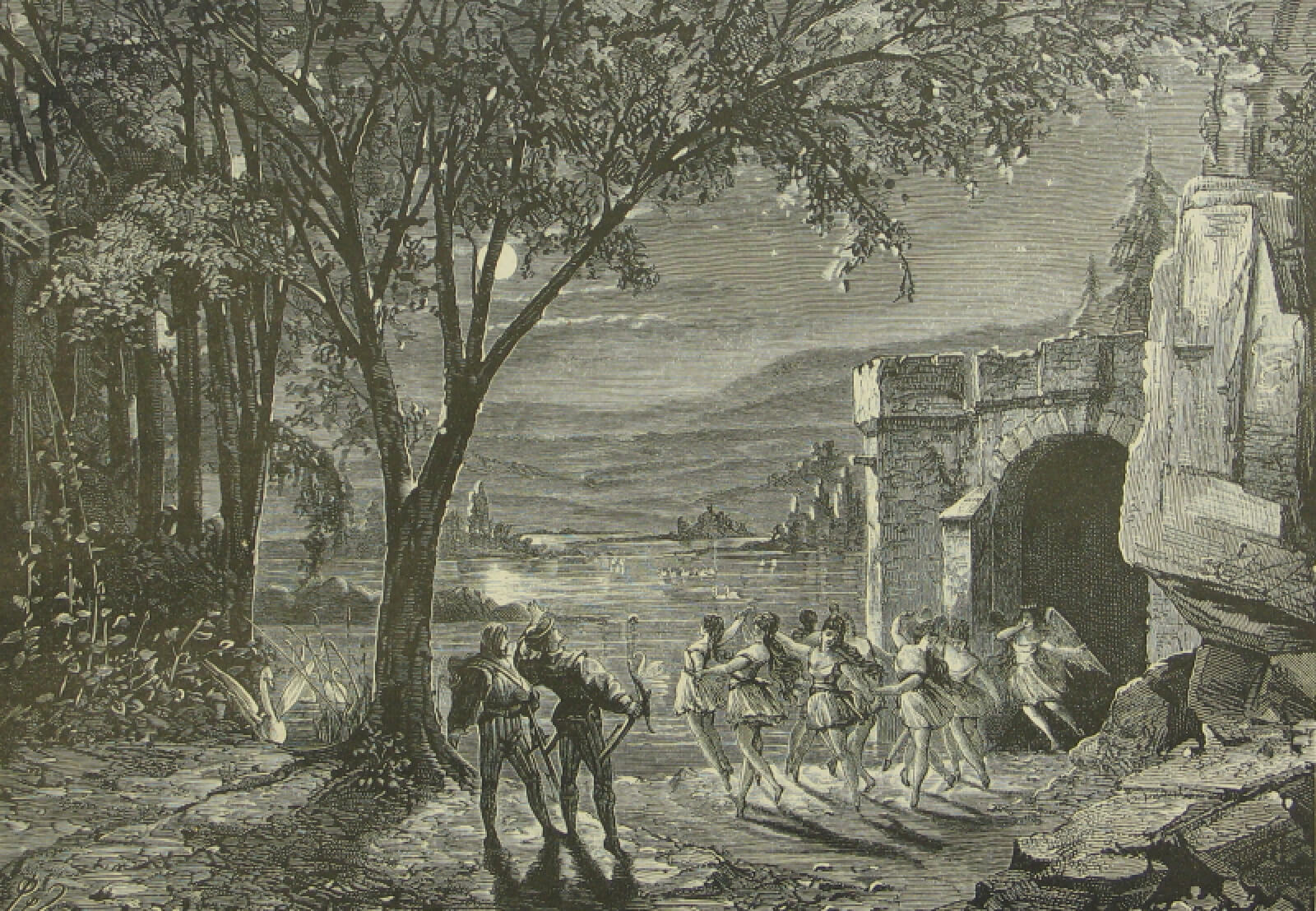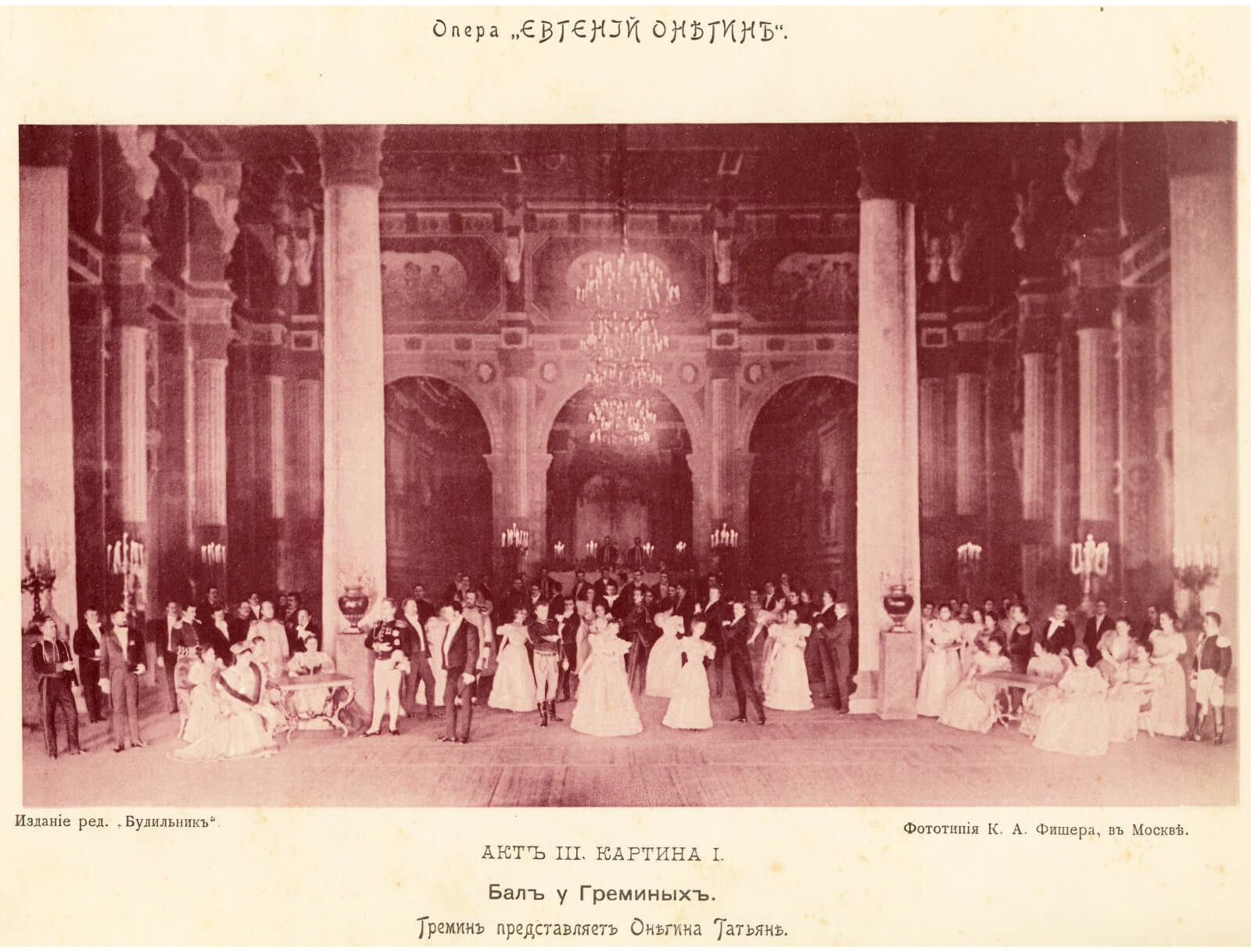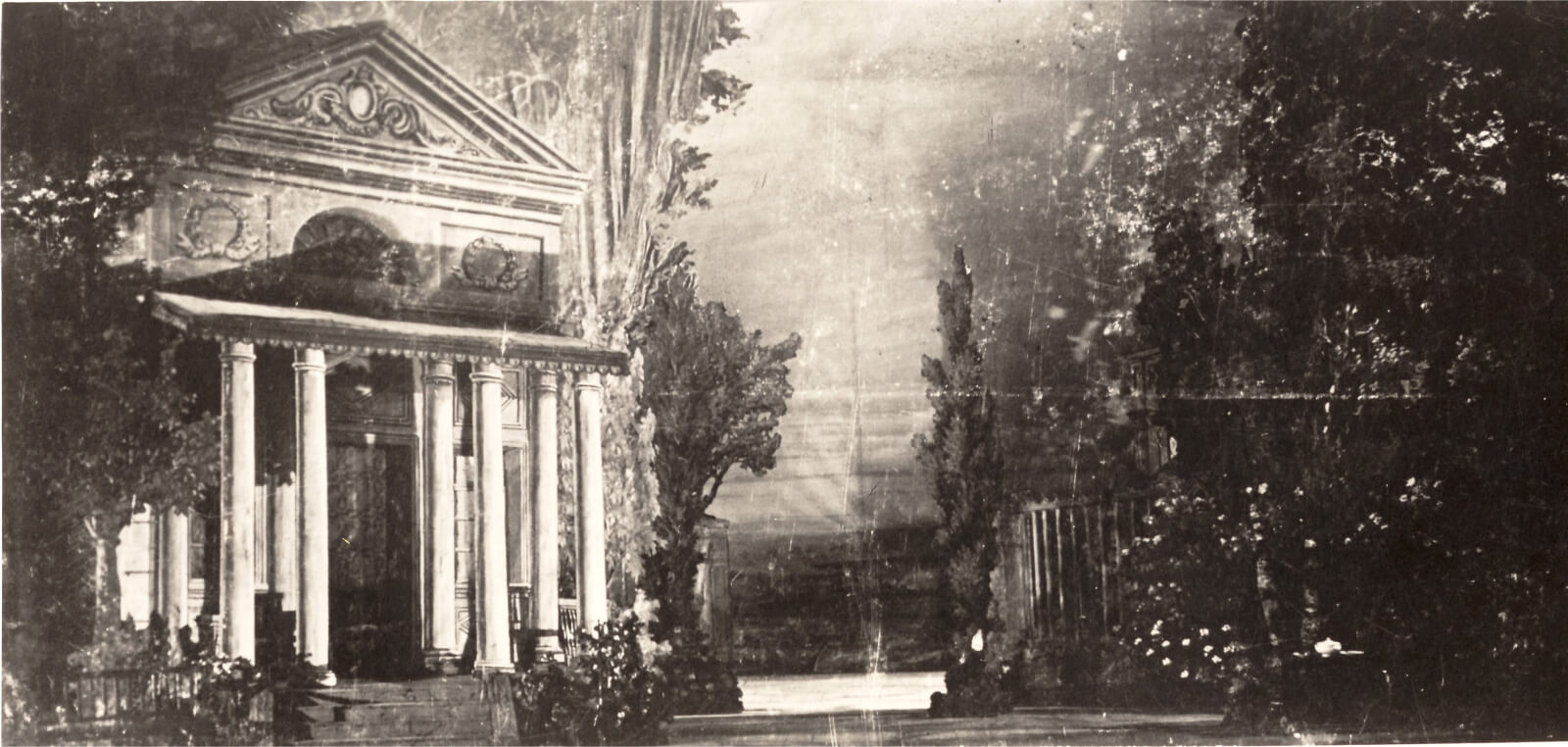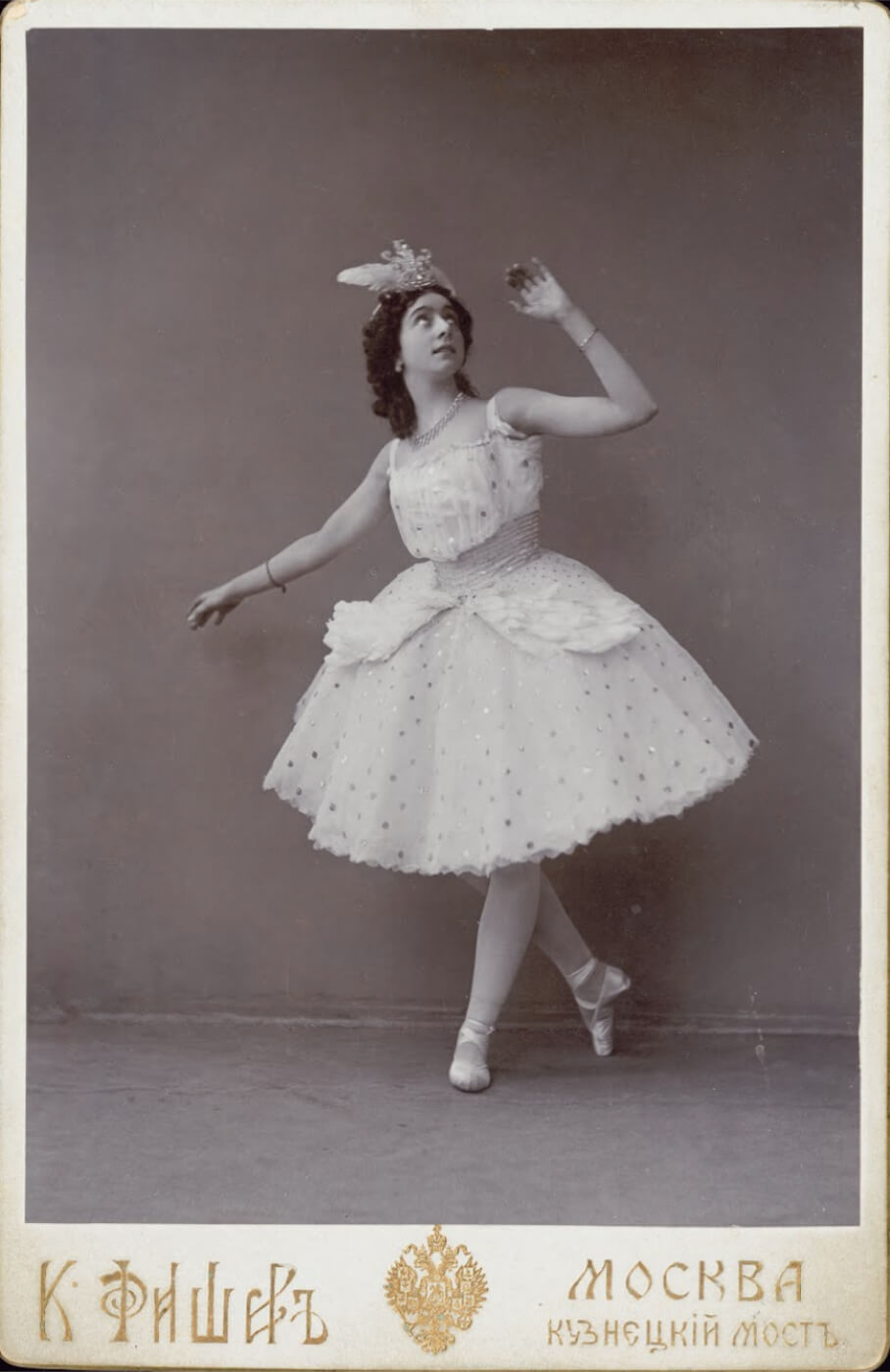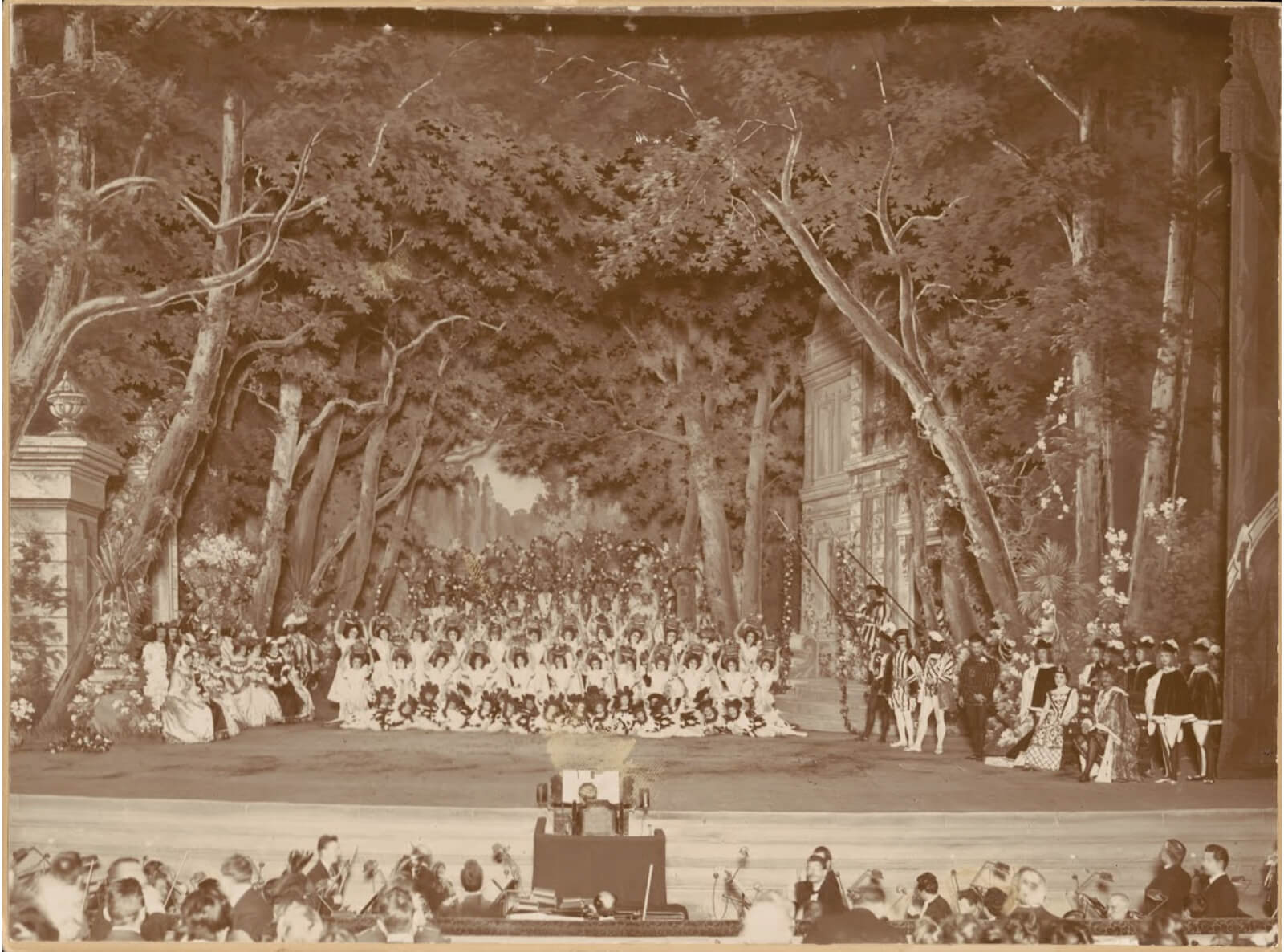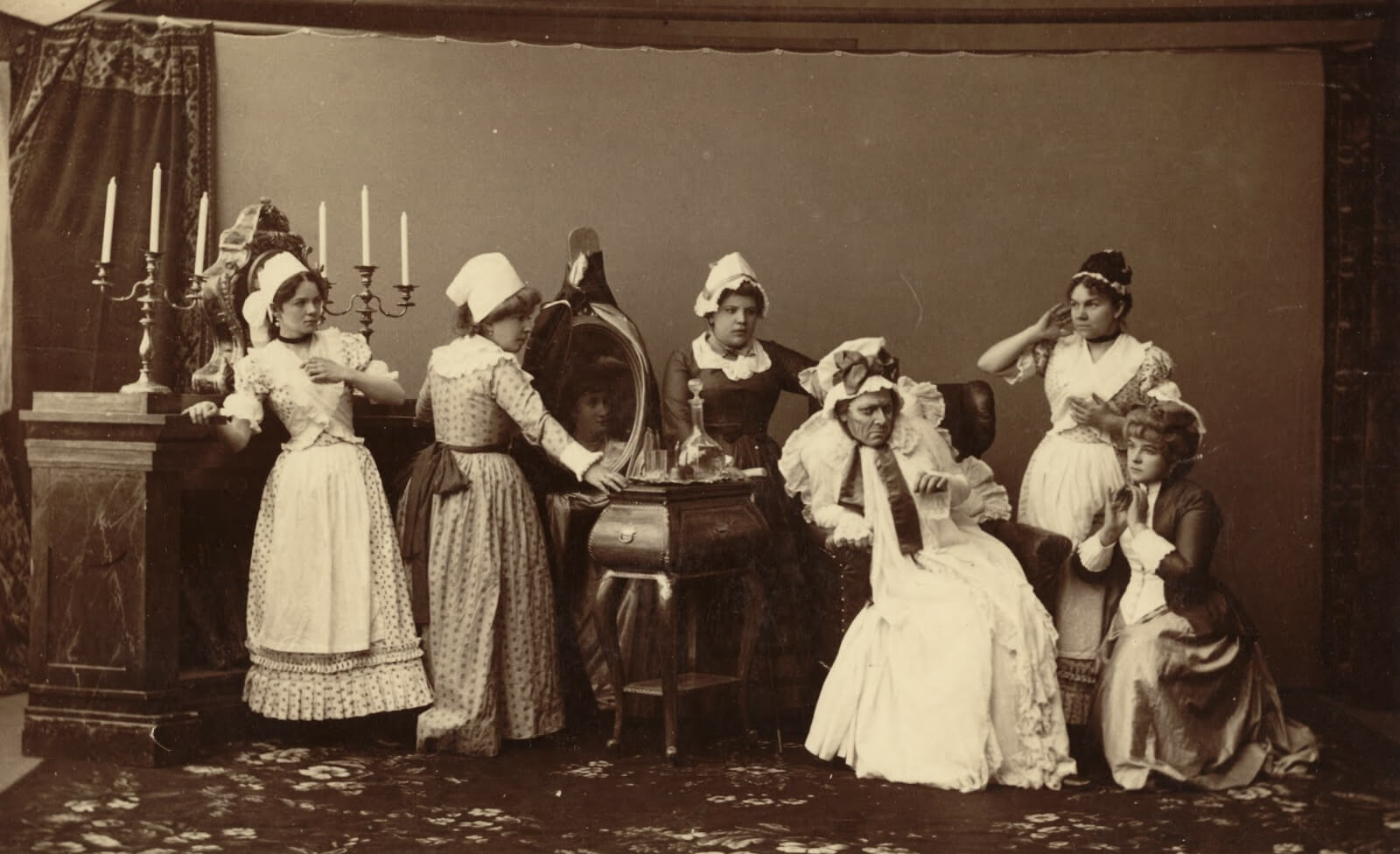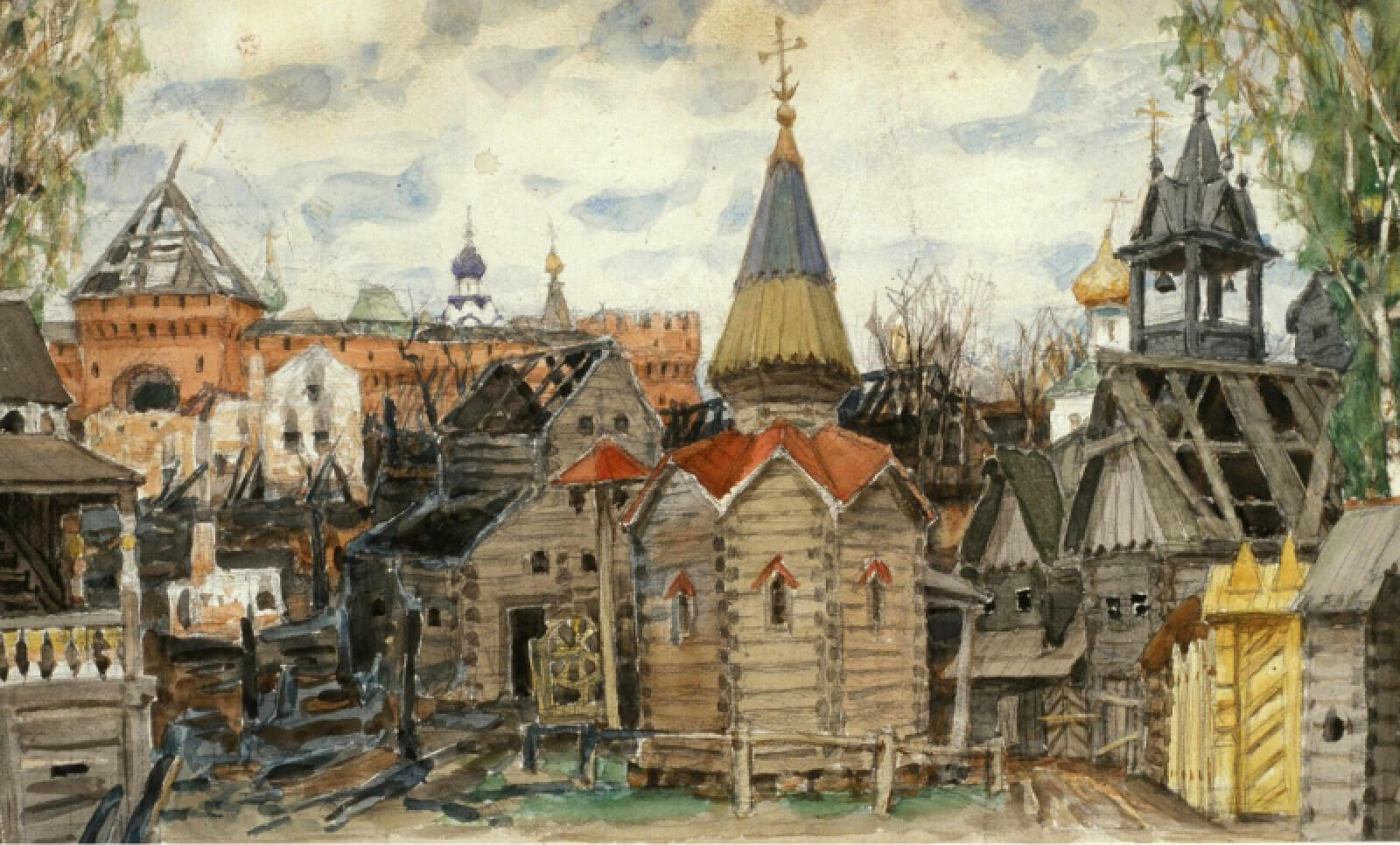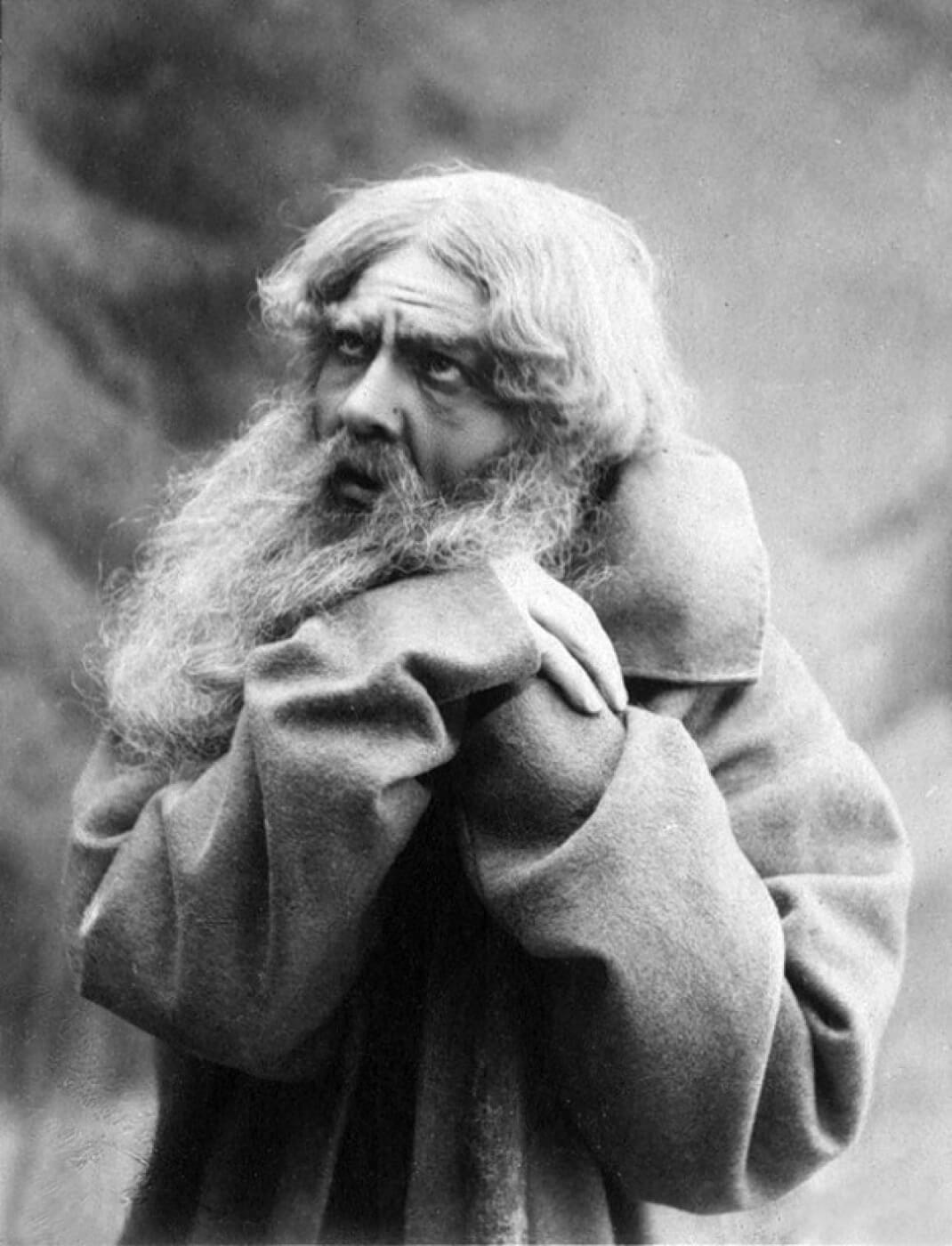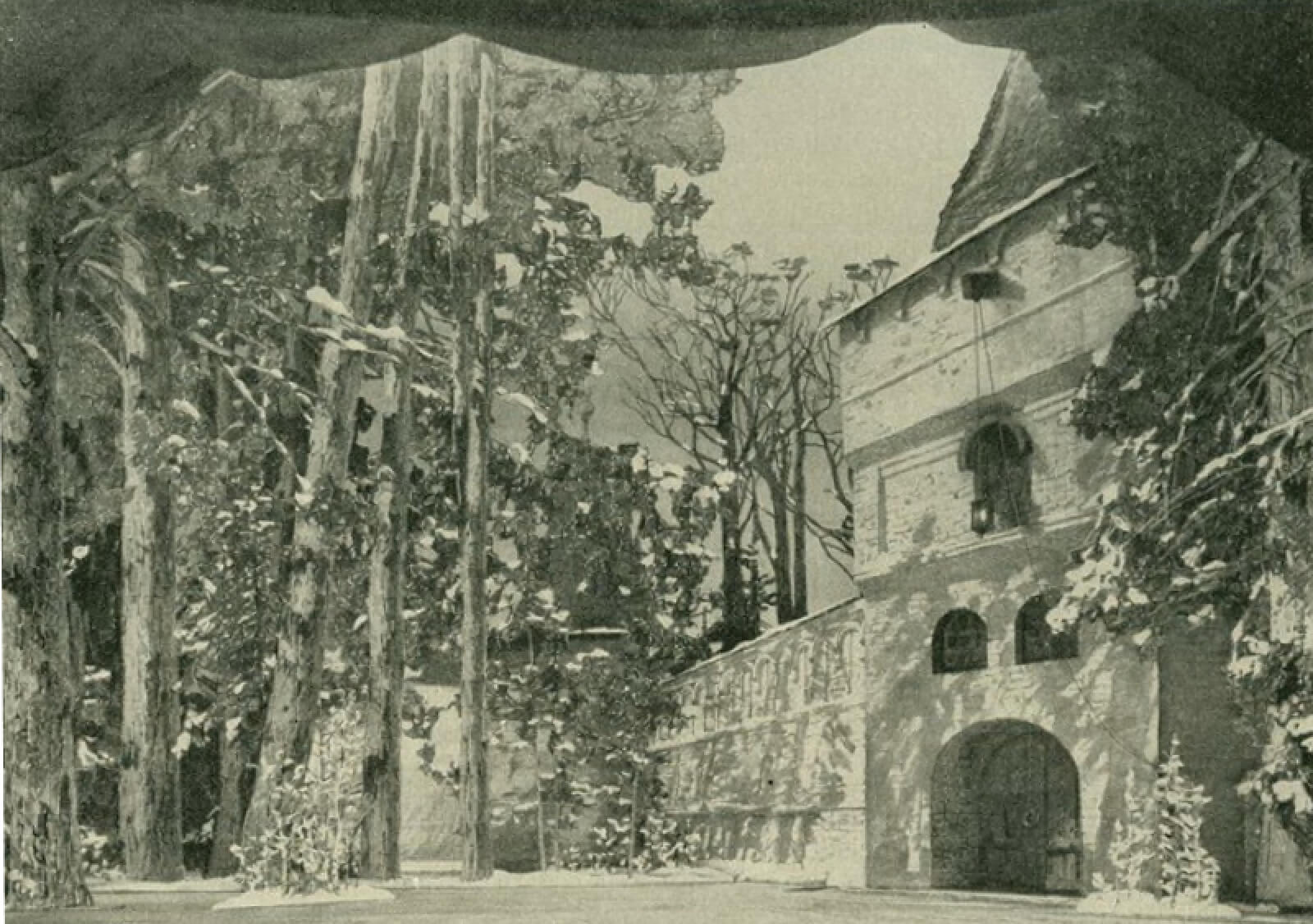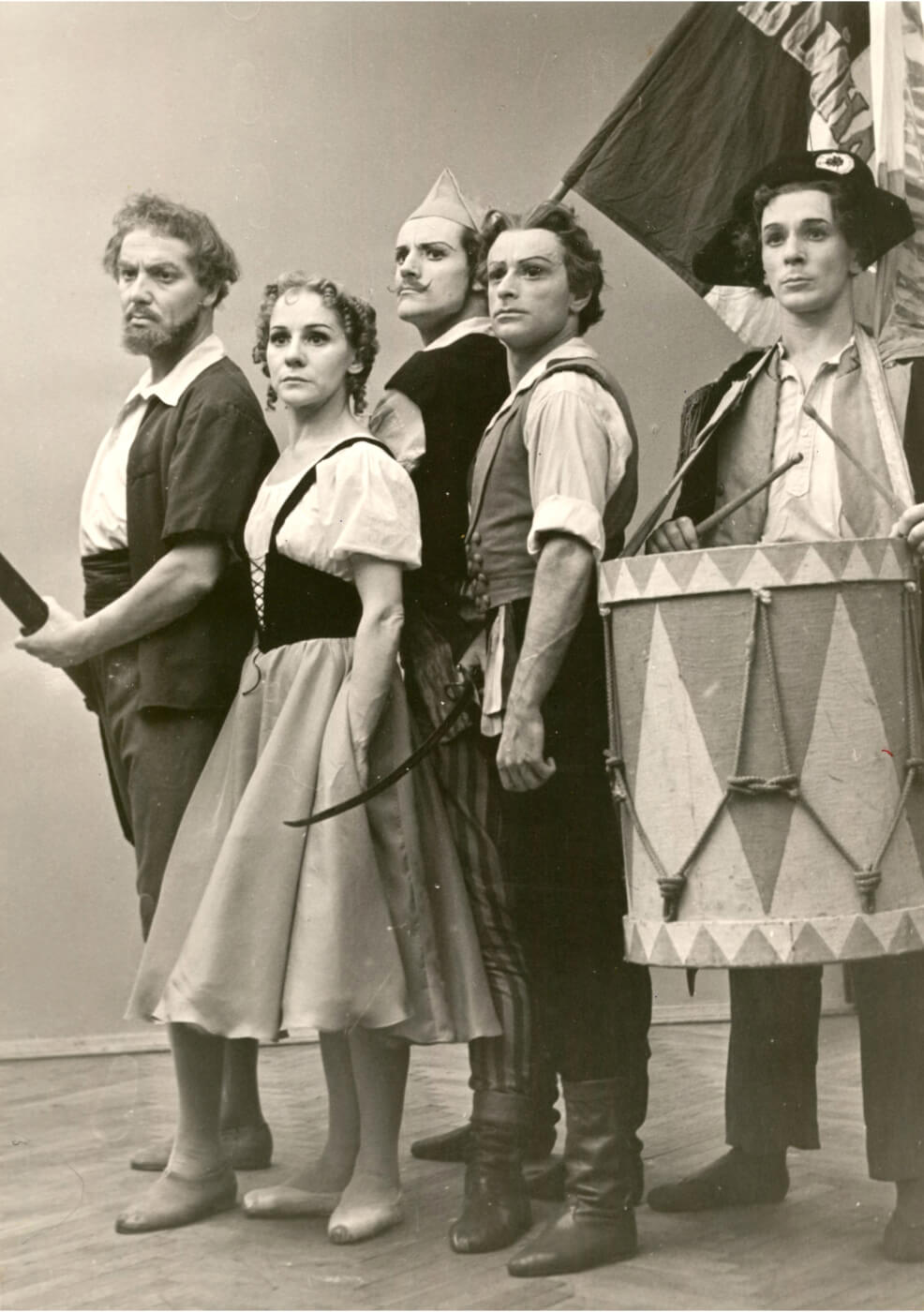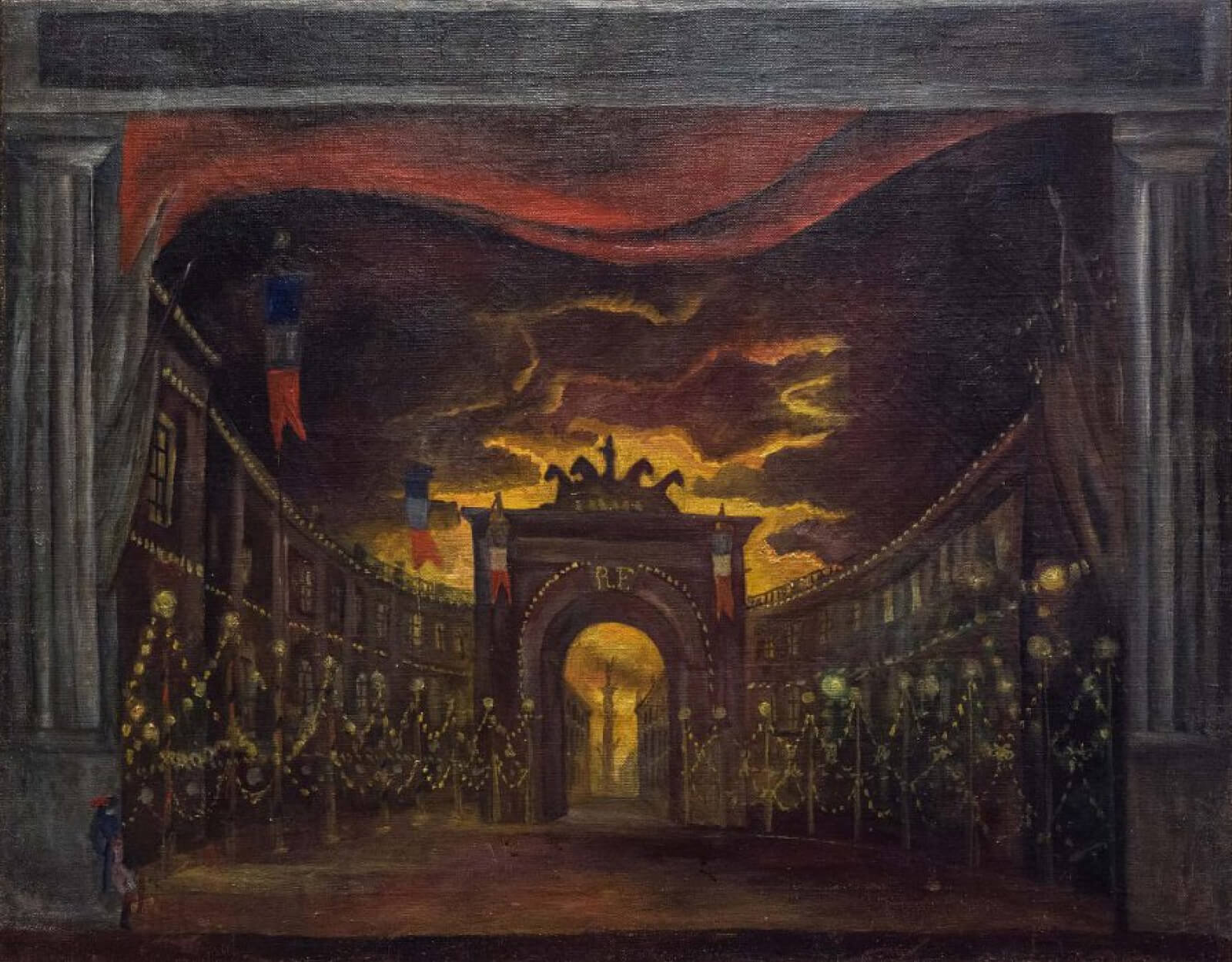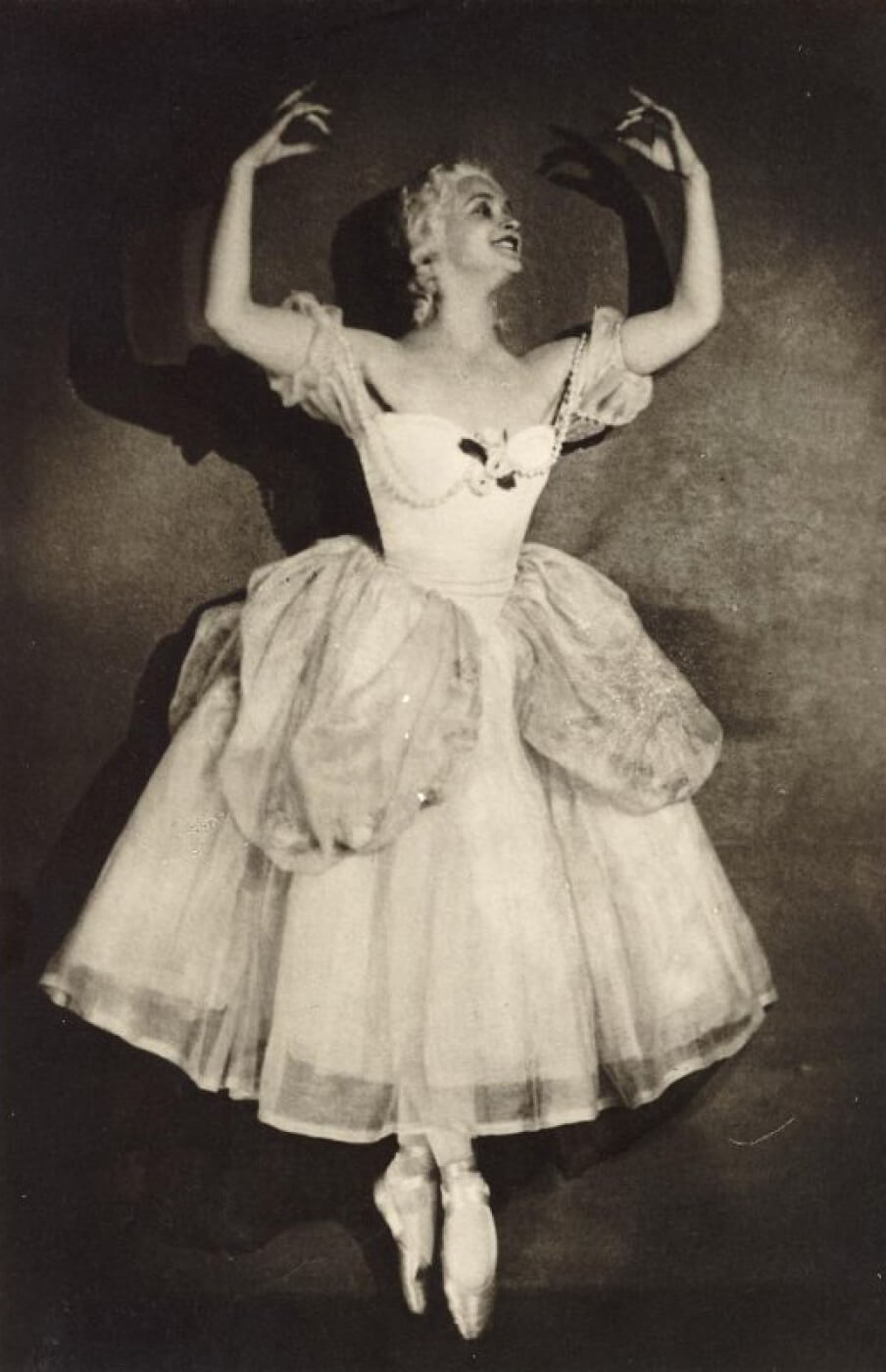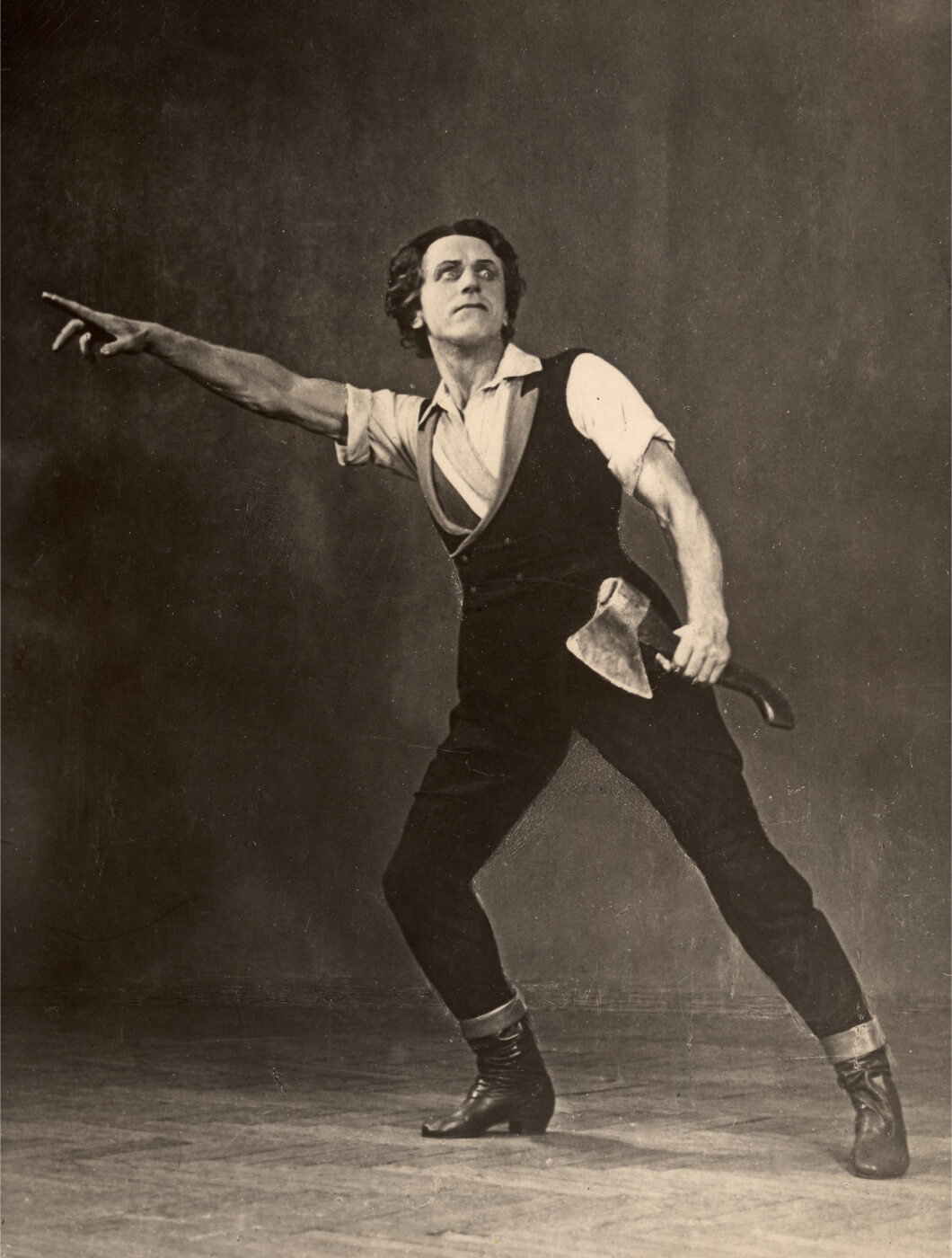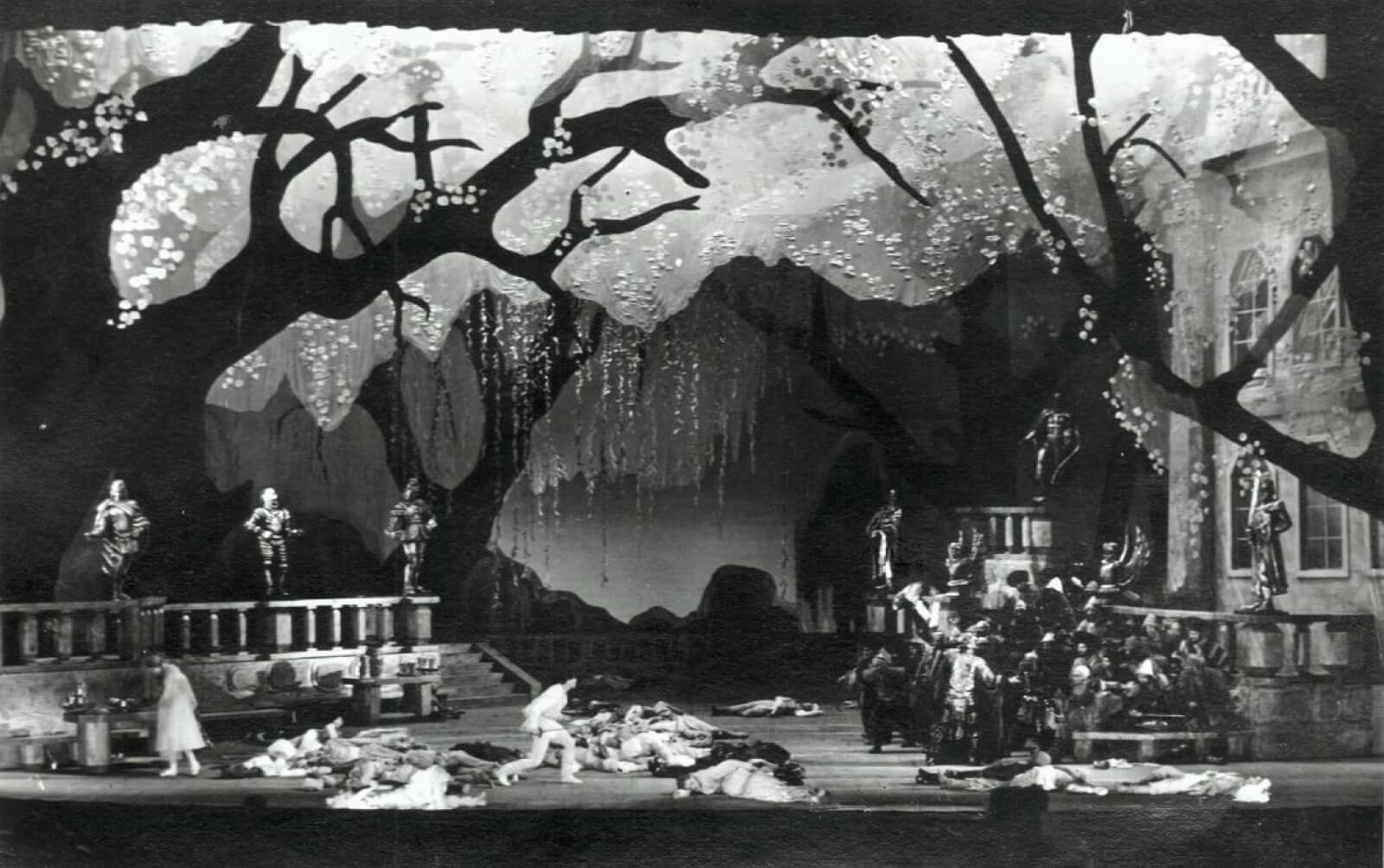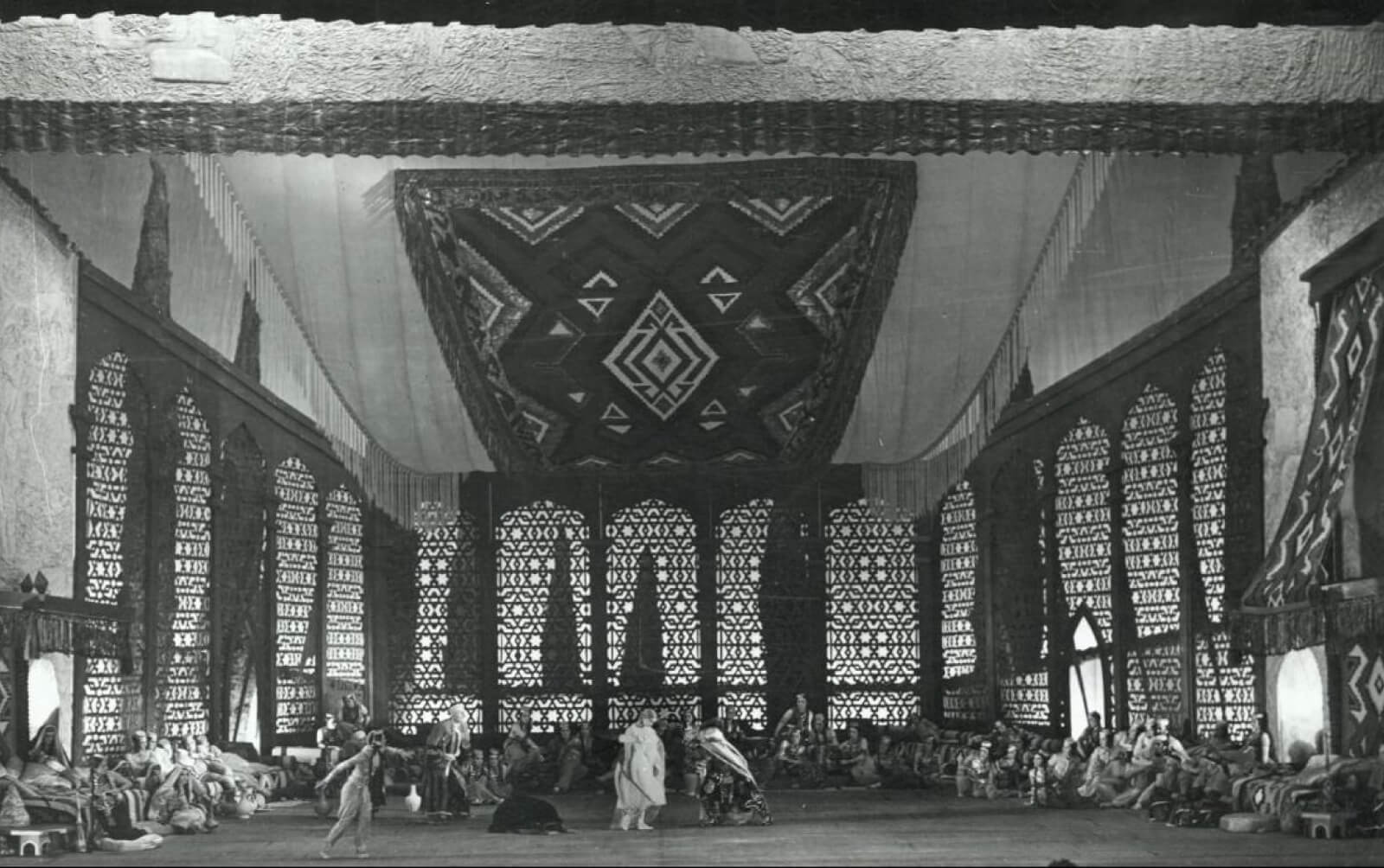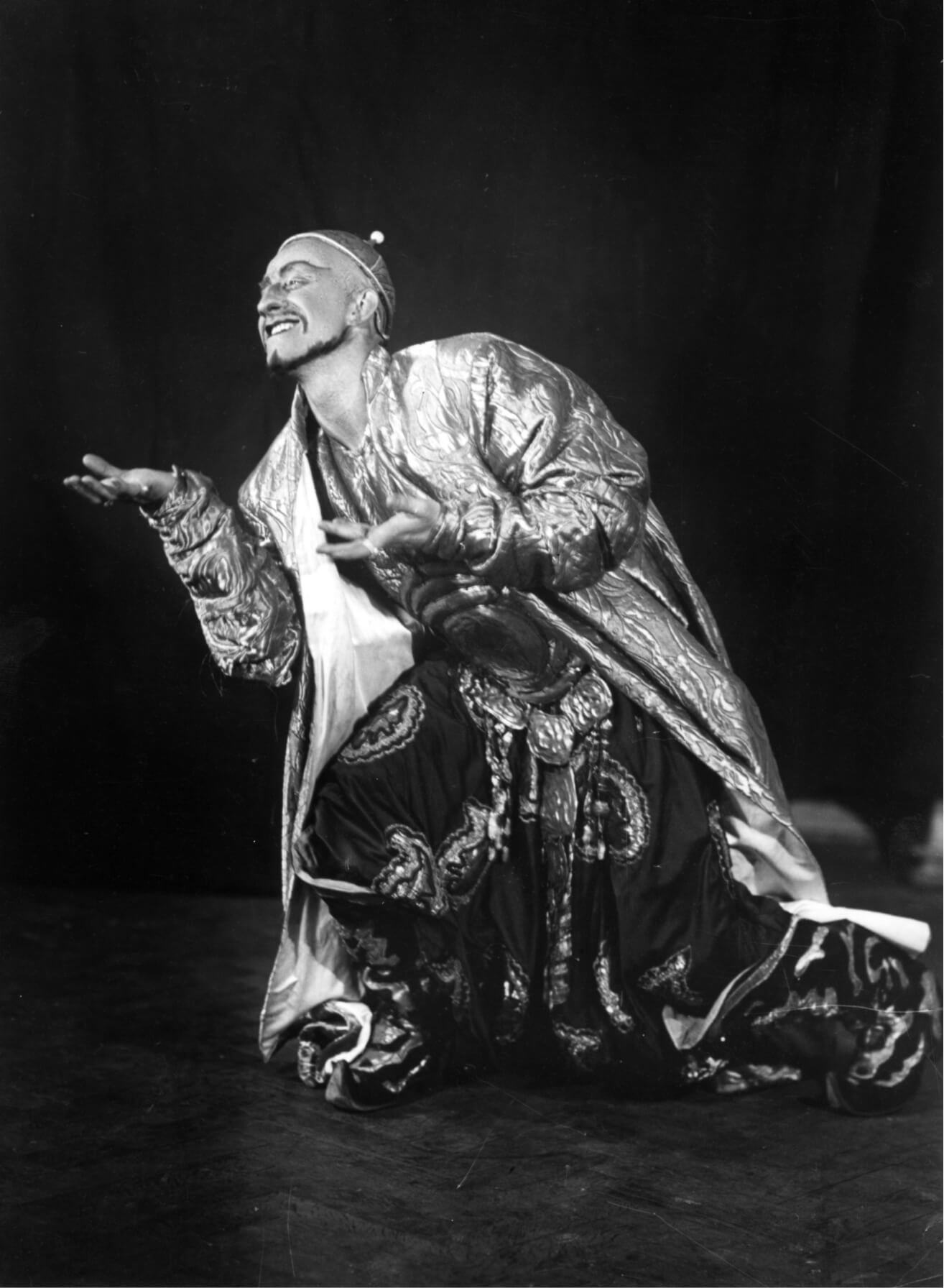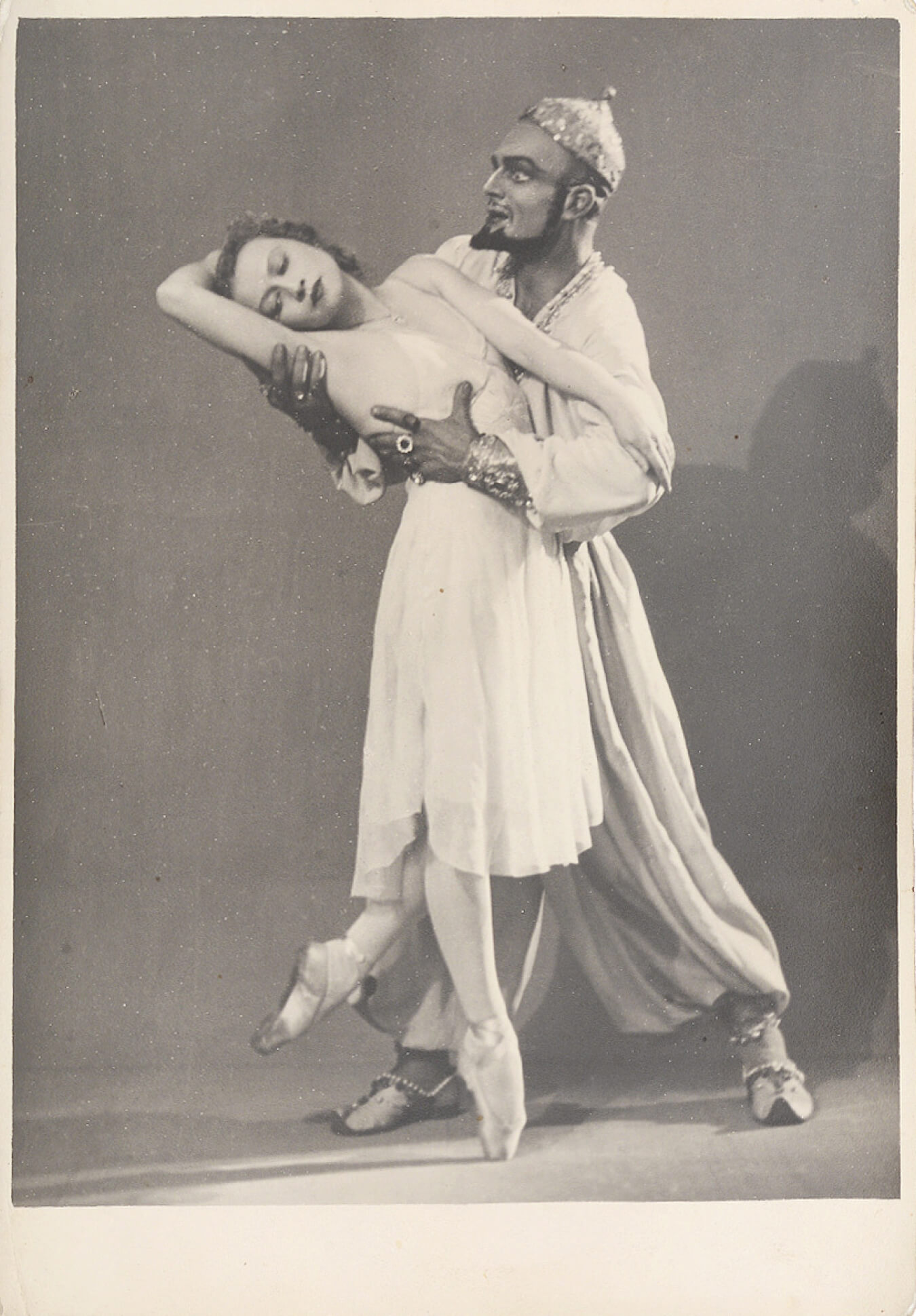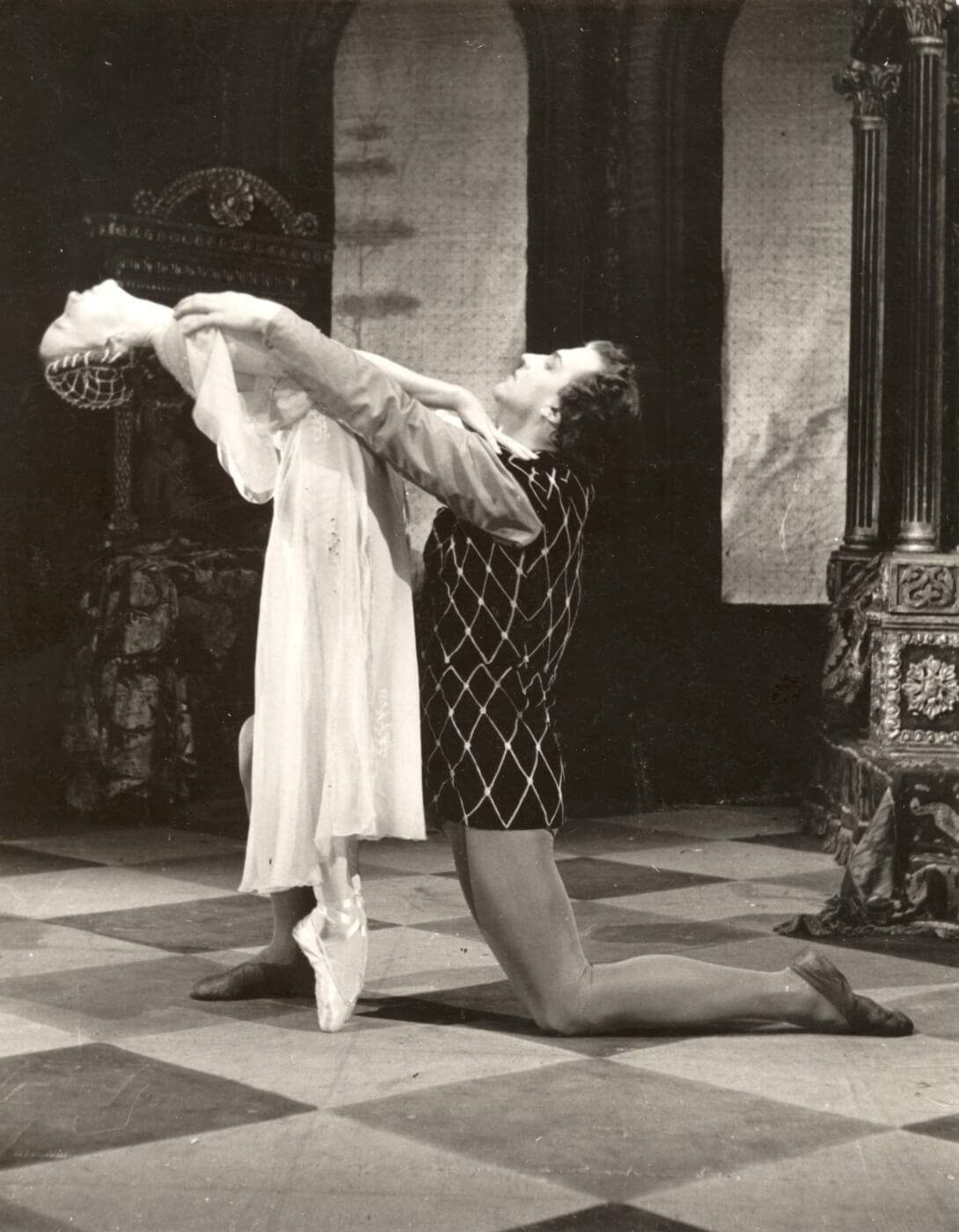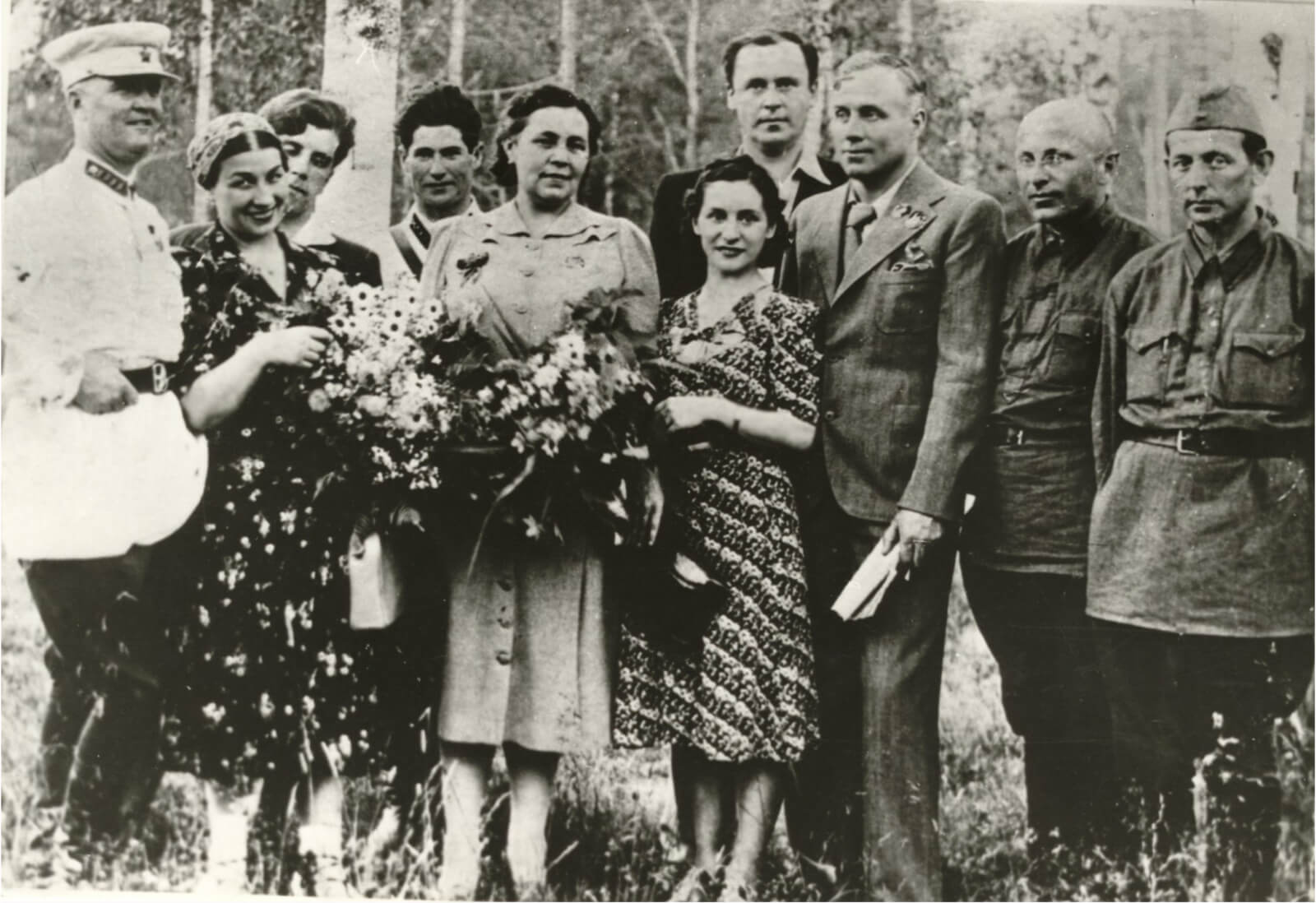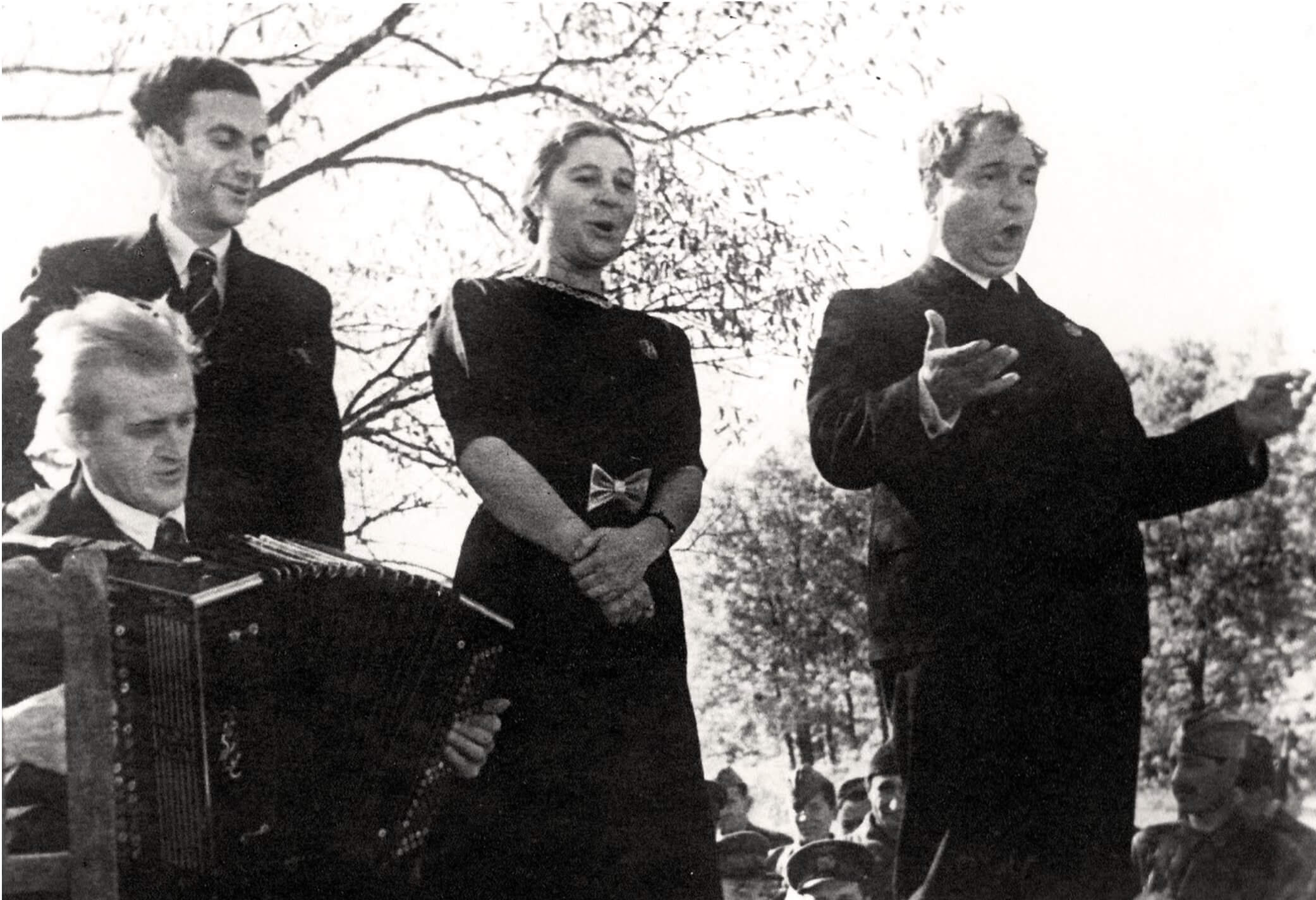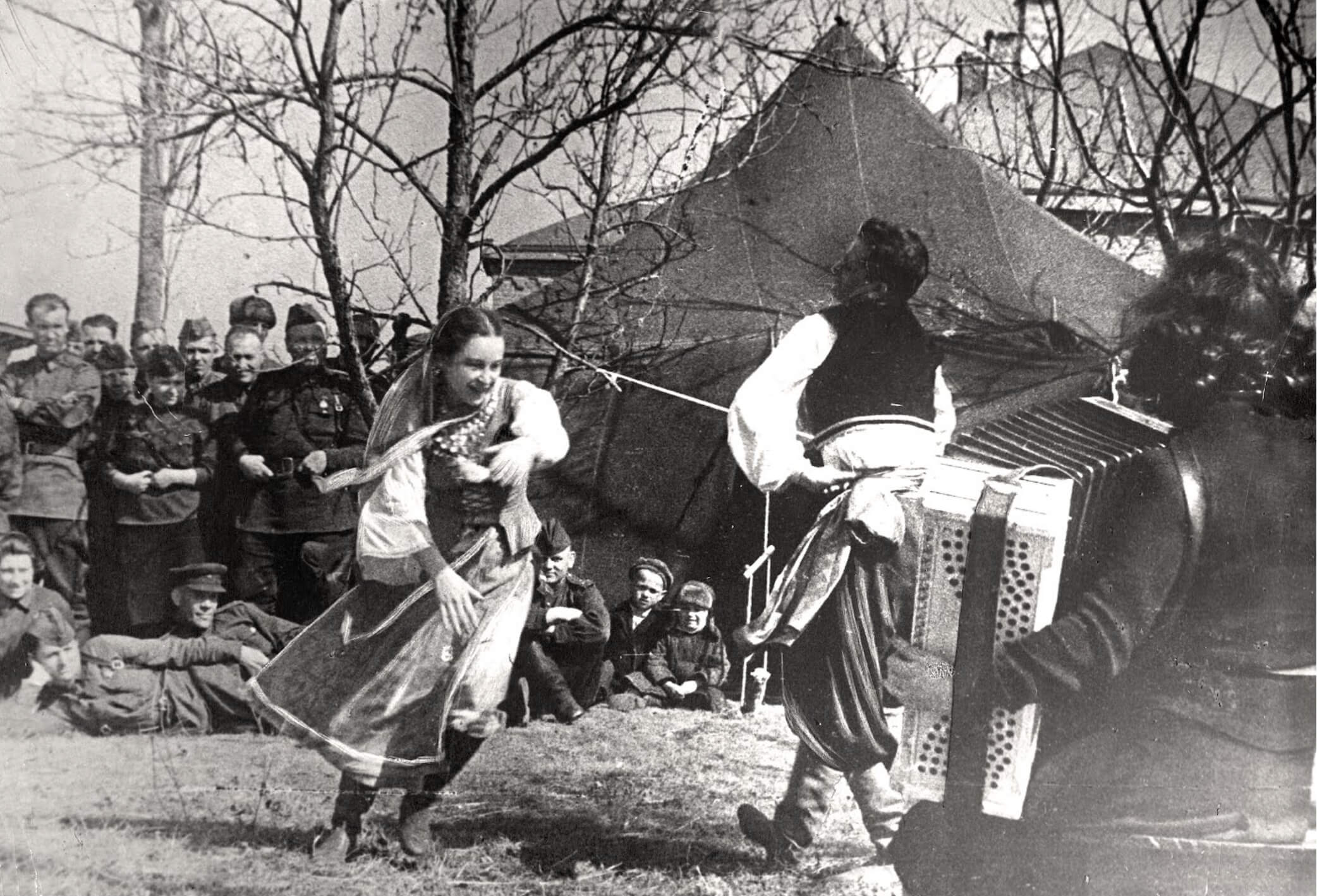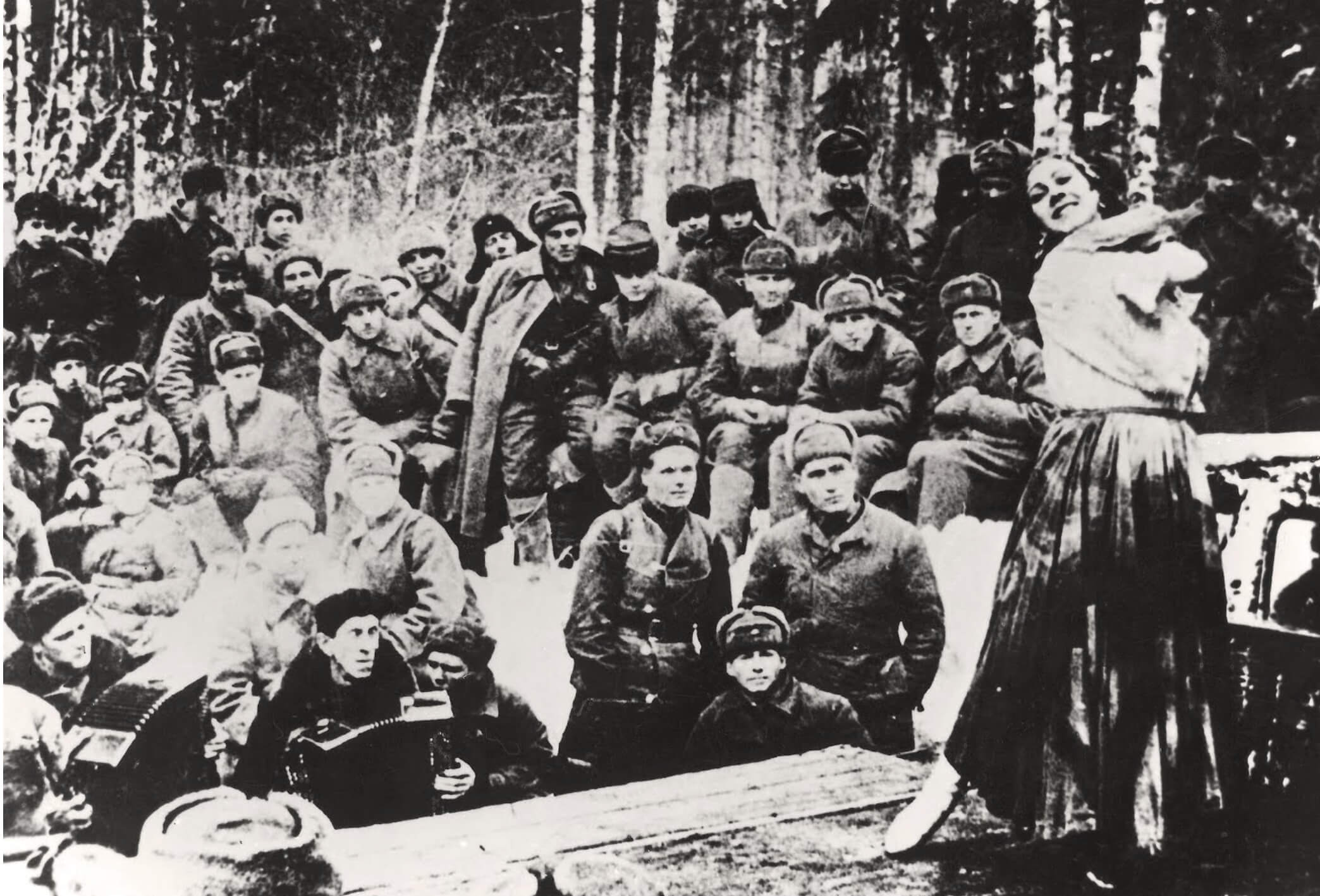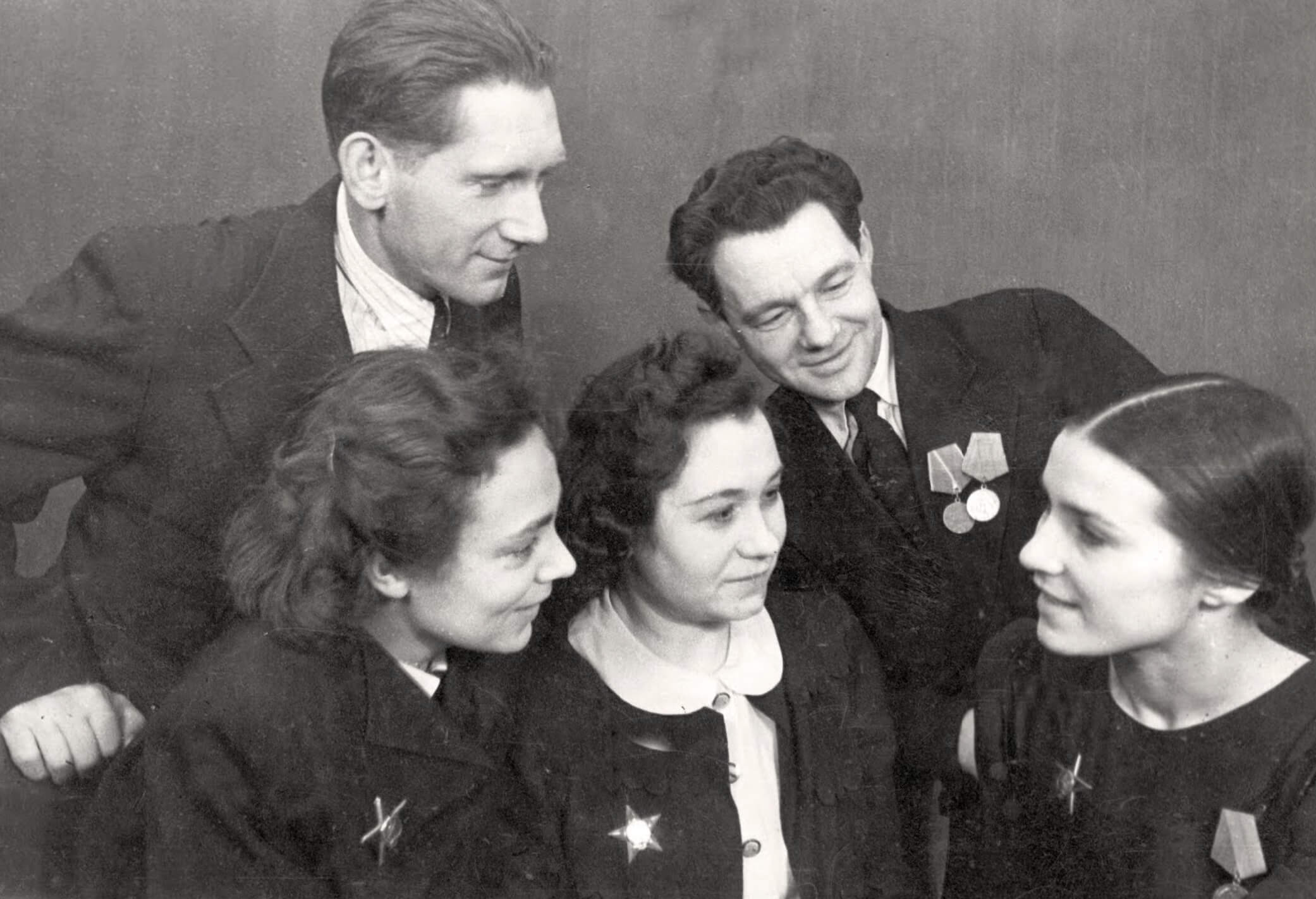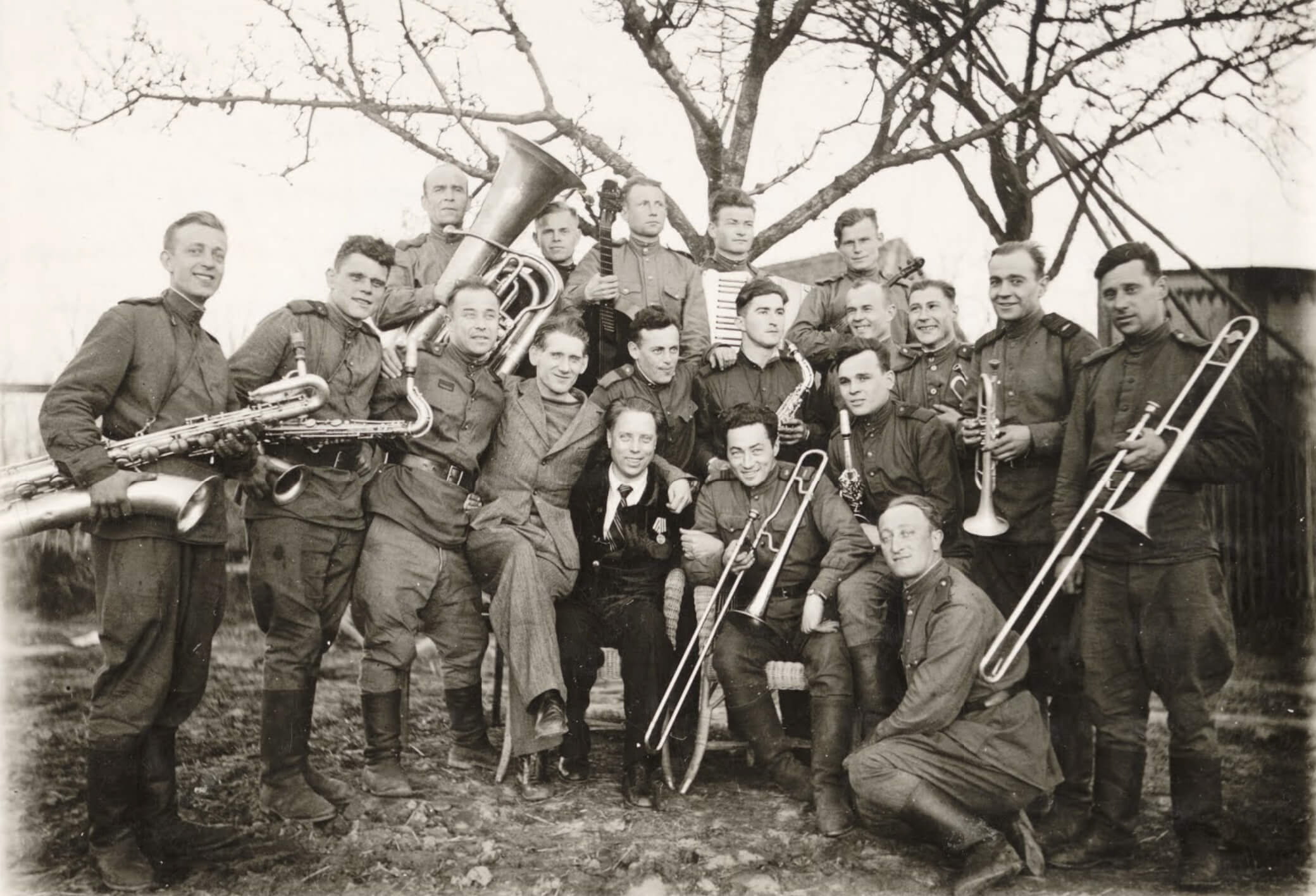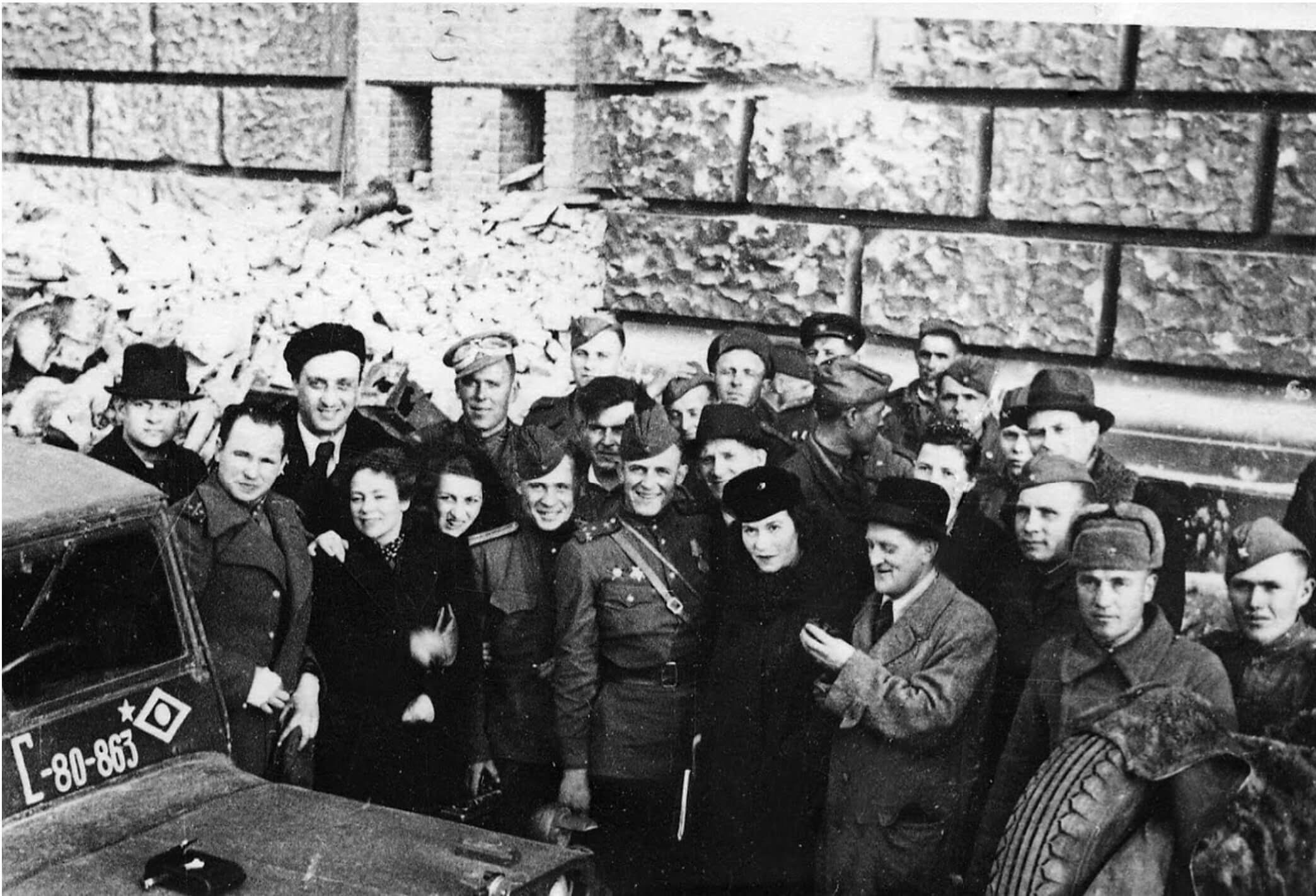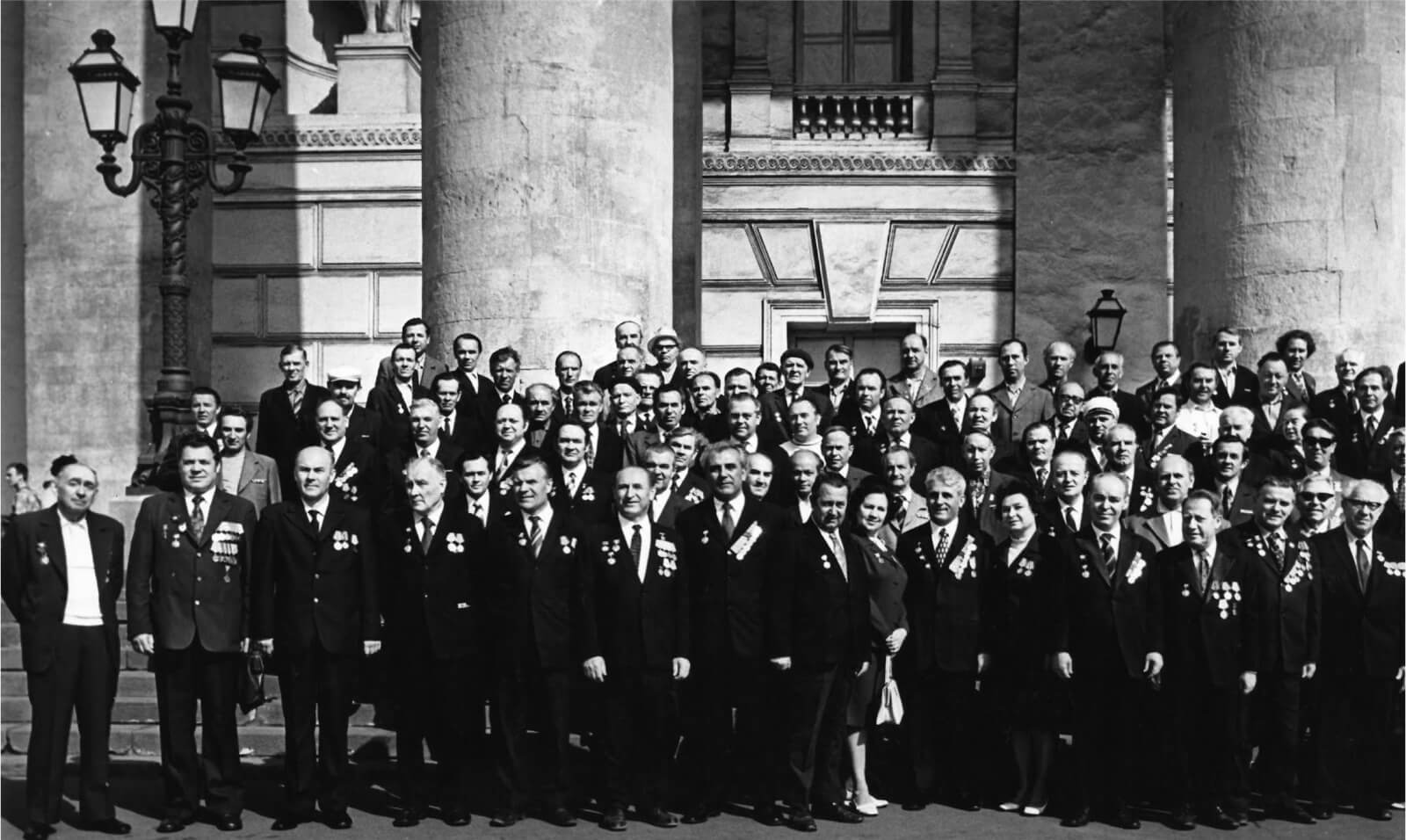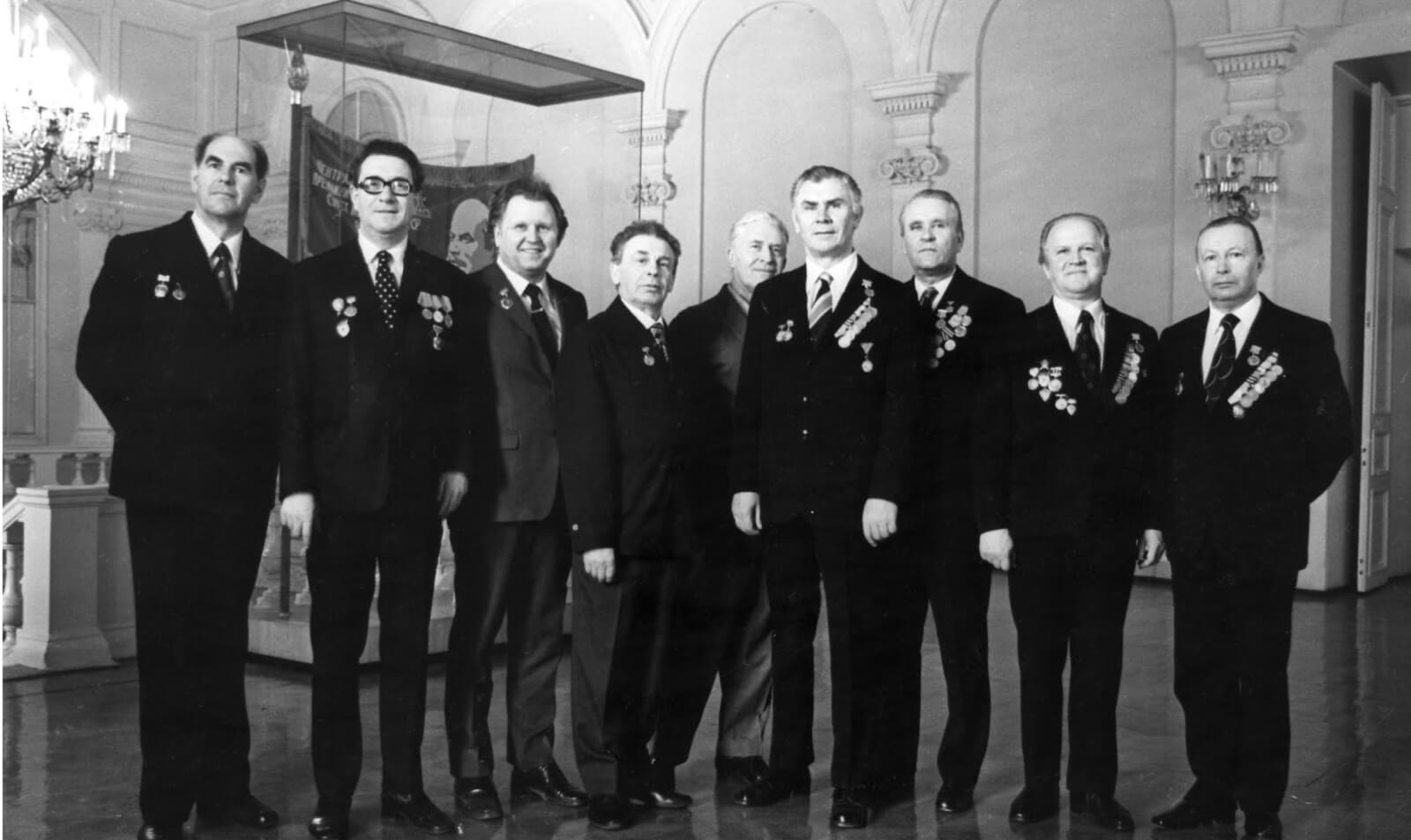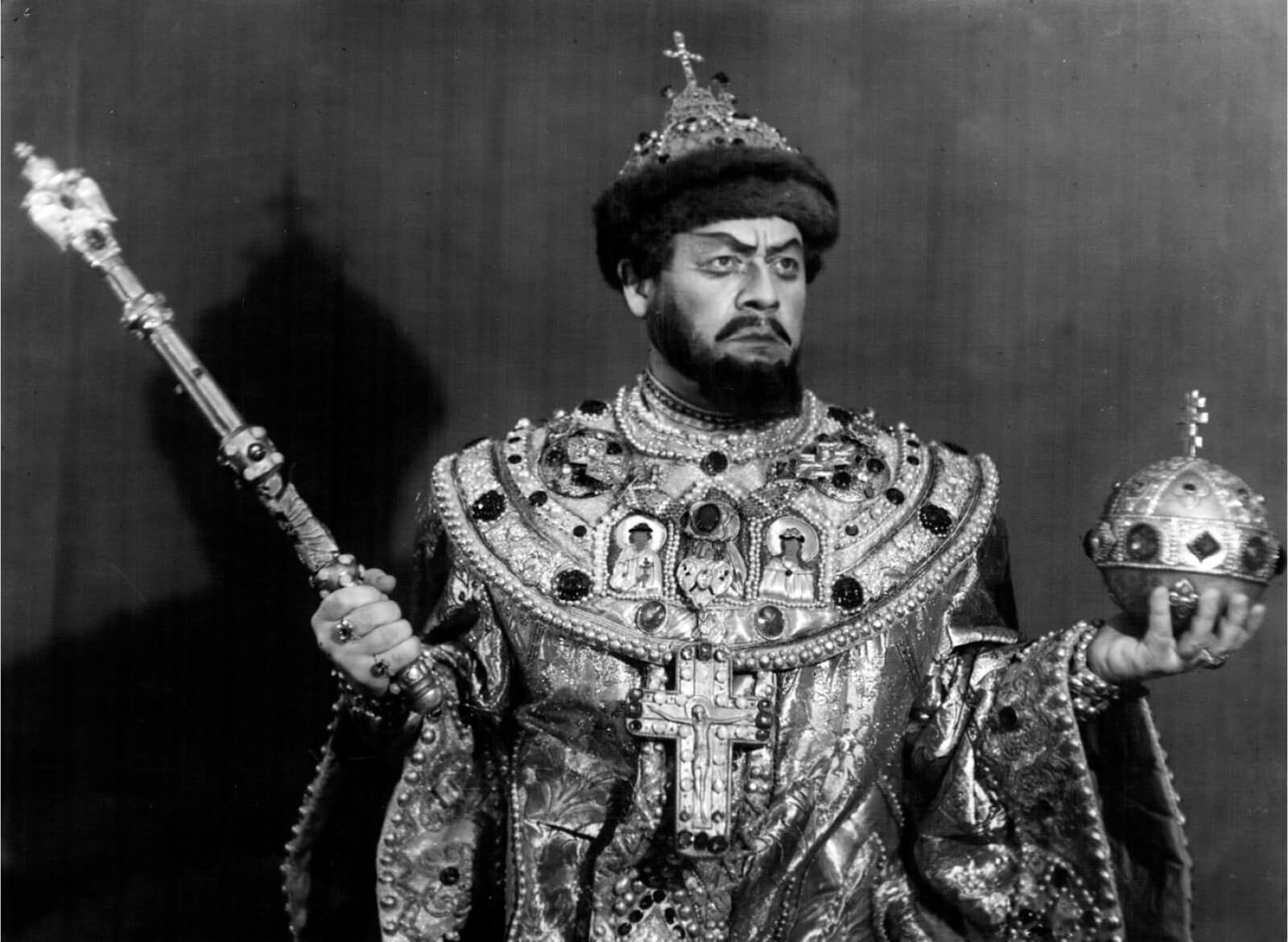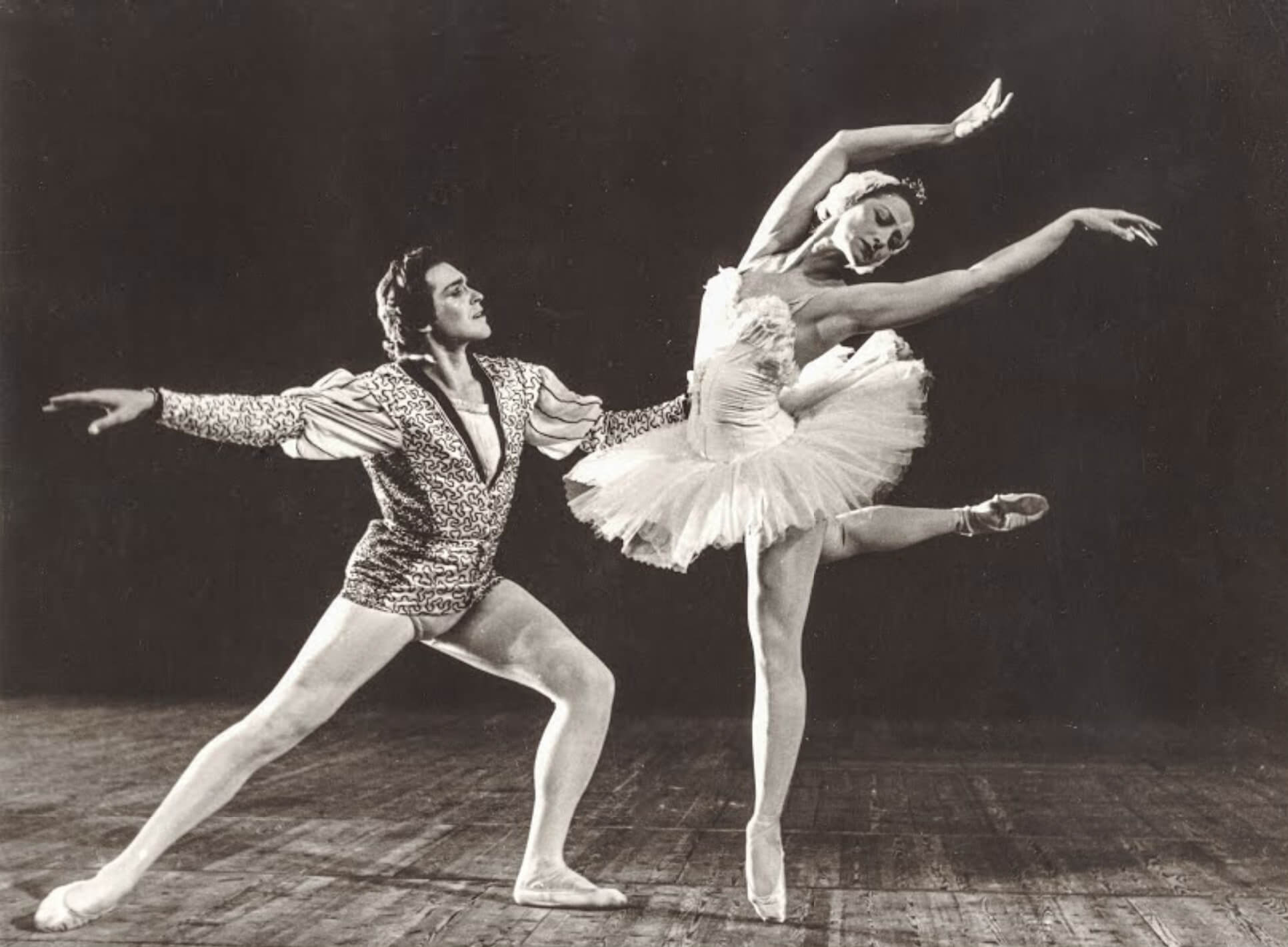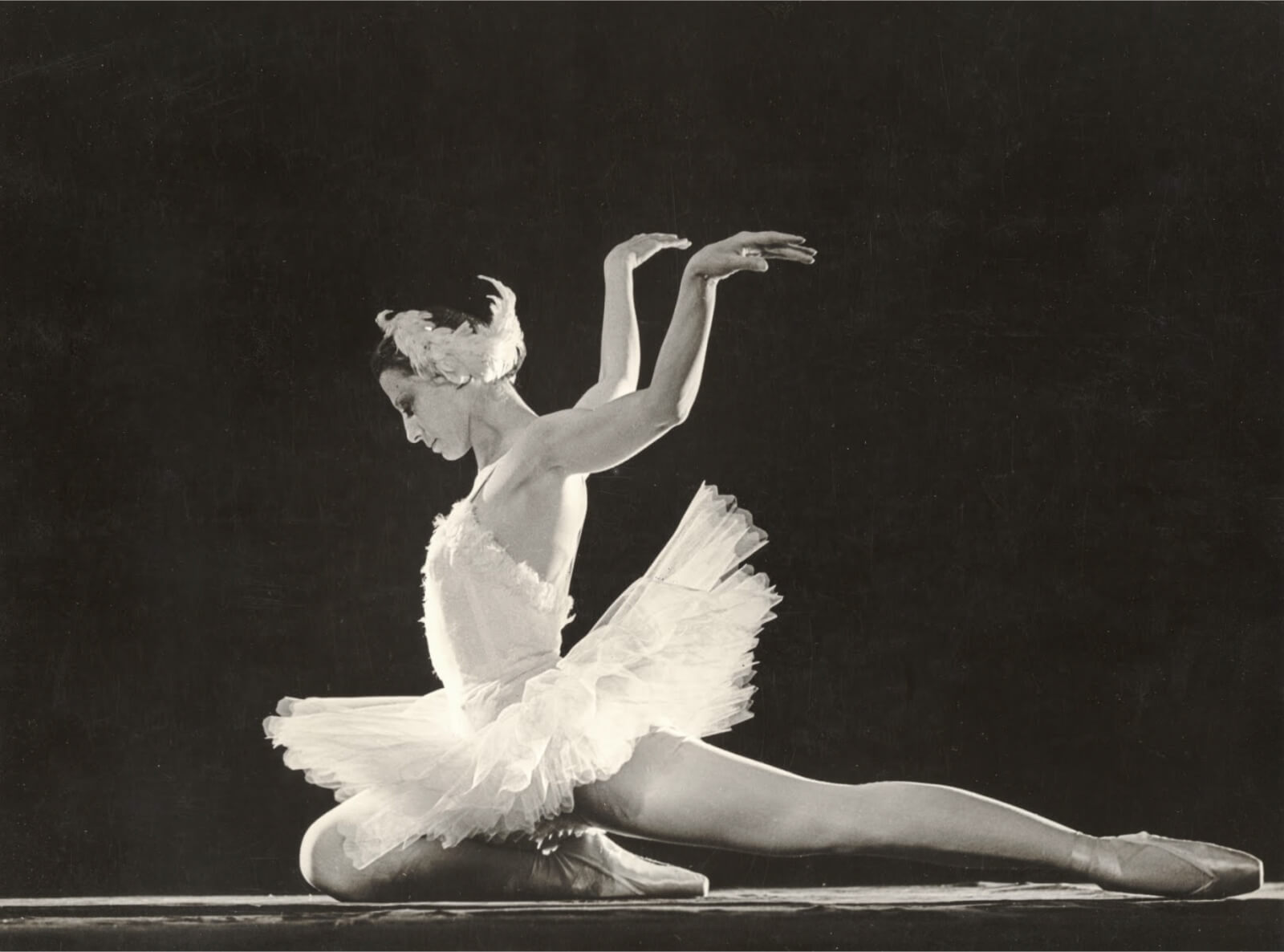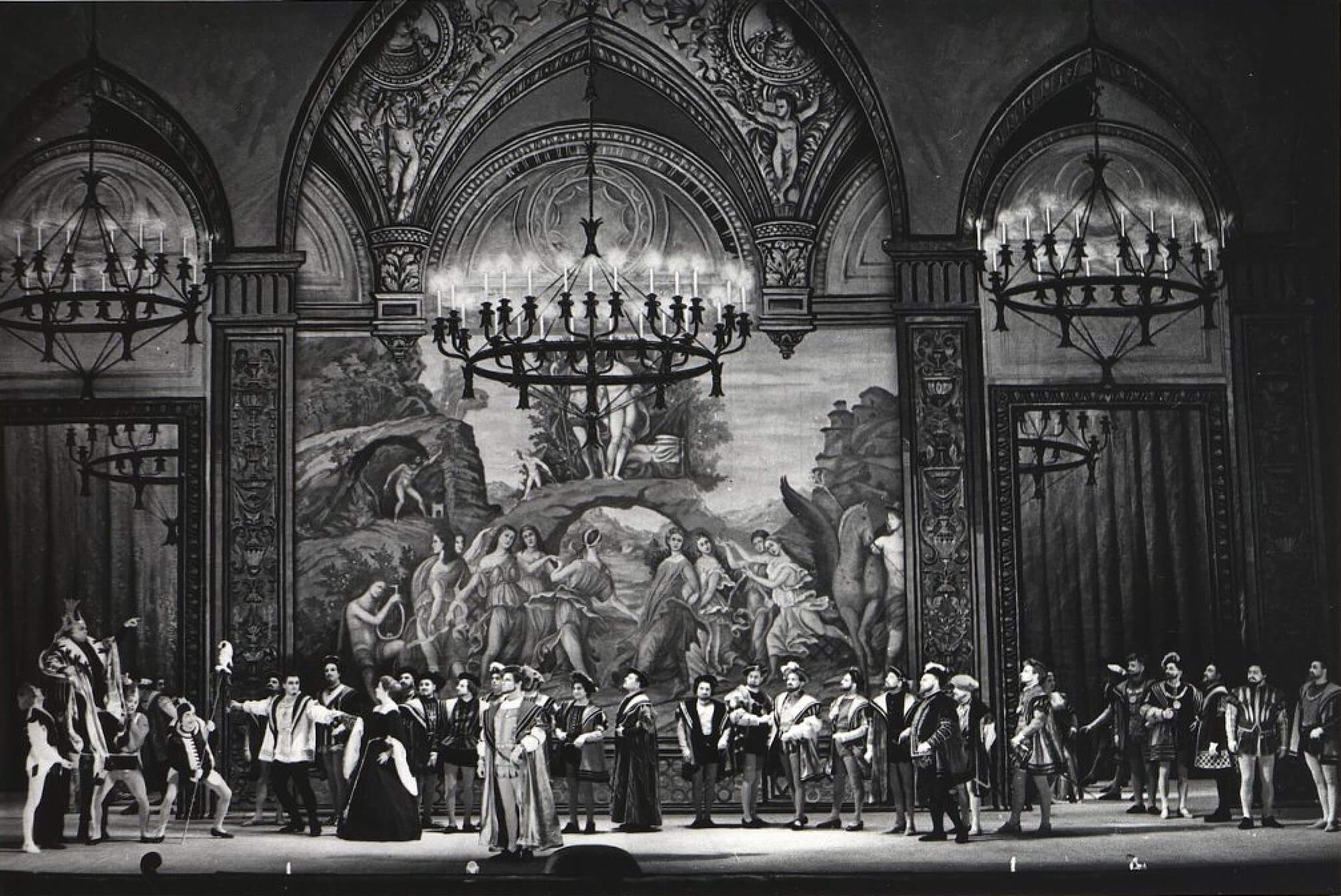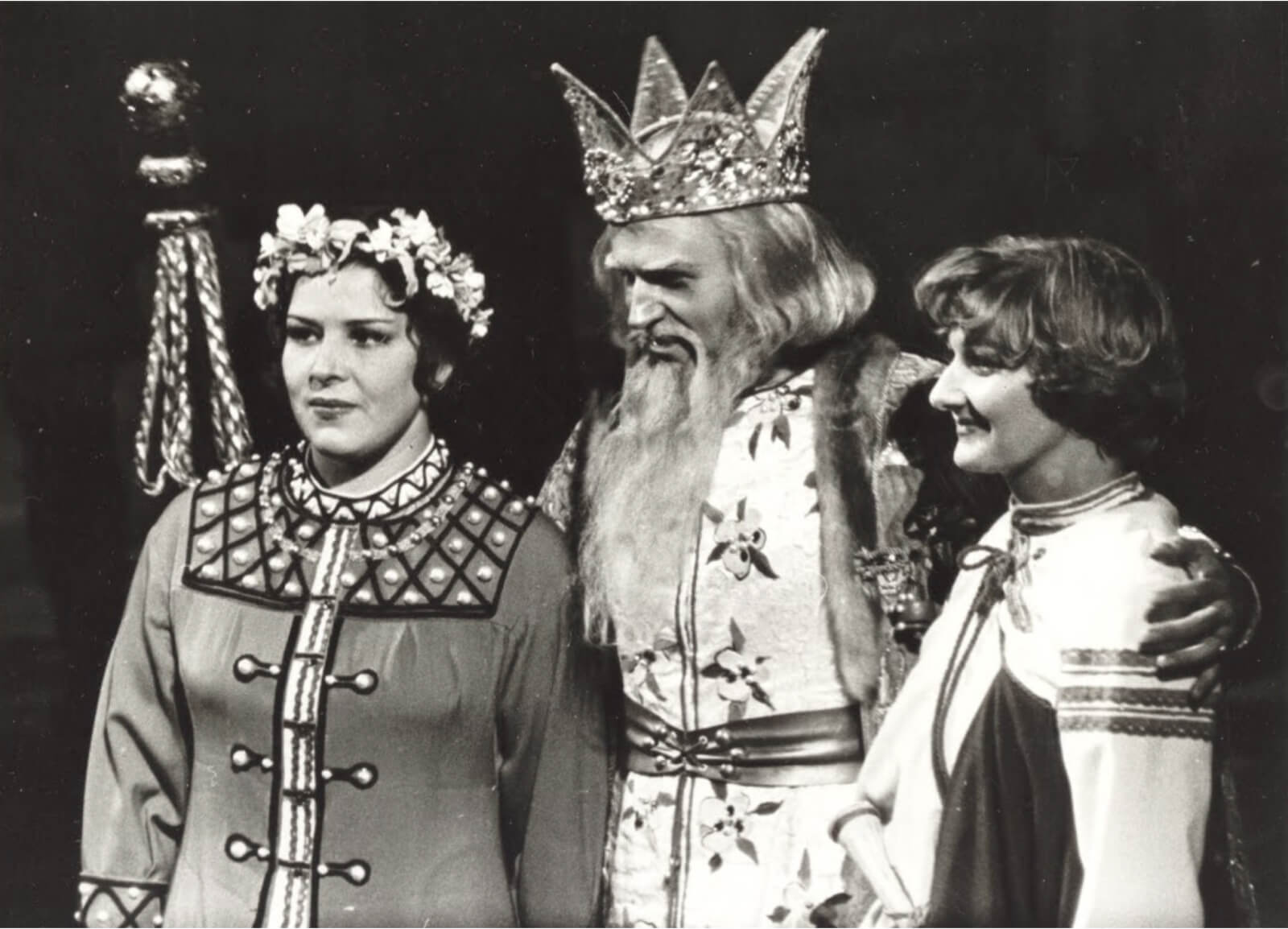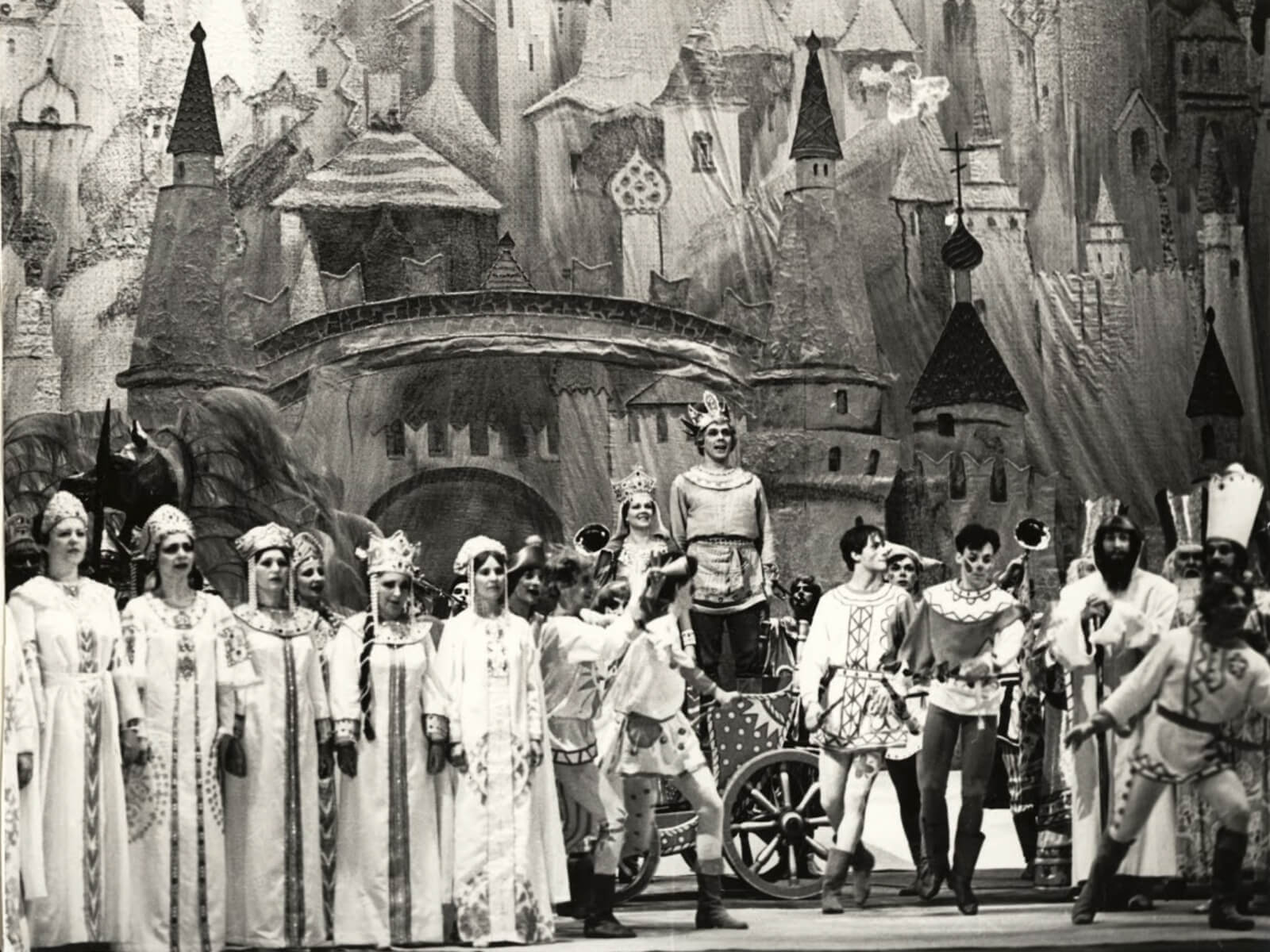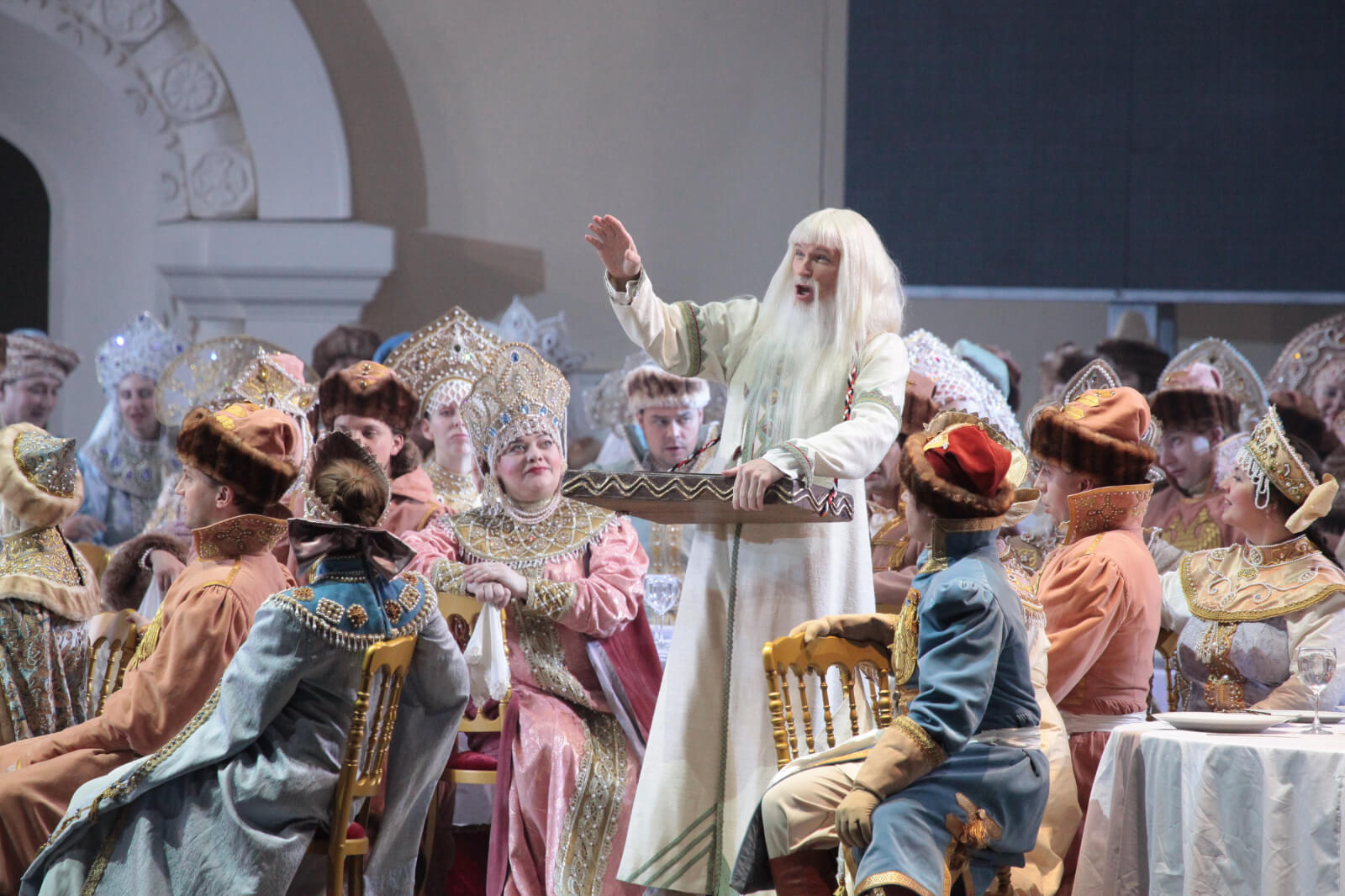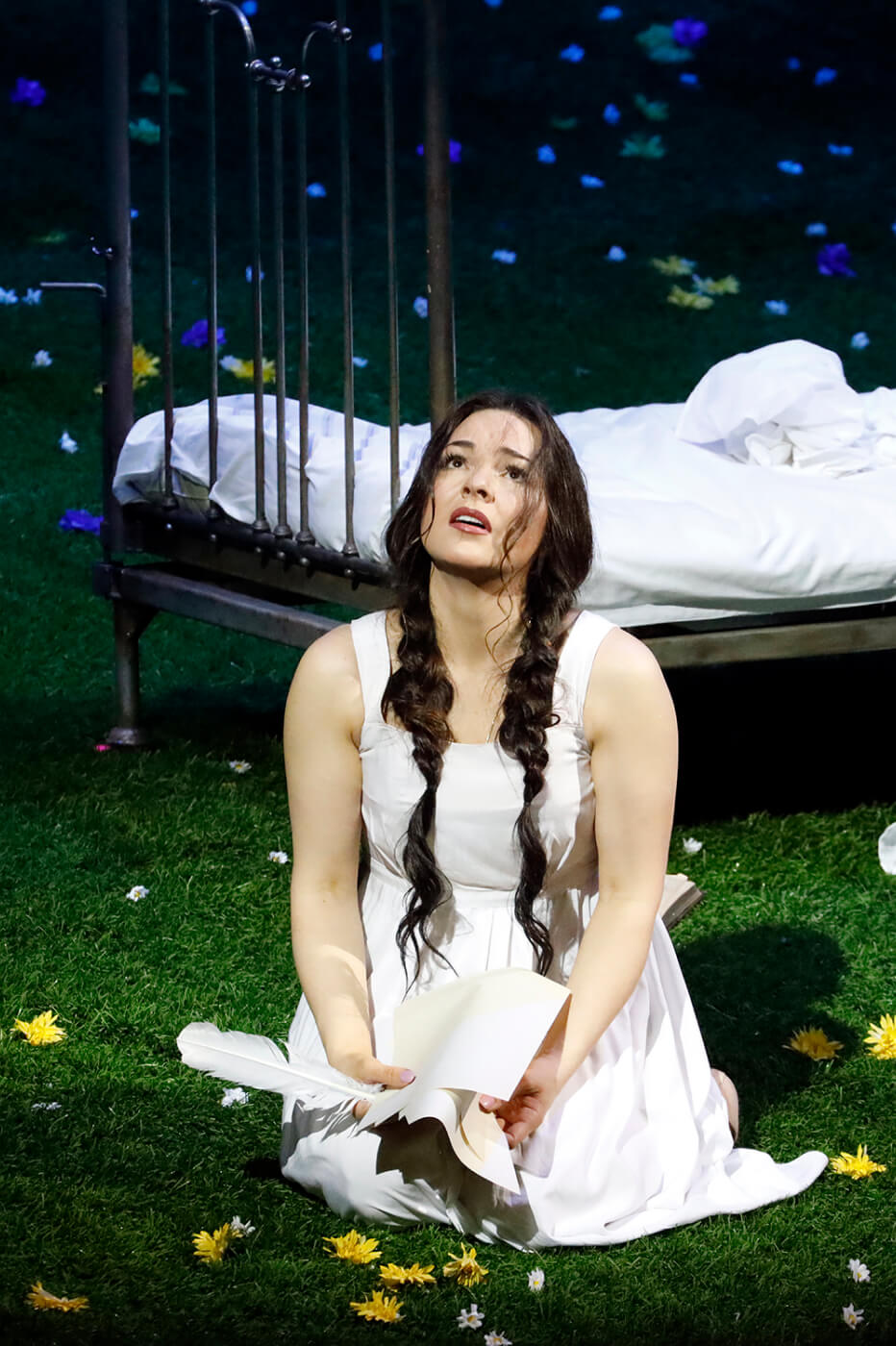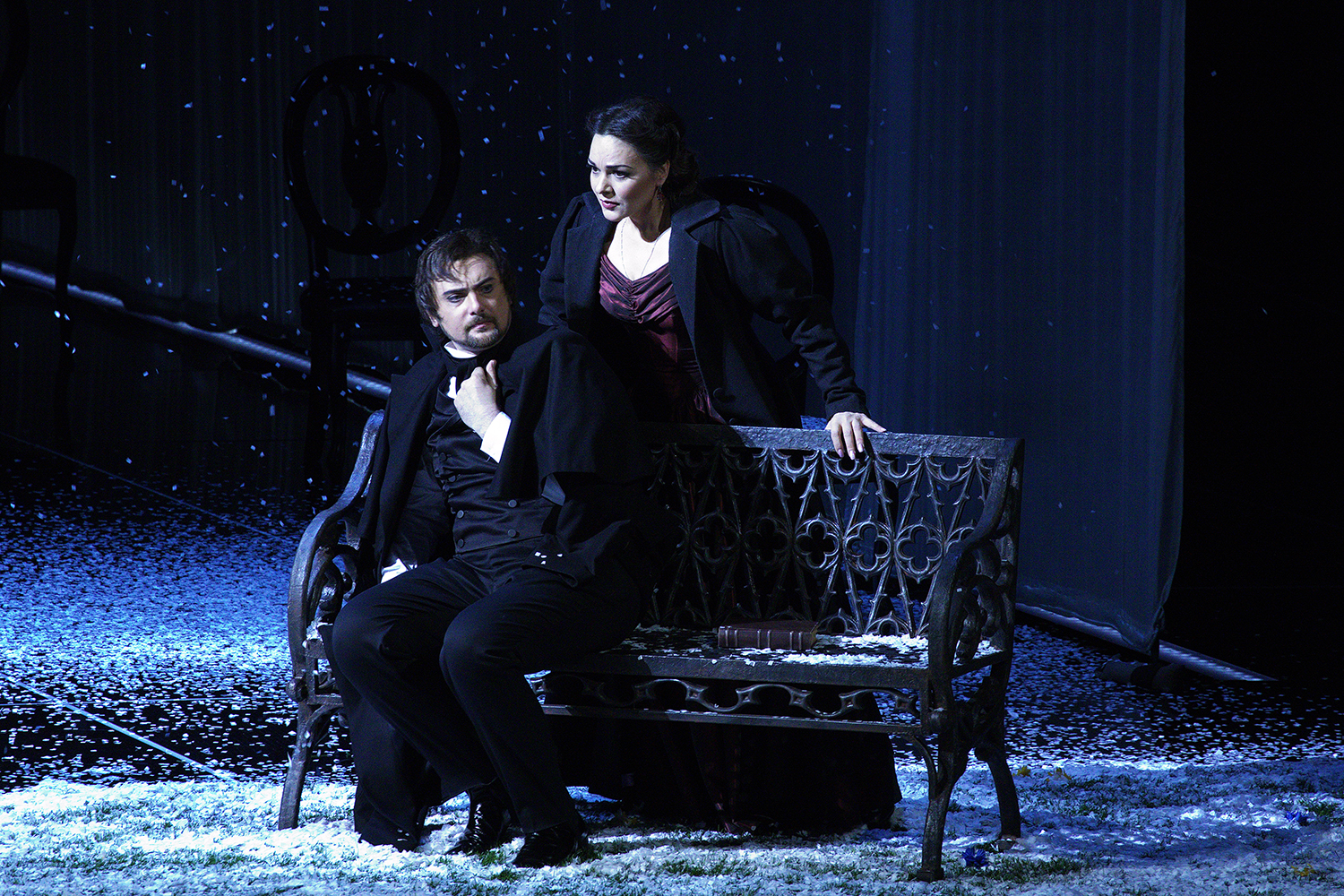
The Bolshoi Theatre started out as a private theatre of the provincial prosecutor, Prince Pyotr Urusov. On March 28, 1776, Empress Catherine II signed off on giving the prince the privilege of "being the owner of all theatrical performances in Moscow" for a ten-year period. This date is considered the founding day of the Moscow Bolshoi Theatre.
The date 28th of March is considered the founding day of the Moscow Bolshoi Theatre
The date 28th of March is considered the founding day of the Moscow Bolshoi Theatre
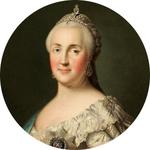
Empress signed off on giving the privilege of "holding all the theatrical performances in Moscow"
In 1777, the companions bought the house of Prince Lobanov-Rostovsky, located on Petrovka Street, in order to erect a new theatre building in its place. The opera house on Znamenka Street, where performances were given earlier, burned down in 1780 Prince Urusov, who suffered significant financial losses, ceded his share in the enterprise to Medox, who, as a result, began to build a theatre that served as a decoration for the city.
The building, designed by architect Christian Rosberg, was completed in just five months. The auditorium with three tiers of boxes, a gallery, a parterre for twenty rows of benches and a spacious ‘parquet’ between the parterre and the stage, where armchairs for ‘special’ visitors were installed, as well as spaces for other audiences to stand, accommodated almost a thousand people. In addition to the necessary office space, the Petrovsky Theatre – it got its name from its location – had numerous foyers and halls.
However, already in 1788, in order to satisfy the demands of the venerable public, another “Rotunda” was added to the building. From the very beginning of the theatre's existence, it was both a cultural and social hotpot: not only were performances given here, but also public lectures, concerts, masquerades and balls.

Empress signed off on giving the privilege of "holding all the theatrical performances in Moscow"
On January 10, 1781, the opening of the first Moscow public theatre took place
«This huge building, erected for the people's pleasure and amusement ... according to the best architects and with the approval of the theatre experts, was built and brought to a perfect end with a bit of strength and profitability that surpasses almost all notable European theatres.»
On January 10, 1781, the opening of the first Moscow public theatre took place
The fire and downfall of Petrovsky Theatre
The opening of the first Moscow public theatre took place on January 10, 1781 The repertoire was formed mainly from Russian and Italian comic operas with ballets and ‘individual’ ballets.
At the first stage of the theatre's existence, the opera and drama troupes formed a single body, and serf artists prevailed. However, the Moscow University and the gymnasiums established under it, which provided a good musical education, played a significant role in the formation of this unified troupe. The "fine arts" classes, founded in 1773 at the Moscow Orphanage, also supplied personnel for the Petrovsky Theatre, mostly ballet. The Moscow Imperial Theatre School later grew out of these classes.
In 1789-1805 the theatre passed from hand to hand, from one owner and manager to another and back. Financially ruined by construction, Medox took out loans on the security of the theatre from the Board of Trustees, which eventually took over the theatre. Medox was paid a salary as vice director, then he again for some time returned to the function of ‘landlord’. Prince Mikhail Volkonsky, the owner of one of the best Moscow private troupes of that time, acted alternately in the same capacity, as well as in the role of director, with him.
The fire and downfall of Petrovsky Theatre
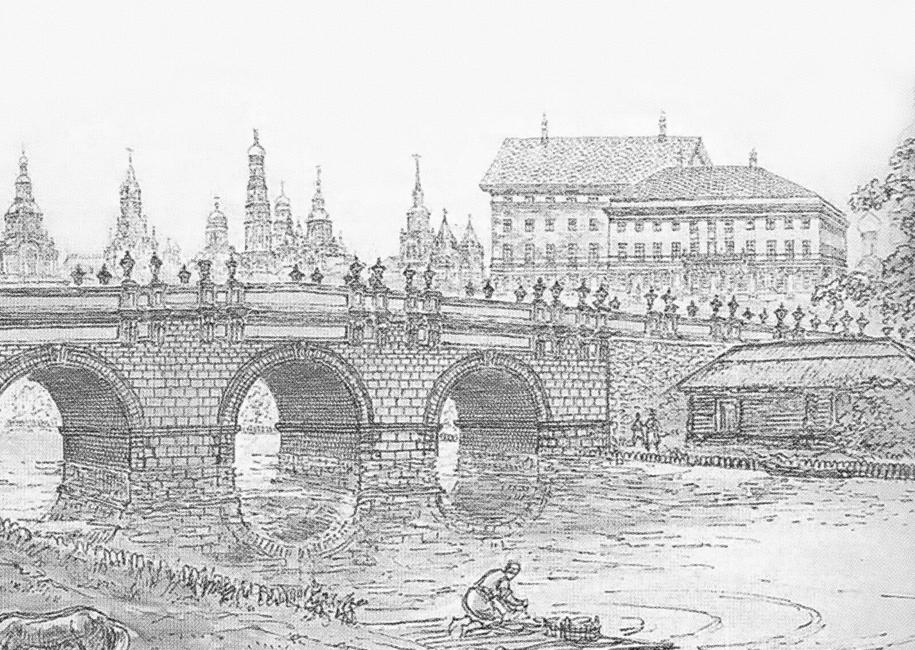
The picture-reconstruction by Karl Lopyalo. 1976.
A new building, Arbatsky Theatre, was erected– the only one built in Moscow by the project of the architect Karl Rossi
This building was one of the first to be destroyed by the great Moscow fire
A new building, Arbatsky Theatre, was erected– the only one built in Moscow by the project of the architect Karl Rossi
In 1805, the building of the Petrovsky Theatre was destroyed by fire. The troupe began a nomadic life, performing on sometimes uncomfortable private stages, which posed a great threat to its further existence. However in 1806, an event occurred that radically changed the state of affairs. The troupe of the former Petrovsky Theatre came under the jurisdiction of the Directorate of the Imperial Theatres, which previously controlled the St Petersburg stage exclusively. This is how the unified Directorate of the Imperial Theatres declared its existence, and the Moscow troupe acquired the status of an imperial one.
In 1808, a new building was erected for it – the only one built in Moscow by the project of the architect Karl Rossi. It was built "like a Greek temple, there were columns around it, in the middle of them a gallery, along which it was possible to walk around the entire theatre." The building, although it stood on a solid stone foundation, was entirely made of wood. When the Napoleonic army occupied Moscow and the great Moscow fire of 1812 began, this building was one of the first to burn down. Meanwhile, two days before these tragic events, on August 30, a performance was played here – the last one, as it turned out.
The Moscow imperial troupe resumed performances in the first throne room two years later, on the day of August 30, 1814, in the mansion of the general from the cavalry and inveterate theatregoer Stepan Apraksin, as well as the former Opera House located on Znamenka. A few years later, in 1818, the troupe was provided with a renovated theatre on Mokhovaya, where it even once performed before the war of 1812.
This building was one of the first to be destroyed by the great Moscow fire

In 1819, a competition was announced for the design of a new theatre building. The winner was the project of Andrei Mikhailov, professor of the Academy of Arts, but it was recognized as too expensive. The Moscow Governor Prince Dmitry Golitsyn ordered the architect Osip Bove to correct the project, which he did, significantly improving it.
Construction began on a new building. The winner of the competition for the design of a new theatre building was the project of Andrei Mikhailov, professor of the Academy of Arts, but then it was corrected by Osip Bové
Construction began on a new building. The winner of the competition for the design of a new theatre building was the project of Andrei Mikhailov, professor of the Academy of Arts, but then it was corrected by Osip Bové
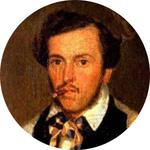
Architect

Architect

Architect

Architect
On the opening day, the prologue "Triumph of the Muses", written specially for the occasion, was performed in verse (M. Dmitriev), with choirs and dances to the music of A. Alyabyev, A. Verstovsky and F. Scholz. The ballet divertissement was staged by the famous dancer Félicité Hullin Sor, who had been invited over from France two years before this event. And although the theatre was very large, it could not accommodate everyone. Emphasizing the importance of the moment and condescending to the experiences of the suffering, the triumphal performance was repeated in full the next day.
The new theatre, which surpassed in size even the capital, St Petersburg's, Bolshoi Kamenny Theatre, was distinguished by its monumental grandeur, proportionality, harmony of architectural forms and rich interior decoration. It turned out to be very convenient: the building had galleries for the passage of spectators, stairs leading to tiers, corner and side lounges for rest and spacious dressing rooms. The huge auditorium could accommodate over two thousand people. The orchestra pit was deepened. During the masquerades, the floor of the parterre was raised to the level of the proscenium, the orchestra pit was covered with special shields – and a wonderful ‘dance floor’ was obtained.
The opening of the Bolshoi Petrovsky Theatre took place on January 18
«Even closer, on a wide square, rises the Petrovsky Theatre, a work of the latest art, a huge building made according to all the rules of taste, with a flat roof and a majestic portico, on which the alabaster Apollo rises, standing on one leg in an alabaster chariot, motionlessly driving three alabaster horses and looking with vexation at the Kremlin wall, which jealously separates him from the ancient shrines of Russia!»
The opening of the Bolshoi Petrovsky Theatre took place on January 18
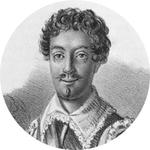
Ballet master, teacher
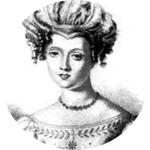
Ballerina, ballet master, teacher
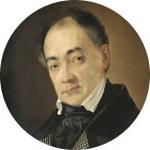
Composer and distinguished theatre figure

Ballet master, teacher

Ballerina, ballet master, teacher

Composer and distinguished theatre figure
The unshakable tradition of strengthening the Moscow ballet with St Petersburg cadres dates back to the dawn of the 19th century. In December 1811, by decree of the director of the Imperial Theatres, Adam Glushkovsky was transferred from the St Petersburg theatre to the Moscow one. Since 1812, he was the first dancer, choreographer and head of the Moscow Ballet School, who did a lot for the formation of the Moscow ballet. When Napoleon's troops besieged Moscow, despite the panic that gripped the city, he managed to take his wards first to Kostroma, and then to Plyos, where he was able to resume training. And when the siege was lifted, he returned his school to Moscow and reassembled the Moscow troupe. A prolific choreographer and theorist of choreographic art, among other things, he became famous for the fact that he brought the heroes of Pushkin's works to the Moscow ballet stage.
Félicité Hullin Sor also actively contributed to the establishment of the Moscow ballet school. Opposing the transfer of St. Petersburg performances, which boiled down to their automatic copying, using her connections with large foreign theatres, she opened a direct path to the Moscow stage for the best European ballets. So, in 1837, five years after the premiere of the ballet La Sylphide, staged by F. Taglioni for his famous daughter Maria Taglioni and which marked the beginning of the era of romanticism in ballet art, Hullin Sor introduced him to the Moscow audience. The first woman ballet master in Russia, she also composed her own ballets. She also brought up a mass of talented dancers, by teaching at the Moscow Theatre School.
In 1823, having received an appointment to the office of the Moscow military governor-general D. Golitsyn, a young but already well-known composer and author of famous vaudevilles, Alexei Verstovsky, moved from St Petersburg to Moscow. He immediately plunged into the thick of Moscow theatrical life, of which he was to become a key figure for many years. For thirty-five years, Verstovsky served in a Moscow theatre office. He practically headed the opera and drama troupe of the Bolshoi and Maly theatres: first he was an inspector of the music, then of the repertoire. In fact, he served as the chief director. He also supervised the entire administrative and economic component of the theatres' life. And at the same time he tirelessly composed music. He penned six operas, and all of them were staged at the Bolshoi Petrovsky Theatre. It is no coincidence that the period of his service for the benefit of the Moscow Imperial Theatres was called by his contemporaries ‘the era of Verstovsky’.
The best operas by Verstovsky – Pan Tvardovsky (1828) and especially Askold's Grave (1835) – became heralds of the emergence of Russian national opera, which began with the era of Mikhail Glinka in Russian music. As for the ‘era of Verstovsky’, he finished it with the rank of manager of the Moscow office of the Directorate of the Imperial Theatres. (In 1842, Moscow theatres were transferred under the authority of the S. Petersburg Directorate of Imperial Theatres). In the same year, the Moscow premiere of M. Glinka's opera A Life for the Tsar took place, and the same artists who had performed in this opera on the St Petersburg stage six years earlier came to perform it. Four years later, the Moscow premiere of the opera Ruslan and Lyudmila took place in the same way.
Although drama performances continued on the stage of the Bolshoi Petrovsky Theatre, operas and ballets began to take an increasing place in its repertoire. The works of Cherubini, Rossini, Donizetti, Bellini, Aubert, Dargomyzhsky, Adam, Pugni…
On March 11, 1853, a fire broke out in the theatre, which lasted three days and destroyed everything it could
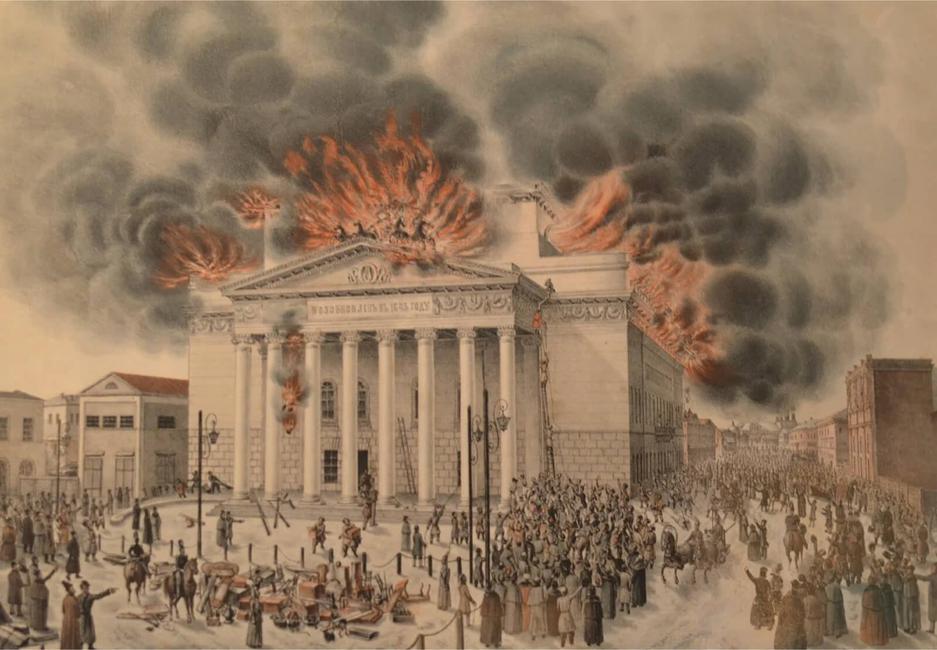
Drawing by Eberhard Lillier. Litograph. 1853.
On March 11, 1853, a fire broke out in the theatre, which lasted three days and destroyed everything it could
The building of the Bolshoi Petrovsky Theatre existed for almost thirty years. But it also suffered the same sad fate: on March 11, 1853, a fire broke out in the theatre, which lasted three days and destroyed everything it could. Theatrical machines, costumes, musical instruments, sheet music, scenery burned down ... The building itself was almost completely destroyed, from which only the charred stone walls and columns of the portico remained.
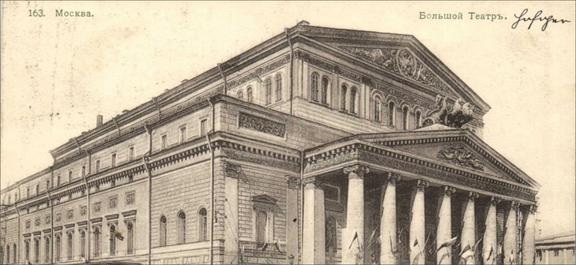
Three prominent architects took part in theatre reconstruction competition. Chief architect of imperial theatres Alberto Cavos, Professor of Saint-Petersburg Academy of Arts, became a winner. He specialized mainly in theatre buildings, had an excellent knowledge of theatre technologies and of projecting of multi-tiered theatre with proscenium stage, both Italian and French types of boxes.
Renovation of almost completely destroyed building had started
Renovation of almost completely destroyed building had started
Total height of the building increased by two meters. Although Bove’s portico with columns remained the same, form of main facade changed significantly. A second pediment was added. Apollo’s chariot with troika was replaced by a quadriga, which was cast from bronze. Alabaster bas-relief with flying geniuses with lyres surfaced on the inner space of the pediment. Frieze and capitals of the columns changed as well. Sloping roofs on iron pillars were set in at side facades from entrances.
Certainly, architect drew main attention to the auditorium and stage space. In the second half of 19 th century, the Bolshoi Theatre was considered as one of the world’s best in terms of acoustics. Thanks to Alberto Cavos’ skills who designed auditorium as a huge music instrument. Wooden panels of resonant pinewood were used for the walls decorations. Instead of iron, ceiling was made out of wood; a picturesque plafond was constructed out of wooden shields – everything there served the acoustics. Even boxes décor was made of papier-mâché. To enhance acoustics, Cavos covered space under amphitheater where cloakroom before was located, hangers were moved to the stalls level.

Engraving. The middle of the 19th century.
Seating capacity of auditorium became like that after one tier was added
Seating capacity of auditorium became like that after one tier was added
Auditorium space was considerably broadened which made it possible to create avant-loge – small guest rooms to accept visitors from neighboring boxes. One tier was added to auditorium so it became six-tiered and accommodated almost 2300 guests. Littered boxes located on the both sides to the stage and were reserved for Tsar’s family, ministers of the court and theatre administration. Tsar’s front box, protuberant to the auditorium opposite stage, became its central place. Consoles in form of crouched Atlantes supported boxes’ wall. Everyone was stroke by a crimson-gold magnificence upon entering auditorium – within first years of the Bolshoi Theatre’s existence and decades later.
Originally, chandelier in the auditorium was lit by three hundred oil lamps. In order to light them, the chandelier had to be lifted through the vent in plafond and put into a special premise. Circular composition of plafond was built around the vent with a painting of the Apollo and Muses by academic Alexei Titov. It was a mural “with a secret” which could be revealed to an attentive eye, additionally an expert in Greek mythology: instead of one of canonical muses – Polyhymnia, muse of the sacred hymns, Titov depicted imaginary muse of art with pallet and brush in her hands.
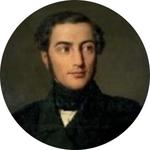
Architect
«I tried to furnish auditorium as lavishly as possible, yet at the same time to make it with ease, combining Renaissance together with Byzantine styles. White color covered with gold, bright crimson color draping of inside boxes, various on each floor stucco arabesques, and the main eye-catcher of auditorium – huge chandelier consisting of three tiers of lights and candelabras decorated with crystals – all of that received universal endorsement.»

Architect
Unusually rapid speed of reconstruction was explained by the fact that it had to be finished by coronation celebration of Emperor Alexander II. The Bolshoi Theatre, practically built anew, opened its doors on 20 August 1856 with opera Puritani by V. Bellini. Solemnity of the moment – splendor of auditorium filled with high society greeted by the members of emperor family – was captured by the future court painter of Romanov family, Mihály Zichy. A number of his wash drawings, including The Performance in Moscow's Bolshoi Theatre on the Occasion of the Coronation of Alexander II, was commissioned for coronation album which became one of the most impressive editions in Russia in terms of weight (thirty kg) and size (94 to 70 cm).
Choice of performance at the theatre opening reflected taste of the court aristocrats: Italian and French operas, performed by artists from Italian company, held leading position at the Bolshoi Theatre in 1860- 70s. Stars of the world opera regularly performed there and their work turned to be a sort of belcanto for artists of Moscow stage.
Grand opening of the Bolshoi Theatre
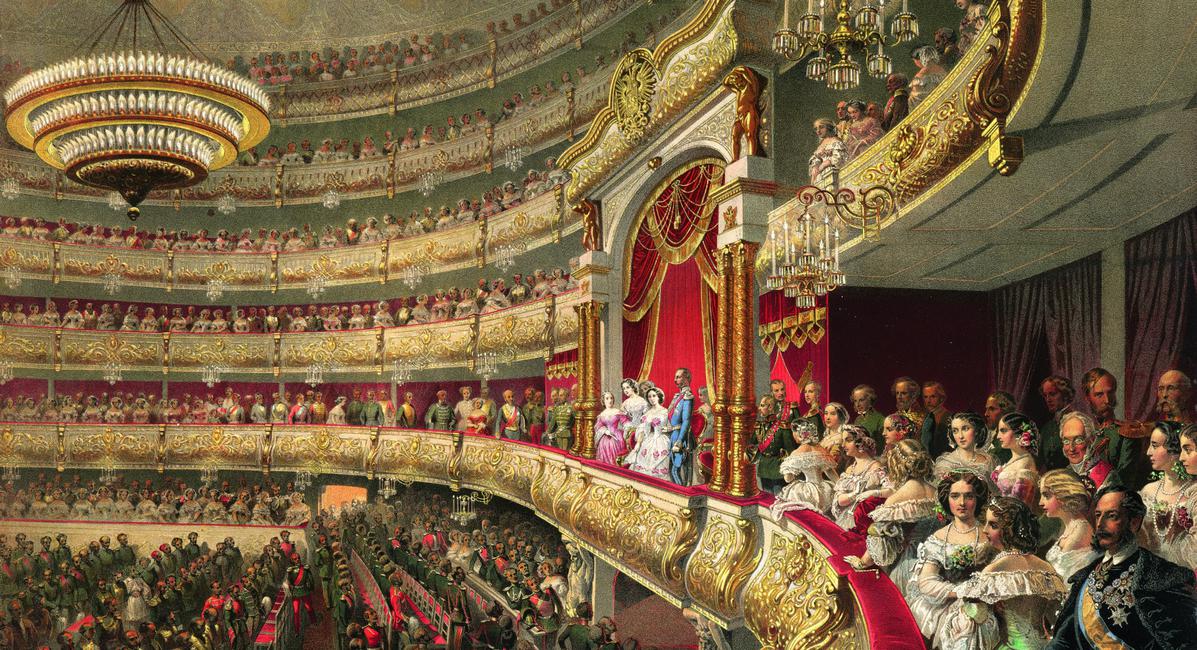
Watercolor by Mihály Zichy. 1856.
Grand opening of the Bolshoi Theatre
The world premiere of the ballet Don Quixote
The world premiere of the ballet Swan Lake
The world premiere of the ballet Don Quixote
One of the most important events in the history of ballet of the Bolshoi Theatre in the second half of 19 th сentury became production of Don Quixote, premiered on 14 (26 new style) December 1869 Shortly before this, Marius Petipa staged his first and the only full-length ballet specially for the Bolshoi Theatre. Although Don Quixote gained well-deserved fame as one of the most classic ‘Moscow’ ballet first of all thanks to Alexander Gorsky, who gave a proper structure to choreographic narrative and dynamism to a dance which differentiated ensemble scenes (and many of his followers who continued to stage their own versions of the performance), Petipa himself, payed respect to the tradition of the Bolshoi Theatre. He emphasized character dance, mainly in Spanish, he was an expert of this language after few years spending in Spain. (Two years later, he staged the ballet in Saint Petersburg and added fifth “wedding” act in classic form and style).
Swan Lake by Pyotr Ilyich Tchaikovsky’s world premiere took place at the Bolshoi Theatre on 20 February (4 March new style) 1877 Petipa and Lev Ivanov at Mariinsky Theatre staged canonical performance, well known around the world, almost twenty years later, when Tchaikovsky himself was not alive already. However, music was commissioned for the Bolshoi Theatre and was first played there. First production of the ballet did not prove to be successful, yet withstood considerable for that time number of performances. It paved the way, though, to a long array of theatric externalizations on Moscow stage: innovative, independent or based on achievements of Petipa-Ivanov.
The world premiere of the ballet Swan Lake
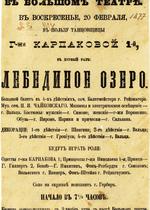
The first playbill of Swan Lake

The first playbill of Swan Lake
Tchaikovsky debuted at the Bolshoi Theatre not only as an author of the ballet, but also opera. 18 (30) January 1869 opera Voyevoda premiered, first opera that he wrote. Dissatisfied with his work, composer later destroyed a major part of the score. Nevertheless, it did not avert him from wanting to persevere in this genre.
Blossom of Russian opera at the Bolshoi began from production of Demon by Anton Grigoryevich Rubinstein (1879) and Eugene Onegin by Pyotr Ilyich Tchaikovsky (1881). One of the most repertory and beloved to Moscow audience opera became Eugene Onegin. Tchaikovsky, who placed chamber, intimate character of his composition at the heart, reflected in the genre by definition, which he named “lyrical scenes”, was concerned about “scope” and “fund allocation” of the big emperor theatres. He thought: “How will a beautiful image created by Pushkin be trivialized when it is moved to the stage full of routines and goofy traditions”. Eugene Onegin was first performed by students of Moscow Conservatory. It was premiered on the stage of Maly Theatre on March 1879 Two years later, 11 (23) January 1881, it was presented at the Bolshoi for the first time.
3 (15) February 1884 Mazeppa premiered at the Bolshoi Theatre. 19 (32) January 1887 the first performance of Cherevichki took place where composer debuted as a conductor with a great success. Later, he also conducted Eugene Onegin at the Bolshoi.
Very rapidly did the Bolshoi master peak achievements of Russian opera art: its repertoire included M.P. Mussorgsky, A.P Borodin, and N.A. Rimsky-Korsakov. At the same time, further exploration of western opera classic presented by repertoire as well as quite rare names continued.
<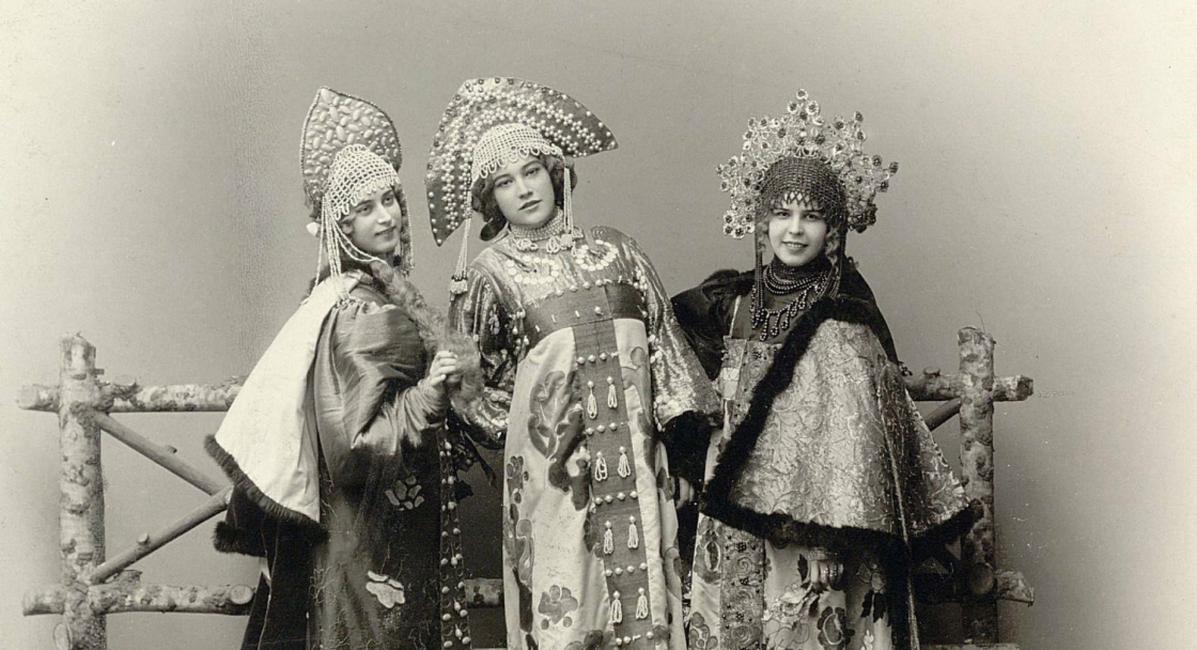
Photo: Karl Fischer Photo Atelier. After 1914.
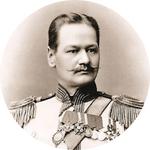
Distinguished theatre figure, the last director of the Imperial Theatres
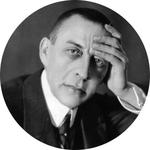
Composer, pianist, conductor, Bolshoi Opera Music Director (1904–06)

Distinguished theatre figure, the last director of the Imperial Theatres
The successes he achieved in this position for three years (1898-1901) earned him the post of director of (all) the Imperial Theaters, without preventing him from continuing to pay close attention to the Moscow theatres that remained under his direct leadership. The ‘Telyakovsky era’ in the Russian Imperial Theatre lasted until the end of its existence. Sincere enthusiasm for his work, disinterestedness, artistic intuition and delicate taste allowed Telyakovsky to bring the Bolshoi to the forefront while heading it: the theatre reached a world level and significance under him. Telyakovsky continued strengthening the director's and scenographic components of the performance, while paying great attention to the musical side of the matter. A new era began in the societal life, and therefore in art. Romanticism and melodrama as a way of being on the operatic stage were becoming a thing of the past. Musical theatre acquired new features. Telyakovsky searched for and found people capable of sharing and implementing his innovative ideas. It was he who contributed to the fact that Feodor Chaliapin and Sergei Rachmaninov moved from the Mamontov enterprise to the Bolshoi.
In 1904–06, the musical direction of the Bolshoi Theatre opera was carried out by Sergei Rachmaninov, who raised the musical component of the performances to an unprecedented level. Rachmaninov was entrusted with the preparation of the premiere of the opera A Life for the Tsar by M. Glinka "in the original musical version." But his debut took place earlier, in a performance from the current repertoire: for the first time at the Bolshoi, he conducted the opera Mermaid by A. Dargomyzhsky. Both the debut and the premiere of A Life for the Tsar were a huge success. Rachmaninov gained a reputation as an outstanding opera conductor. The triumph of A Life for the Tsar was also promoted by the actors involved in the performance: Feodor Chaliapin, Antonina Nezhdanova, Evgenia Zbrueva. Later, the repertoire of Rachmaninov at the Bolshoi Theatre included The Queen of Spades and Eugene Onegin by P. Tchaikovsky, Prince Igor by A. Borodin. And all three of Rachmaninov's operas first saw the spotlight at the Bolshoi Theatre: the first, Aleko, – a conservatory thesis – in 1893, the other two, The Covetous Knight and Francesca da Rimini, – during his service at the Bolshoi, in 1906, which was conducted by the composer himself.

Composer, pianist, conductor, Bolshoi Opera Music Director (1904–06)
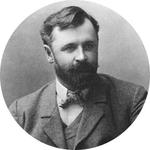
Painter, stage designer
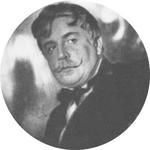
Painter, stage designer

Painter, stage designer

Painter, stage designer
One of the indisputable achievements of Telyakovsky was the invitation for the cooperation of wonderful young artists, especially Konstantin Korovin and Alexander Golovin. Stage design was equalized in rights with the rest of the components of the performance for the first time. Scenography, costumes, props were brought to life by the creative imagination of the artist (and a group of like-minded people), and acquired integrity and unity of style began to work fully to help the implementation of the general concept of the production. For the first time, Bolshoi stepped so far that it began to involve consulting historians in performance work. Thus, the preparation of the premiere of the opera A Life for the Tsar in 1904 included an expedition to the Kostroma province to collect ethnographic material. It was headed by a prominent archaeologist (part-time art critic) V. Sizov.
Telyakovsky's innovations, of course, met resistance from the theatrical routiners. But he also had powerful support – in the person of Feodor Ivanovich Chaliapin, who demonstrated not only vocal and artistic skills, but also contributed to the reform of opera direction, knew a lot about theatrical costume and worked on makeup himself. Moreover, the extremely successful premiere of the opera The Woman of Pskov (1901) was the fruit of the joint efforts of Chaliapin and the director (and singer) Romuald Vasilevsky. The outstanding achievements of Chaliapin and other remarkable artists of the Bolshoi were marked with honorary titles introduced in 1896. In 1908–09, the Bolshoi Choir (chief choirmaster Ulrich Avranek), several opera soloists, including Chaliapin, opened a new chapter in the history of the theatre, performing triumphantly abroad as part of Sergei Diaghilev's Russian Seasons in Paris. Chaliapin was forever entrenched in the minds of foreign listeners as an unsurpassed performer of the title role in Mussorgsky's opera Boris Godunov, which contributed a lot to the success that the opera won in the West.
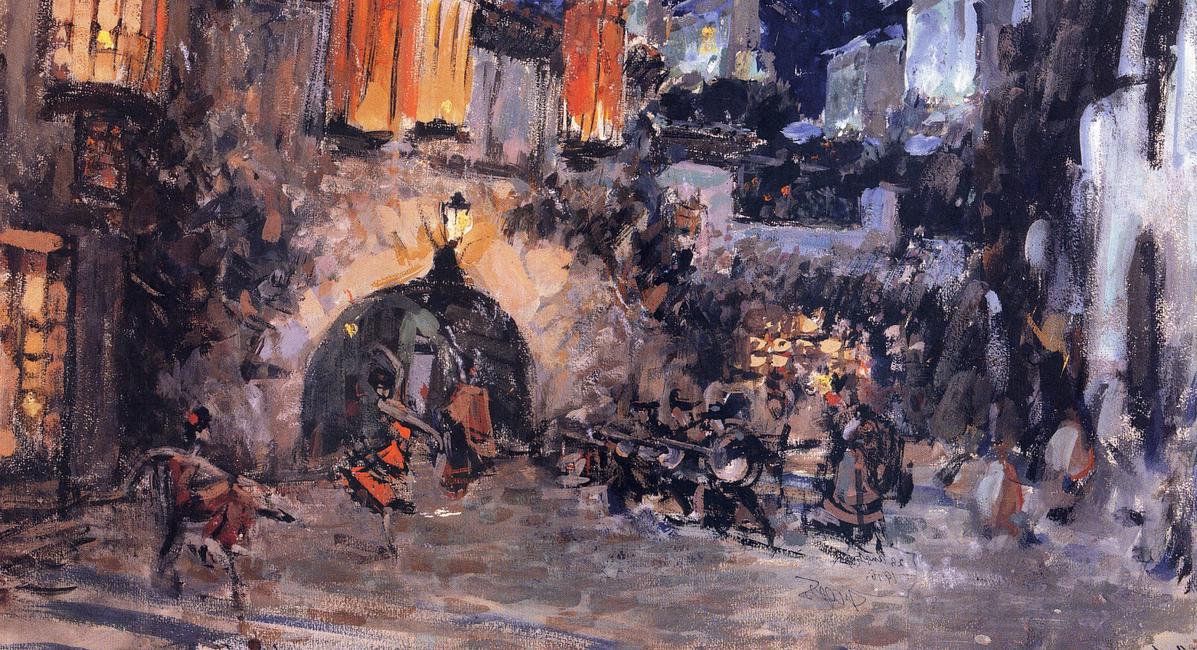

Ballet Master, Merited Artist of the Imperial Theatres

Ballet Master, Merited Artist of the Imperial Theatres
In ballet, the first decades of the 20th century passed under the care of Alexander Alekseyevich Gorsky. Having started his career at the Bolshoi Theatre with the transfer of Petipa's performances, in 1900 Gorsky staged his own version of the ballet Don Quixote on the Moscow stage, and in 1902 he became the head of the Bolshoi ballet troupe. He retained the choreographer's post until his death in 1924 A native of St Petersburg, Gorsky contributed in every way to the strengthening and flourishing of the Moscow style of classical ballet. He, like his leading colleagues in the opera shop, attached great importance to the decoration of performances and worked in collaboration with painters – the same Alexander Golovin and, to an even greater extent, Konstantin Korovin. Gorsky followed all modern trends in art and in ballet – he rejected the old ballet conventions, trying to achieve lifelike verisimilitude and organic quality to what was happening on the stage. That is why in his performances a continuous line of action is always traced, pantomime is distinguished by liveliness and meaningfulness, and ensemble scenes – by a detailed study of individual characters and a variety of acting.
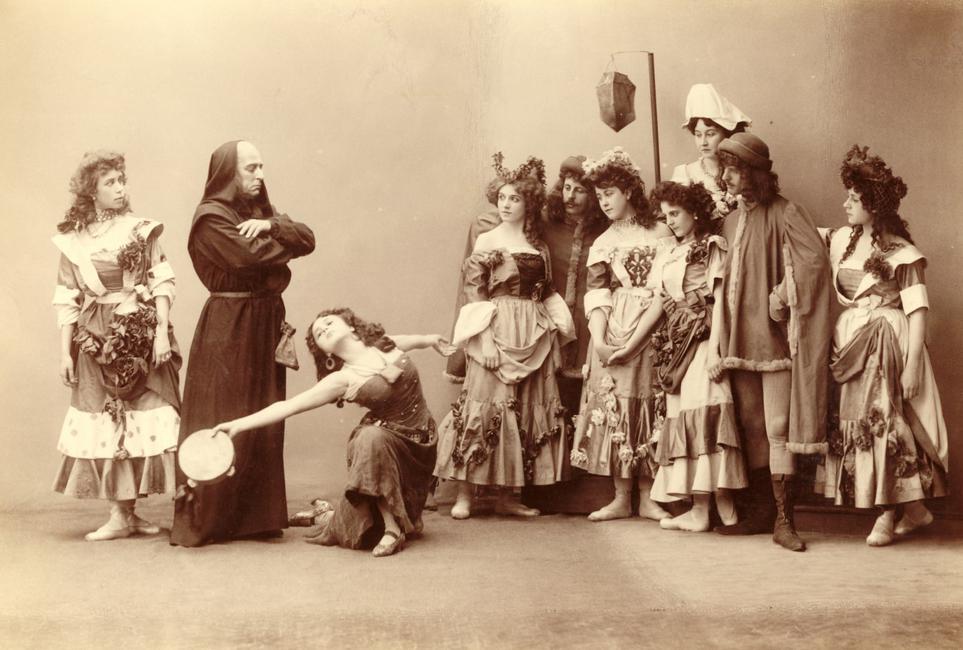
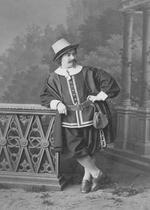
Anton Bartsal as Don Ottavio in Don Giovanni. Photo: Charles Bergamasco
The last performance of the Imperial Bolshoi Theatre was the performance of the opera Eugene Onegin

Anton Bartsal as Don Ottavio in Don Giovanni. Photo: Charles Bergamasco
Among the most famous productions of Gorsky are The Daughter of Gudula and Salammbo by A. Arends – ballets inspired by the novels of V. Hugo (the first is based on the plot of Notre Dame Cathedral). Gorsky's ideas were brought to life by the talented artists of the Moscow troupe – Sofia Fedorova, Vera Karalli, Alexandra Balashova, Mikhail Mordkin. At times he managed to find a common language with the prima ballerina Ekaterina Geltser and the principal Vasily Tikhomirov, who in both remained generally faithful to the old ballet canon which they were brought up on. One of Geltser's best roles was the title role in the ballet Salammbo, which allowed the artist to sparkle not only with her dancing skills, but also with her artistic talent. The ballets Love is Fast! to the music of E. Grieg and Schubertiana were a great success of their collaboration.
The last performance of the Imperial Bolshoi Theatre was the performance of the opera Eugene Onegin. It took place on February 28, 1917 Two weeks later, on March 13, 1917, the performance was given by the State Bolshoi Theatre. It was a "free solemn performance" in which the key role was assigned to the allegorical living picture of a “Liberated Russia”. On the same evening, at the Bolshoi the Internationale was heard for the first time. Soon the Bolshoi Theatre received administrative autonomy. The artistic director elected was the public's favorite, the famous tenor (and a lawyer by education) Leonid Sobinov, who believed that "the Bolshoi Theatre opens the first page of its new free life." The general feverish excitement in the artistic environment reached its highest intensity. There were endless rallies and meetings, the boldest hopes were pinned on the new regime, the uncertainty and impending devastation frightened and made people think about the future, including the ‘liberated’ Bolshoi Theatre.
The last performance of the Imperial Bolshoi Theatre was the performance of the opera Eugene Onegin
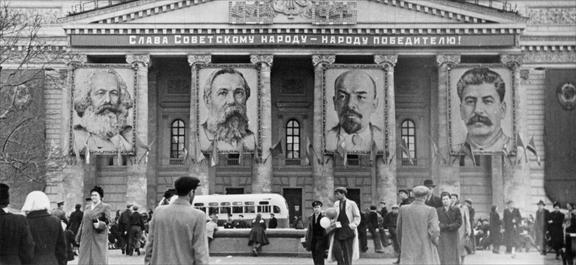
After October Revolution, existence of the theatre was put under danger. It took few years for authorities of the won proletariat to abandon idea to shut the Bolshoi Theatre down. New government was not consistent: in 1919 academic status was granted to six of the oldest theatres, including the Bolshoi. Nevertheless, in few days topic of closing them down was hot on agenda again.
Academic status was granted to the Bolshoi Theatre
Academic status was granted to the Bolshoi Theatre
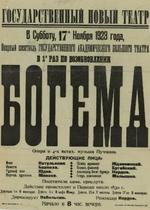
The first “post-revolution” playbill of opera La bohème
An important role in the rescue played people's Commissar of Education, Anatoly Lunacharsky, and Elena Malinovskaya, from 1918 – in charge (commissar) of Moscow State theatres, from 1920 – director of the former Imperial Bolshoi Theatre. At the beginning, company protested trying to figure out own political inclinations, and chose to cooperate with new authorities in the end. Especially since hard times arrived and government offered financial support to the newly formed state theatre from the state funds. Clearly, theatre experienced significant personnel losses caused by emigration of some of its artists. However, despite the hardships, endless novelties introduced to administration system and ideological control, company overall was able to sustain as the whole creative body and save the repertoire which was built through the years.
Even in 1917-19 opera repertoire could impress with its titles and names diversity. Symphonic concerts were resumed in 1919 In 1921, there was a grand opening of Beethoven Hall (currently Bolshoi Imperial Foyer), which functioned for many years as the space for chamber concerts of orchestra artists and soloists of opera company. In 1922, artists of the Bolshoi started to perform on stage of so-called New Theatre – former Nezlobin Theatre (currently this building is occupied by Russian Academic Youth Theatre).
Gradually, theatre life returned to normal. Old repertoire went through revision: outdated, weak in the artistic sense performances were removed, those that were admitted successful, perpetuated for many years. Grand style features started to form. It was characterized by the scale and spectacle of stage solutions, group scenes and by historic reality of the depicted epoch. New era brought creation of contemporary repertoire forward, which would respond to epoch spirit from ideological point of view and would reflect search of new forms attuned to it.

The first “post-revolution” playbill of opera La bohème
Celebration of the Bolshoi Theatre centennial
Cast of the company remained the same and it could still be proud of stellar names. Sobinov, in 1921 was selected as Director of the Bolshoi Theatre, continued making his fans happy with his unique voice. Last performance of Feodor Chaliapin took place in May 1922 Antonina Nezhdanova continued to perform and constituted a beautiful vocal duet with Sobinov. Leonid Savransky, Anton Bonachich, Vasily Petrov sang there. Right before the revolution and after it, artists, who were to become favorites of future generation of viewers, joined in: Elena Katulskaya, Ksenia Derzhinskaya, Elena Stepanova, Nadezhda Obukhova, Valeria Barsova and many others. Conductors Nikolai Golovanov and Vasily Nebolsin came forward.
By the middle of 20s, the Bolshoi did not need to prove the right to existence anymore and be beware of those who invoked to drop art from ‘the ship of contemporary’. Status of the Bolshoi strengthened that much that in 1925 a decision was made to celebrate its one hundred anniversary in a big way. Opening of the building of the Bolshoi Petrovsky Theatre in 1825 was taken as the point of departure.
Celebration of the Bolshoi Theatre centennial

Alexander Gorsky still played ‘first violin’ in ballet during first after revolutionary years at the Bolshoi. In 1919, after his first production on Moscow stage, he offered his own version of The Nutcracker, which he interpreted in the spirit of a magical children tale. Next, tireless reformer, once again reviewed canonical editions of ballets Swan Lake and Giselle. Swan Lake (1920) received benign ending and clear separation between good and evil; consequently, main part was divided between two artists. Dances solely on high heels and Willis dance in underground world in shrouds, became legacy of new Giselle (1922).
One of the new trends in ballet life routine became the opportunity for artists who wanted to try themselves as choreographers to get permission to do own productions. Kasiyan Goleizovsky became the most talented and interesting of all who experimented at the time on stage of the Bolshoi Theatre. His signature approach was in creative supports, complex composition of poses, multilayered groupings of artists. He preferred free plasticity to tradition ballet lexicon. In 1925, Goleizovsky, founder and director of his own company, Moscow Chamber Ballet, received an invitation from the Bolshoi, where he staged two opuses: parody to romantic ballet Teolinda to music by F. Schubert and innovative in form Joseph the Beautiful. Artists of older generation adherent to values of classic dance absolutely did not accept Goleizovsky’s art, supported by youth.

Fyodor Fedorovsky. 1932.

The Bolshoi Theatre Ballet Artistic Director (1936-39) and opera stage director (1936-56)
At the end of 30s, interest in constructivism, allegorical way of presenting material and other achievements of revolutionary art, which was common for young choreographers at the beginning of 20s, changed back to traditional forms. Example of this approach can be observed in ballet The Red Poppy by R. Glière staged in 1927 by Vasily Tikhomirov, who managed ballet company at the time, and by Lev Lashchilin. Melodrama, telling the story about the love of Chinese girl and captain of soviet ship unfolding amid class confrontation and Chinese exotics, was taken very well by the audience and was secured in the repertoire for a long time. Image of Chinese girl Taï-Choa is a significant acting accomplishment of the last period of career of prima ballerina Ekaterina Geltzer, leading artist of ballet company of the Bolshoi before revolution and decade later. The Red Poppy became one of the first prototypes of the dramatic ballet genre that prevailed on soviet ballet stage.
At the beginning of the 30s, since there was a need to raise the prestige of the capital stage, practice to replenish the Bolshoi ballet company with the best people from Leningrad Theatre of Opera and Ballet resumed. Marina Semyonova, Alexei Ermolaev, Pyotr Gusev (Galina Ulanova swole the ranks in 40s) all moved to the Bolshoi. Their virtuoso technique and artistic temperament served as a benchmark in art for colleagues in Moscow. Leningrad artists joined the Bolshoi company, best Leningrad dramatic ballets were added to repertoire: The Flames of Paris by B. Asafiev in production by V. Vainonen (1933), The Bright Stream by D. Shostakovich in production by Fyodor Lopukhov (1935), The Fountain of Bakhchisarai by Asafiev mounted by Rostislav Zakharov (1936), Romeo and Juliet by S. Prokofiev staged by Leonid Lavrovsky (1946), Laurencia by A. Krein in production by Vakhtang Chabukiani (1956). It would seem that such successful ballet as The Bright Stream was brought into notoriety after an editorial article in newspaper Pravda titled “The Ballet Falseness” where it was skewered. After this article, ballet disappeared from the repertoire in a moment, not lasting even for two months. On the contrary, success of The Fountain of Bakhchysarai, which meant to become repertoire longliver, brought position of Bolshoi ballet and opera artistic director for Rostislav Zakharov.

The Bolshoi Theatre Ballet Artistic Director (1936-39) and opera stage director (1936-56)
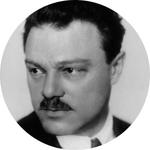
The Bolshoi Theatre Principal Conductor (1936-43)

The Bolshoi Theatre Principal Conductor (1936-43)
Plethora of outstanding artists, who belonged to Moscow school and transferred from Leningrad, unleashed their potentials in contemporary ballets and classic production, as well as in original ballets staged at the Bolshoi Theatre. They were Sulamith Messerer, Sofia Golovkina, Irina Tikhomirnova, Olga Lepeshinskaya, Asaf Messerer, Mikhail Gabovich and many others.
Production of opera Lady Macbeth of the Mtsensk District by Dmitri Shostakovich, staged at the Bolshoi in 1935 became a tragic page in the history of Russian opera theatre. A powerful strike was made at Shostakovich’s opera compared to The Bright Stream a year later. The title of an editorial article for newspaper Pravda that killed Lady Macbeth, – “Muddle instead of Music” – became a household name and is well known even to those far from music.
In 1936, Samuil Samosud moved from Leningrad Maly Operny (currently Mikhalovsky) to the Bolshoi as musical director. Talented musician, he was perfectly navigating through political situations, supported the course towards realism as much as he could and rejected all formalistic experiments. Paying humble tribute to attempts to modernize and make classic operas of the past a mainstream, the Bolshoi completely switched to productions of grand style, featured with a scale, magnitude and exceptional longlife.
Opera premiers of M. Glinka are linked with Samuil Samosud name and had a tremendous public resonance. Special meaning was attached to A Life for the Tsar, which disappeared from the repertoire for more than twenty years because of the wrong ideological content. Preparation of the premiere was broadly covered in the press: the audience had been prepped for the masterpiece comeback, which had relevant political tone. Libretto was changed, poet Sergei Gorodetsky wrote new lyrics. Name of the main hero was put into the title. Now, Kostroma peasant Ivan Susanin laid his heroic deeds not to the first of Romanov, but to the Motherland. It could not be more relevant for the world that was getting ready for a big war. National-patriotic pathos, common for performance, made it a signature of the Bolshoi Theatre for a long time. Premieres were noted with wonderful vocal and acting works: it involved leading artists of opera company – Alexander Pirogov, Mark Reizen, Maxim Mikhailov, Valeria Barsova, Glafira Zhukovskaya, Bronislava Zlatogorova and others.
Theatre’s evacuation to Kuibyshev
Theatre’s evacuation to Kuibyshev
During evacuation such operas as The Queen of Spades, Eugene Onegin, Ivan Susanin, Cherevichki, La Traviata, Il Barbiere di Siviglia, Carmen, ballets Swan Lake, Don Quixote, The Fountain of Bakhchisarai were shown at Kuibyshev Palace of Culture and adapted to limitations of the new stage. Exactly here, on 5 March 1942, orchestra of the Bolshoi Theatre under Samuil Samosud performed legendary Seventh (Leningrad) Symphony of Dmitri Shostakovich, who was also evacuated to Kuibyshev and went there together with artists of the Bolshoi Theatre.
During that time in Kuibyshev, the Bolshoi Theatre donated 198 liters of blood, washed thousands of sets of winter military outfits, sent seven brigades to the front, provided financial aid to the families of frontline men, gathered money for Kuibyshev tank column and to build squadron, signed military loans. Total amount of collections that went to the defense fund from concerts and performances which took place in Kuibyshev was 1 568 768 rubles.
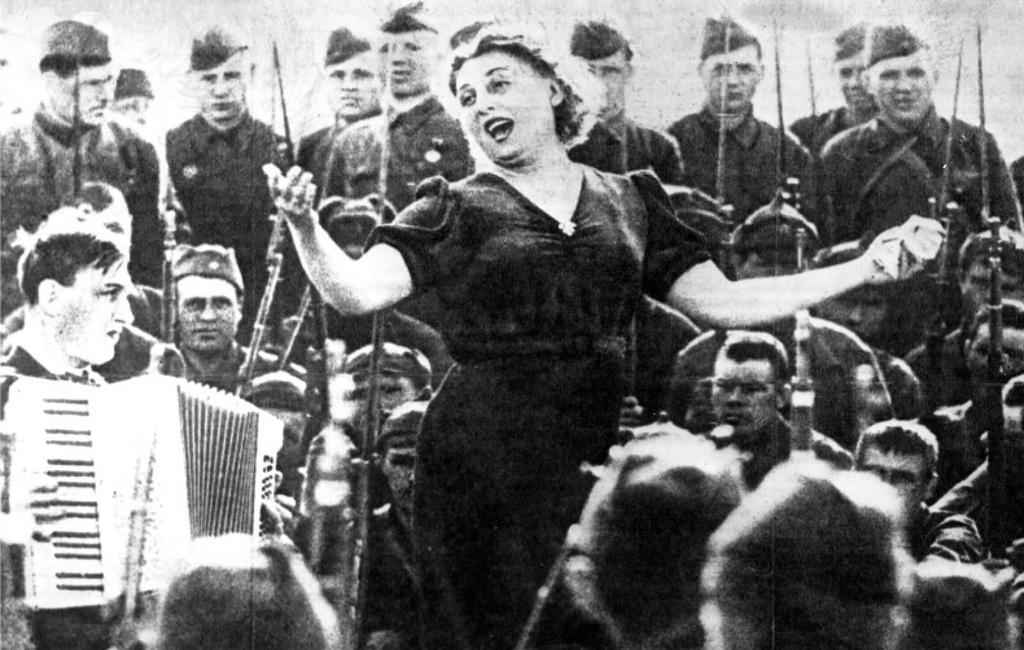
On the 22nd of October 1941, the building of the Bolshoi Theatre was bombed
On the 22nd of October 1941, the building of the Bolshoi Theatre was bombed
On the 22nd of October 1941, the building of the Bolshoi Theatre was bombed. Shockwave passed obliquely between portico columns, went through the facade wall and caused considerable damage in the Lobby. Despite wartime hardship and severe cold, restoration work for the Bolshoi started during winter 1942 Nevertheless, despite that historical building was closed, performances were taking place in Moscow. The rest of the company group continued to work in the branch building, which currently belongs to The Moscow Operetta Theatre. Work of the so-called frontline branch was managed by Mikhail Gabovich.
Young alumni of choreographic college and future world stars like Maya Plisetskaya and Raisa Struchkova joined the ballet company during the war. In 1944, Leonid Lavrovsky, as new head ballet master together with leading prima ballerina Galina Ulanova, moved from GATOB named after Kirov in Leningrad. It underlined the status of the Bolshoi as the main country music theatre one more time.
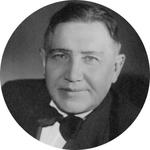
The Bolshoi Theatre conductor (1919-28; 1930-36), Principal Conductor (1948-53)
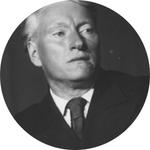
Scene painter, from 1921 – at the Bolshoi, Principal Scene Painter (1927-29; 1947-53)
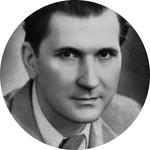
Choreographer, the Bolshoi Theatre Principal Ballet Master (1944-64)
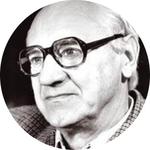
Opera stage director, the Bolshoi Theatre Principal Stage Director (1952; 1955; 1956-63; 1970-82)

The Bolshoi Theatre conductor (1919-28; 1930-36), Principal Conductor (1948-53)

Scene painter, from 1921 – at the Bolshoi, Principal Scene Painter (1927-29; 1947-53)

Choreographer, the Bolshoi Theatre Principal Ballet Master (1944-64)

Opera stage director, the Bolshoi Theatre Principal Stage Director (1952; 1955; 1956-63; 1970-82)
In 1948, two years after previous performance saw limelight, Boris Godunov by M. Mussorgsky was premiered. At the Bolshoi Theatre, this opera traditionally went in Rimsky Korsakov’s version. Another scene At Vasily the Blessed in Mikhail Ippolitov-Ivanov’s instrumentation was added (first it was shown at the Bolshoi in 1927). Performance practically as it is now was staged in 1946, but another public scene was removed – Near Kromi. It was viewed as an unfortunate oversight by authority. In 1948, this scene was added back. Classic performance of grand style was acknowledged as a significant creative accomplishment of maestro Nikolai Golovanov, director Leonid Baratov and artist Fyodor Fedorovsky. Obviously revised, it is still an integral part of the so-called Bolshoi Golden Fund.
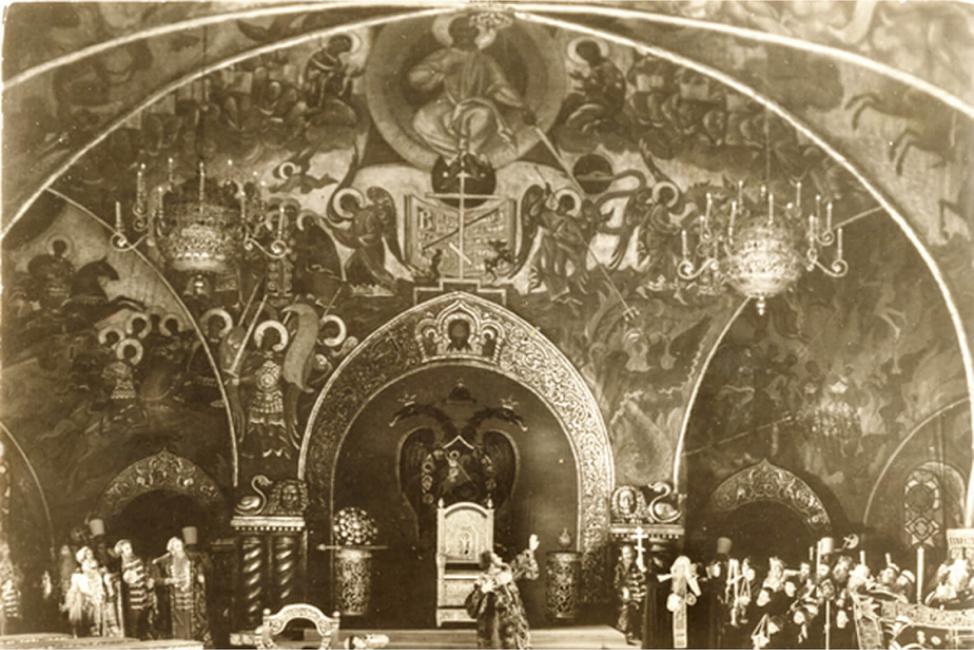
Second half of XX century went under the sign of Boris Pokrovsky for opera at the Bolshoi Theatre. He was not only an outstanding opera director, but also a talented organizer of theatrical business. In 1952–62 and 1970–82 Pokrovsky was chief director of the Bolshoi Theatre and was bringing up artists of the opera company as his loyal like-minded people of ‘synthetic’ type.
Pokrovsky for the first time on Russian stage – at the Bolshoi Theatre – produced opera A Midsummer Night's Dream by B. Britten (1965) and The Gambler by S. Prokofiev (1974). He carried out opera Dead Souls commissioned by the theatre to Rodion Shchedrin. Its world premiere took place in 1977 Pokrovsky’s performances, around forty in total, featured amazing artistic wholeness, persuasive character development and organic combination of vocal and acting. In 1972, Pokrovsky initiated the creation of Moscow Chamber Music Theatre. It received his name in 2009 after his death, and later joined Bolshoi to become a part of a group of Chamber Stage in 2017.
“For us, actors raised by Boris Aleksandrovich, he is just our Master. He taught us to really love and understand opera. In each performance by Pokrovsky, a new artist is unveiled; a new acting phenomenon is born”.
Artistic cast of company is distinguished with the brightest talents in any randomly chosen decade. Higher standards of opera within different years were carried out by conductors Alexander Melik-Pashaev, Ariy Pazovsky, Nikolai Golovanov, Yuri Simonov, Mstislav Rostropovich, Evgeny Svetlanov, Alexander Lazarev... Sparkled Maxim Mikhailov, Mark Reizen, Maria Maksakova, Elizaveta Kruglikova, Elena Katulskaya, Irina Arkhipova, Elena Obraztsova, Galina Vishnevskaya, Tamara Sinyavskaya, Tamara Milashkina, Makvala Kasrashvili, Arthur Eisen, Evgeny Nesterenko, Vladimir Atlantov, Zurab Sotkilava, Yuri Mazurok – list can go on.

Choreographer, the Bolshoi Theatre Principal Ballet Master (1964-95)
Period of 1944–64 became the epoch of Leonid Lavrovsky at the Bolshoi. He was at the head of the ballet company for twenty years. He did not glorify Bolshoi with ingenious ballets, yet he moved his Romeo and Juliet by S. Prokofiev (1946) to the capital stage – performance, which became favorite to the same extent for Moscow audiences as it was in Leningrad. It was kept in the repertoire for many years and continuously revived. Galina Ulanova who was the first to perform the title part at Kirov Theatre, repeated and sustained her legendary success in production staged at the Bolshoi.
In 1956, Asaf Messerer, based on production of Alexander Gorsky, Petipa and Lev Ivanov, staged his own version of ballet Swan Lake. This particular version became a part of the legendary tours of the ballet company in London, after which it received name of the Bolshoi Ballet worldwide. Triumphant success of the tour was shared between young future stars such as Nina Timofeyeva and Nikolai Fadeyechev, as well as with already known Marina Kondratieva, Raisa Struchkova and other leading soloists of the company. Yet the real fame was descended on Galina Ulanova whose career was close to the sunset. Her embodiment of Giselle, Juliet and Maria from The Fountain of Bakhchisarai was admitted to be almost ideal. This tour laid the ground to a friendship between Bolshoi and famous impresario Victor and Lilian Hochhauser who continued to organize tours for Bolshoi in England throughout decades. In 2016, diamond anniversary with a sparkle was celebrated of those discovered in 1956.
Same period in ballet, as Boris Pokrovsky ‘did’ in opera, even a longer one, can be called the epoch of Yuri Grigorovich, who was artistic director of ballet company of the Bolshoi in 1964–95. Grigorovich transferred his successful Leningrad ballets to Moscow stage, created his versions of practically all classic ballets in the repertoire, staged dances in few opera performances and composed five original ballets: The Nutcracker by P. Tchaikovsky (1966), Spartacus by A. Khachaturian (1968), Ivan the Terrible to music by S. Prokofiev (1975), Angara by A. Eshpai (1976) and The Golden Age by D. Shostakovich (1982).

Choreographer, the Bolshoi Theatre Principal Ballet Master (1964-95)
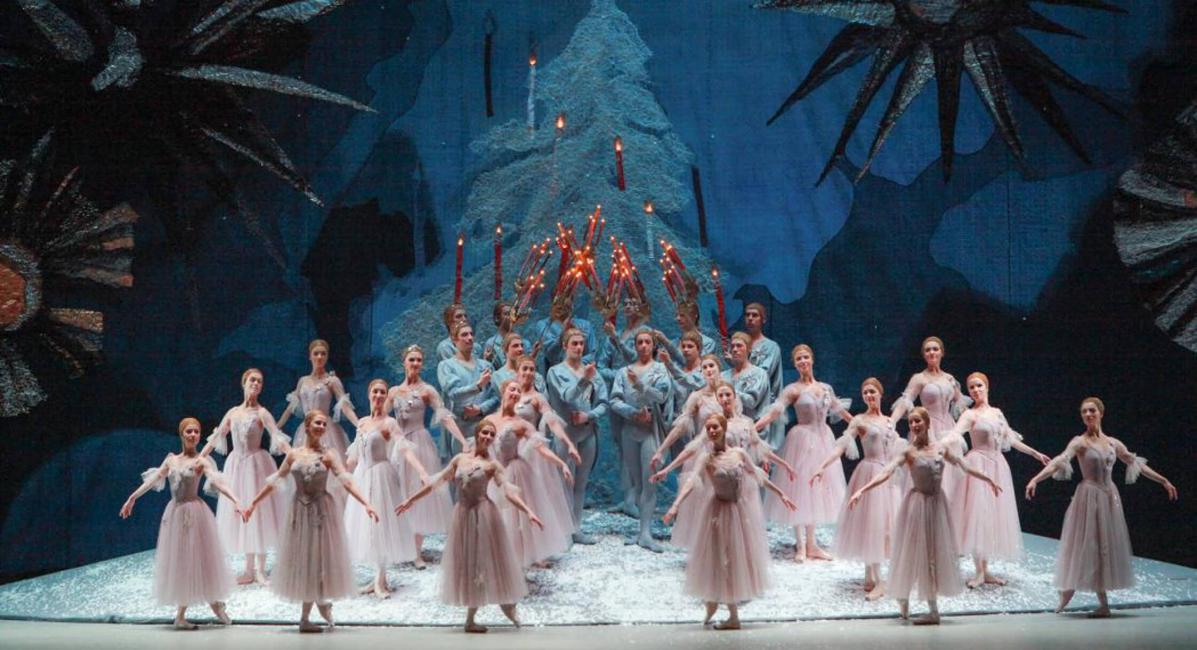
Photo: Damir Yusupov.
The Nutcracker had the highest box office throughout Bolshoi history: every year, thousands of viewers want to go on a journey with the main heroes to the country of Christmas tree. Grigorovich, who attentively listened to the music of Tchaikovsky, not only to its crystal sounds but also to sad, aching intonations, shared the story of maturity of a young soul in this not so children’s tale. However, his main masterpiece became Spartacus with its rebellious spirit, a will to win, and resistance. Whatever ideological meanings would be exposed to the audience of different epochs and countries, it is still one of the most in demand for domestic and abroad viewers. Wonderful artists who performed it first under Grigorovich created unforgettable portraits of its heroes: Ekaterina Maximova – Masha and Phrygia, Vladimir Vasiliev – Spartacus and the Nutcracker-Prince, Yuri Vladimirov – Ivan the Terrible, Natalia Bessmertnova and Mikhail Lavrovsky – Phrygia and Spartacus.
At the beginning of the second half of the XX century, leading positions in different years were among Raisa Struchkova, Marina Kondratieva, Nikolai Fadeyechev, Nina Sorokina, Lyudmila Semenyaka, Alexander Godunov, Nina Ananiashvili, Andrei Uvarov, Sergei Filin.
At the end of XX century, despite all hardships of institutional and financial means, new versions of classic ballets were staged at the Bolshoi (Swan Lake, Giselle, in production by Vladimir Vasiliev, theatre chief manager at the time). Balanchine’s ballets were staged, famous ballet of John Cranko The Taming of the Shrew to music by D.Scarlatti was moved to Moscow stage, where the part of Petruchio was magnificently performed by Alexander Vetrov, one of the leading soloists of the Bolshoi ballet 1980-90s.

In the early 2000s, the theatre, along with the entire country, began to gradually overcome of the decline it experienced in the 1990s. The introduction of the contract system, the creation of a production department, the expansion of cooperation with the leading theaters and festivals of the world, the invitation for cooperation to famous Western conductors, directors, choreographers and artists had significantly expanded the creative horizons of the theatre.

The Bolshoi Theatre Music Director and Principal Conductor (2001 – 09)
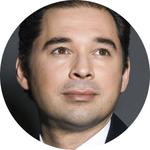
The Bolshoi Theatre Music Director and Principal Conductor (2014 – 22)

The Bolshoi Theatre Music Director and Principal Conductor (2001 – 09)
In 2001, Alexander Vedernikov was appointed to this post. The practice of showing rental performances was introduced. Among other productions, the audience of the Bolshoi saw two famous performances of the Teatro alla Scala in Milan: Adrienne Lecouvreur by F. Chilea (2002), directed by Lamberto Pugelli and Falstaff by G. Verdi, directed by Giorgio Strehler (2005). The Bolshoi's involvement in the world theatrical process was facilitated by its participation in co-productions, which also became more and more common over the years. Among the most successful of them with the public and critics were R.Wagner's The Flying Dutchman directed by Peter Konwichny (2004, co-production with the Bavarian State Opera), and Madama Butterfly by G. Puccini, staged by R. Wilson (2005, co-production with the Opera national de Paris). The conductor of both performances was maestro Vedernikov. This is how the largest opera directors of our days came to the Bolshoi. Very quickly, Dmitri Tcherniakov acquired the same status, staging his stage version of Eugene Onegin at the Bolshoi in 2006 (conducted by maestro Vedernikov). The performance has become one of the brightest in the recent history of the Bolshoi and was performed with great success in many countries. Dmitri Therniakov's staging of Ruslan and Lyudmila was the first performance to be seen on the Historical Stage in 2011 after its reconstruction. And in 2020, cooperation with Mr. Tcherniakov continued with the production of the opera Sadko (conducted by Timur Zangiev).
In 2014, Tugan Sokhiev was appointed to the post of chief conductor and musical director of the Bolshoi, in many ways sharing the previously introduced repertoire and personnel policy. In the performances of the theatre, guest stars are constantly busy, including those of the highest rank – Anna Netrebko, Maria Guleghina, Olga Peretyatko, Khibla Gerzmava, Ildar Abdrazakov. Wonderful productions of Handel's Baroque operas Alcina and Rodelinda, as well as Britten's Billy Bud, have been run at the Bolshoi for several seasons thanks to his collaboration with the English National Opera. The experience of co-production with this theatre was also recognized as extremely fruitful.

The Bolshoi Theatre Music Director and Principal Conductor (2014 – 22)
Among the titles that appeared in the repertoire were The Adventures of a Rake by I. Stravinsky (2003, first production at the Bolshoi Theatre, conductor Alexander Titov), Turandot by G. Puccini (2002, conductor Alexander Vedernikov) and Fiery Angel by S. Prokofiev (2004, first production at the Bolshoi Theatre; conductor Alexander Vedernikov). A new production of the opera Boris Godunov was carried out by the famous film director Alexander Sokurov. On the initiative of Tugan Sokhiev, the dramatic legend La Damnation de Faust by G. Berlioz (2016) and the opera Salome by R. Strauss (2021) were staged. The directors of the drama theatre began to actively come to the Bolshoi – Alexander Borodin, Robert Sturua,Temur Chkheidze, Rimas Tuminas, Evgeny Arie, Evgeny Pisarev.
The new century in ballet began with an exclusive production of the ballet La Fille du Pharaon by C.Pugni, the first full-length ballet by Marius Petipa, lost and recreated anew by order of the Bolshoi Theatre, by the master of ballet authenticity Pierre Lacotte. In the 2003-04 season, as if continuing the established tradition decades ago, Svetlana Zakharova, the leading ballerina of the capital's stage, moved to the Bolshoi Theatre from the Mariinsky, whose unique talent was brilliantly displayed, including in her performance of Lacotte.
In 2004, the year following the premiere of the ballet The Bright Stream by D. Shostakovich in his production, the position of Artistic Director of the ballet troupe was taken by Alexei Ratmansky. Over the four years of his time at this rank he realised the ballet productions: Jeu de cartes by I. Stravinsky (as part of the festival celebrating the 80th anniversary of Maia Plisetskaya, 2005), Le Corsaire (in the tandem with Yuri Burlaka, 2007) and The Flames of Paris (using the choreography of V. Vainonen, 2008). Later this list was enriched by Russian Seasons to music by Leonid Desyatnikov (2008), Lost Illusions by L. Desyatnikov (2011) and Romeo and Juliet by S. Prokofiev.

The Bolshoi Theatre Ballet Artistic Director (2011-16)

The Bolshoi Theatre Ballet Artistic Director (from 2016)

The Bolshoi Theatre Ballet Artistic Director (2011-16)

The Bolshoi Theatre Ballet Artistic Director (from 2016)
The next artistic director, Sergei Filin, demonstrated extraordinary personnel solutions. Very daring was the invitation to the Bolshoi the soloist of the American Ballet Theatre David Hallberg to the status of a full-fledged artist of the troupe – an offer he could not refuse, and therefore for several years regularly participated in the performances of the Bolshoi Theatre.
Makhar Vaziev, who took over as artistic director of the Bolshoi Ballet in 2016, has prioritized the search for talent both outside the troupe and within its ranks. Both under Sergei Filin and under Makhar Vaziev, the Bolshoi Ballet continued to be replenished with artists from the Mariinsky Theatre. In this way, both Evgenia Obraztsova and Yulia Stepanova, who became prima ballerinas, joined the troupe.
In the 21st century, the troupe got a real opportunity to try themselves in a variety of genres and styles. The Bolshoi Ballet mastered new ballets by George Balanchine, as well as ballets by John Neumeier, Jiri Kilian, William Forsythe, Hans van Manen, Maurice Bejart, the puzzling choreography of Twyla Tharp and the contemporary style in the opuses of Mats Eck, Paul Lightfoot and Sol Leon.
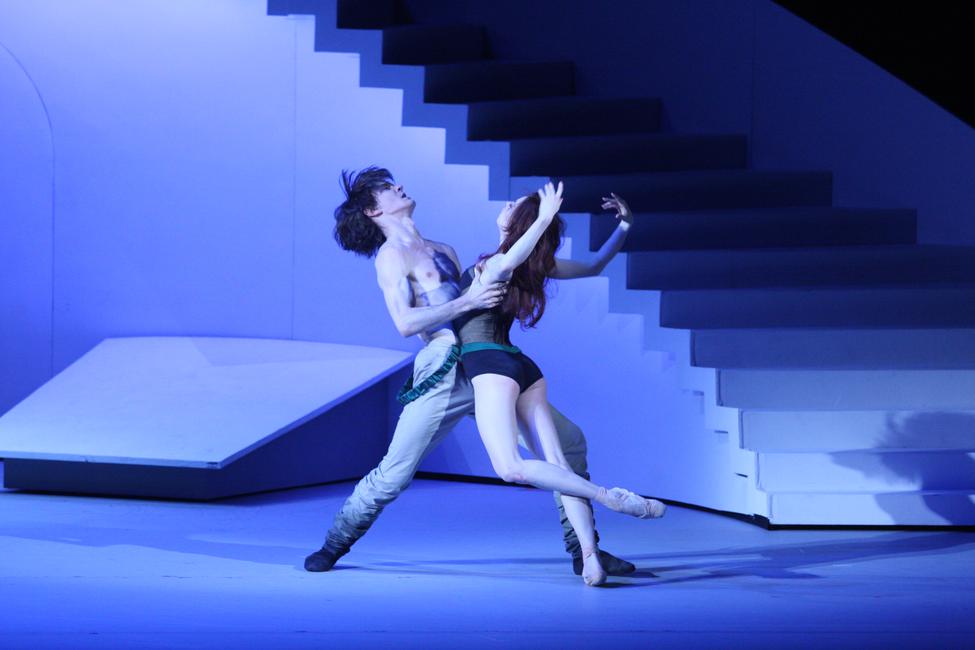
Photo: Elena Fetisova.
The world premiere of the one-act ballet Misericordes to the music of Arvo Pärt, staged by Christopher Wheeldon, and the world premiere of The Taming of the Shrew to music of Dmitry Shostakovich, were staged by Jean-Christophe Maillot (this was the first time when the famous French choreographer changed his principles and staged a performance especially for another troupe, not for the Monte Carlo Ballet directed by him).
Finally, the Bolshoi Ballet began to order music. The author of three ballets (2015, A Hero of Our Time; 2017, Nureyev; 2021, The Seagull), written especially for the Bolshoi Theatre, was the young St. Petersburg composer Ilya Demutsky. In 2019, Christopher Wheeldon once again collaborated with the Bolshoi Ballet Company, bringing his bright, spectacular ballet The Winter's Tale by J. Talbot, based on the play of the same name by Shakespeare, to the Moscow stage.
In 2021 the repertoire was enriched by a large-scale ballet by Edward Clug, whose popularity had long expanded beyond the Maribor Ballet (Slovenia) headed by him. It was one of the most ambitious projects of his career: the choreographer decided to demonstrate to the Russian audience his vision of the novel Master and Margarita by Mikhail Bulgakov.
